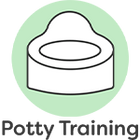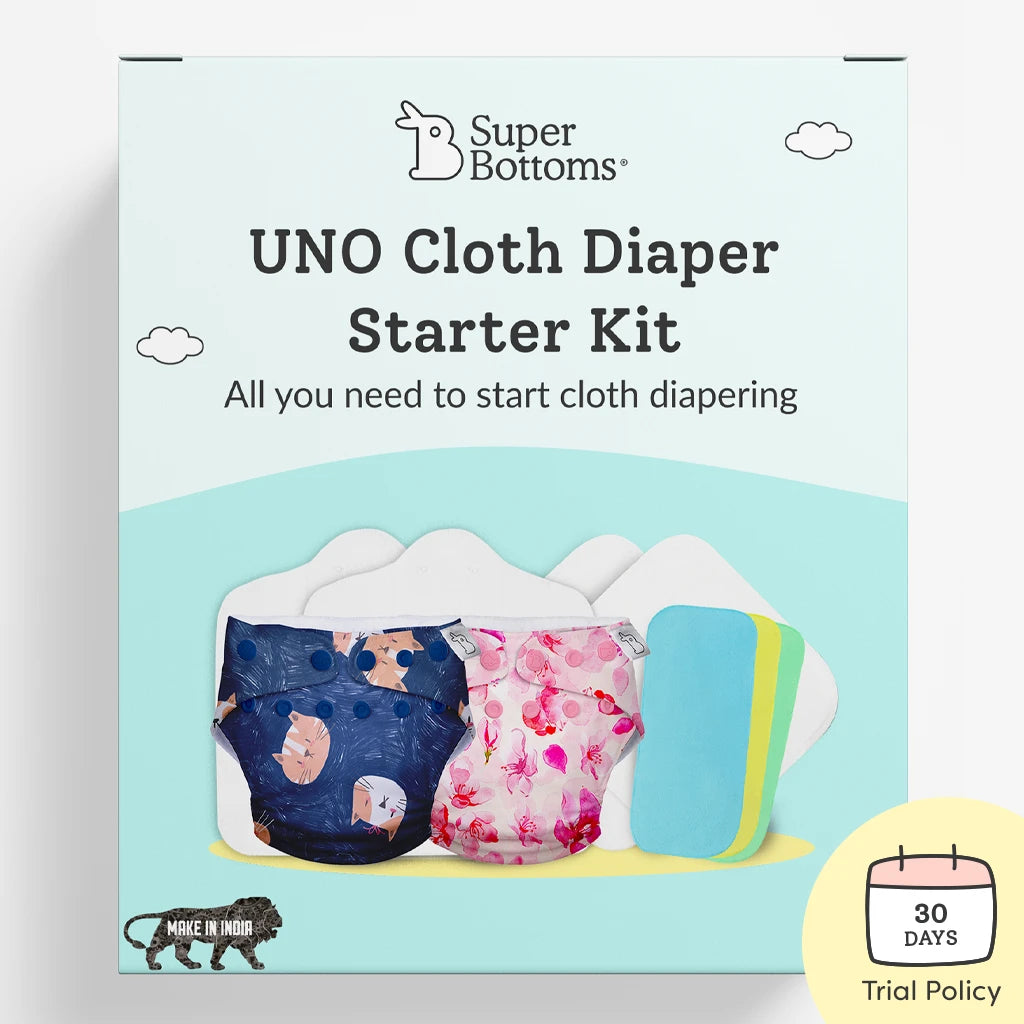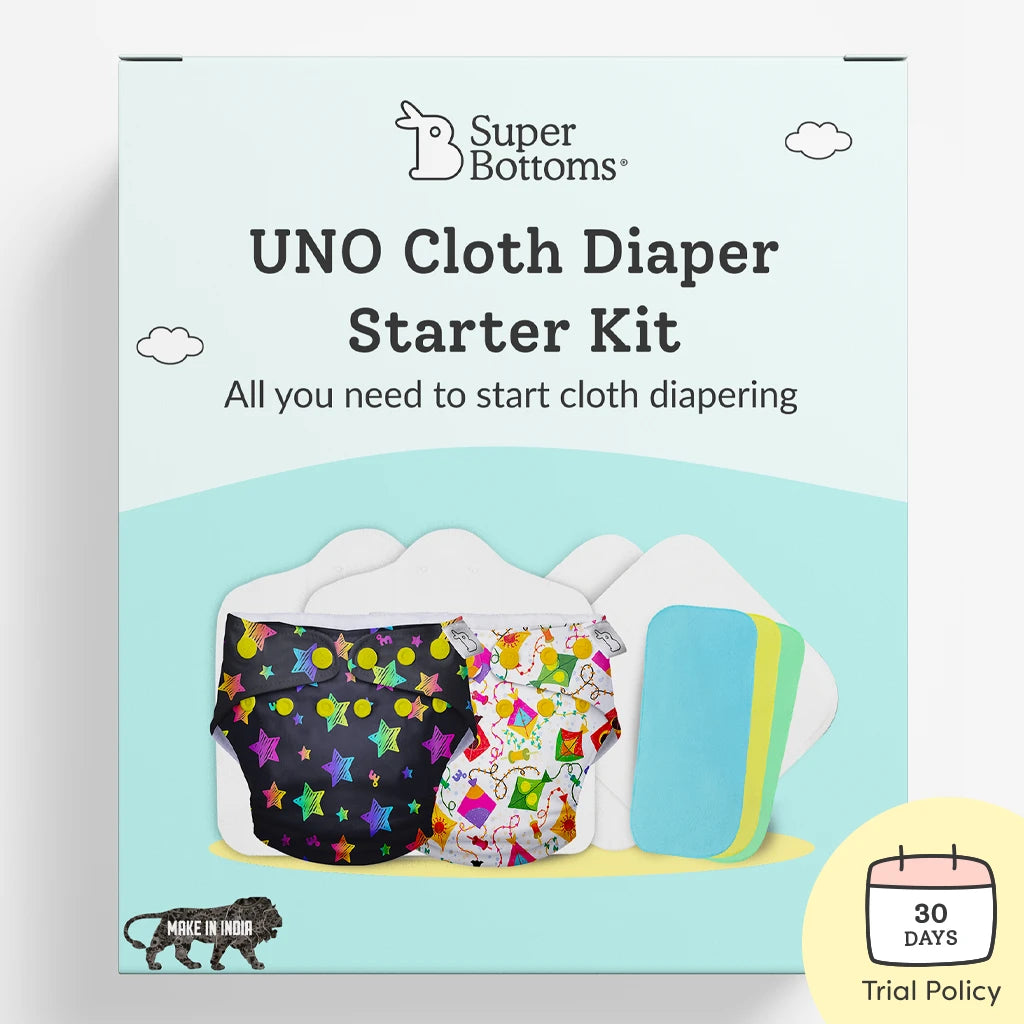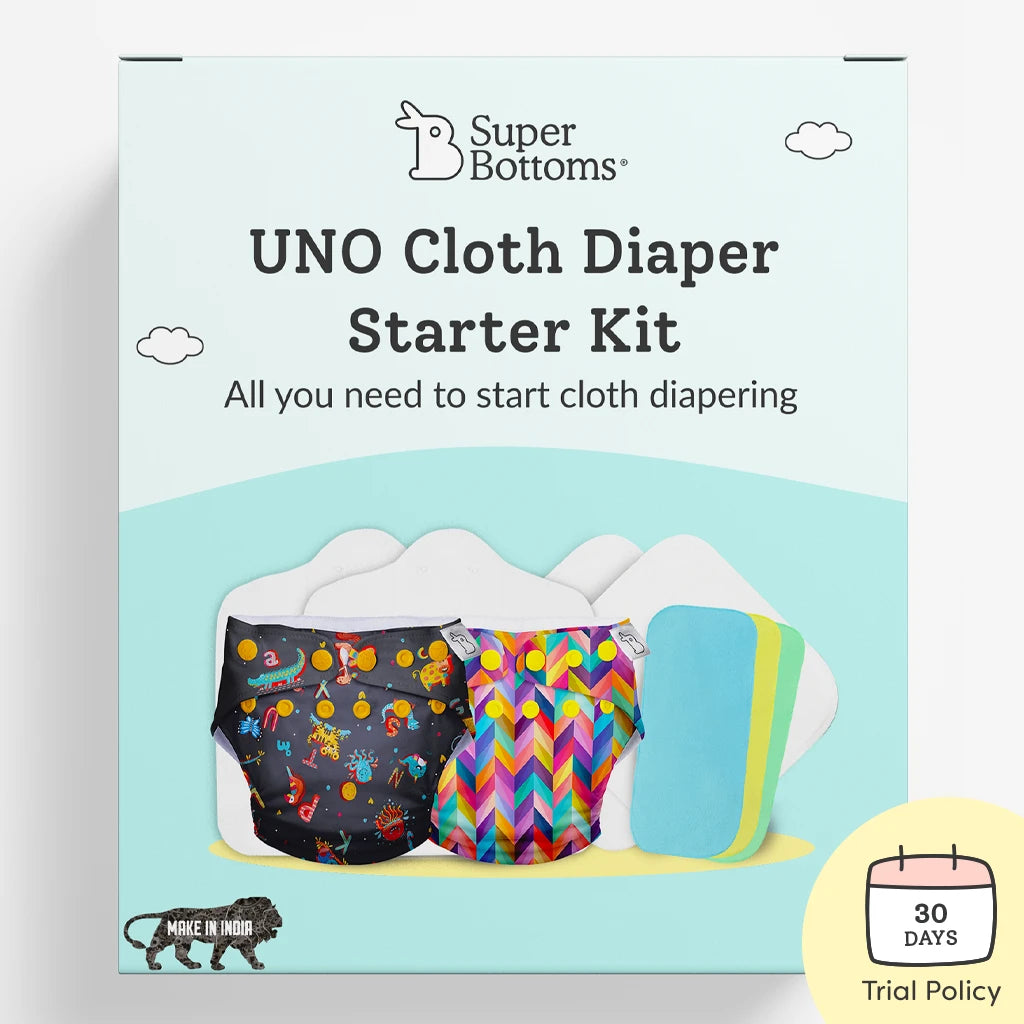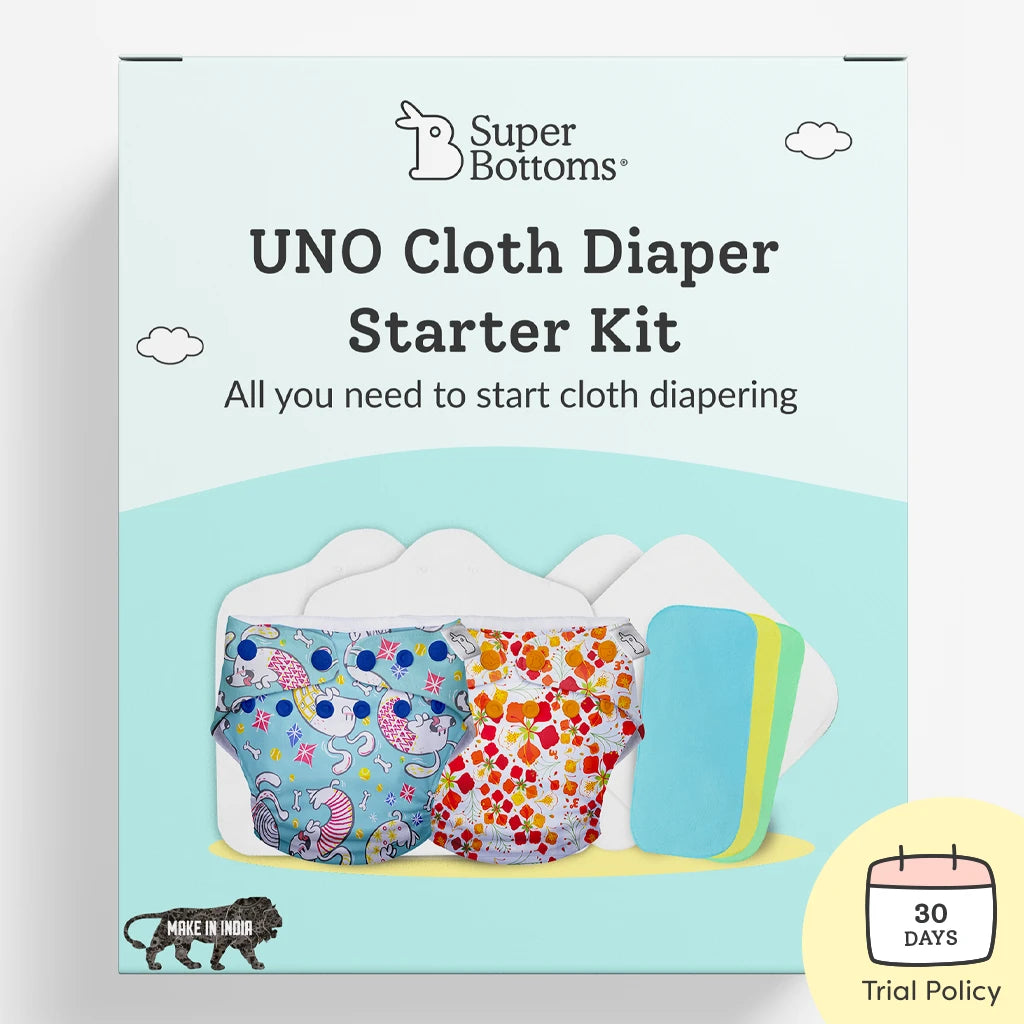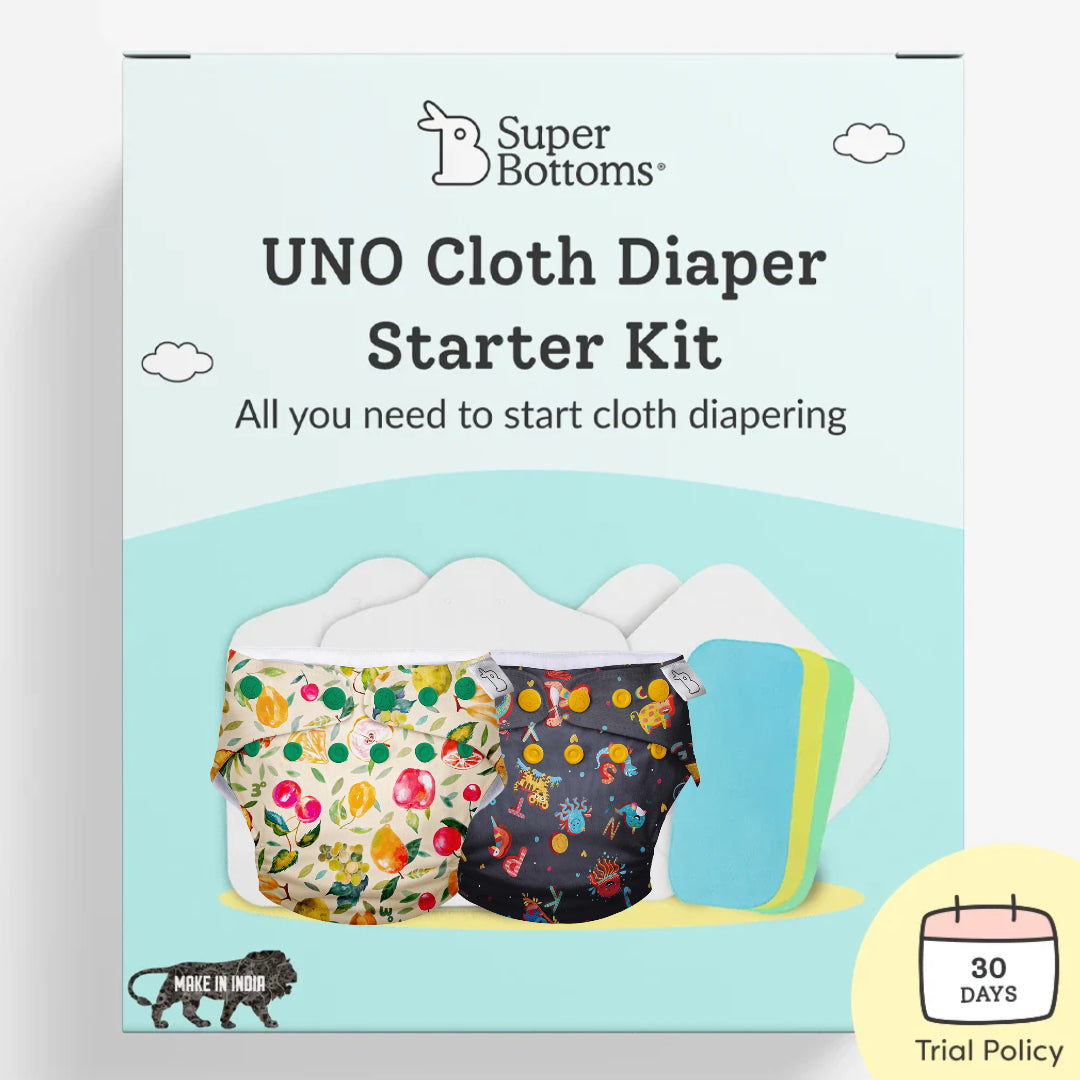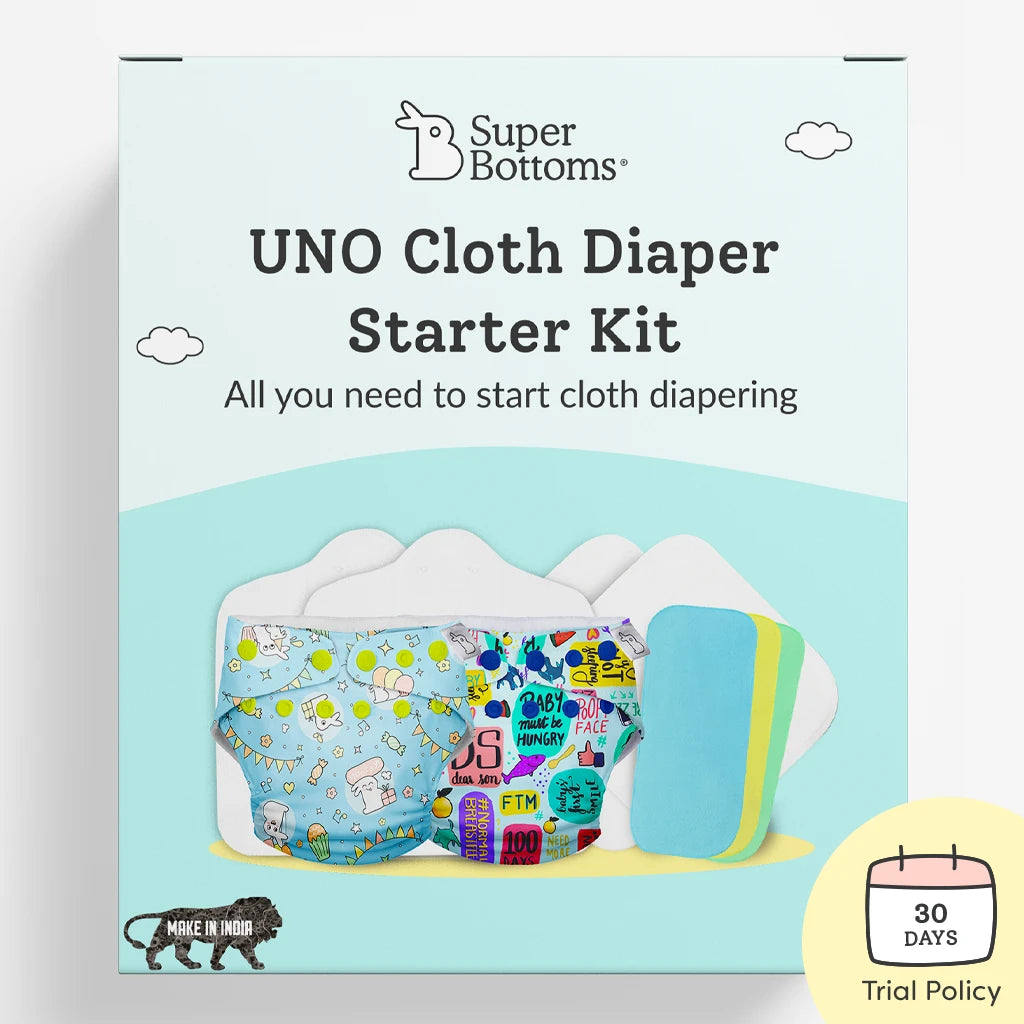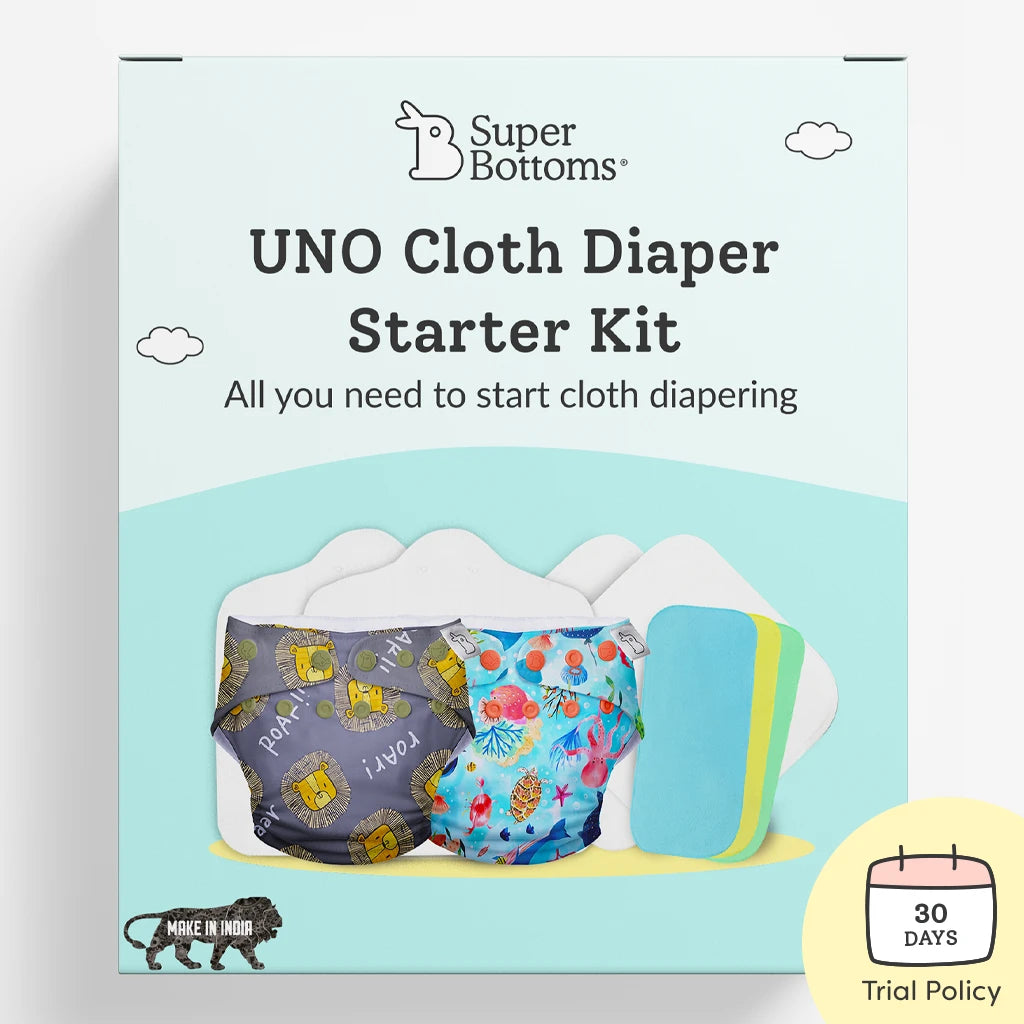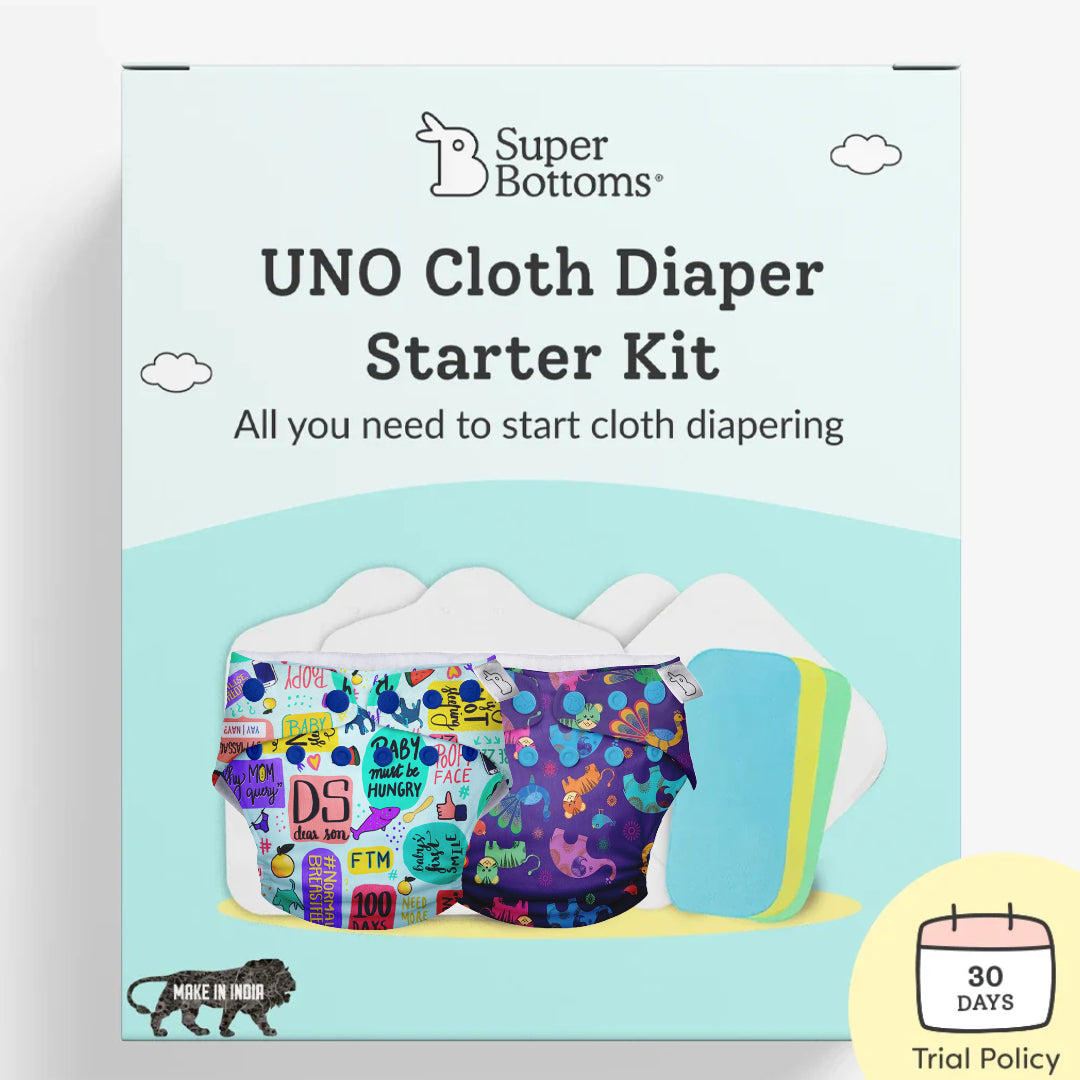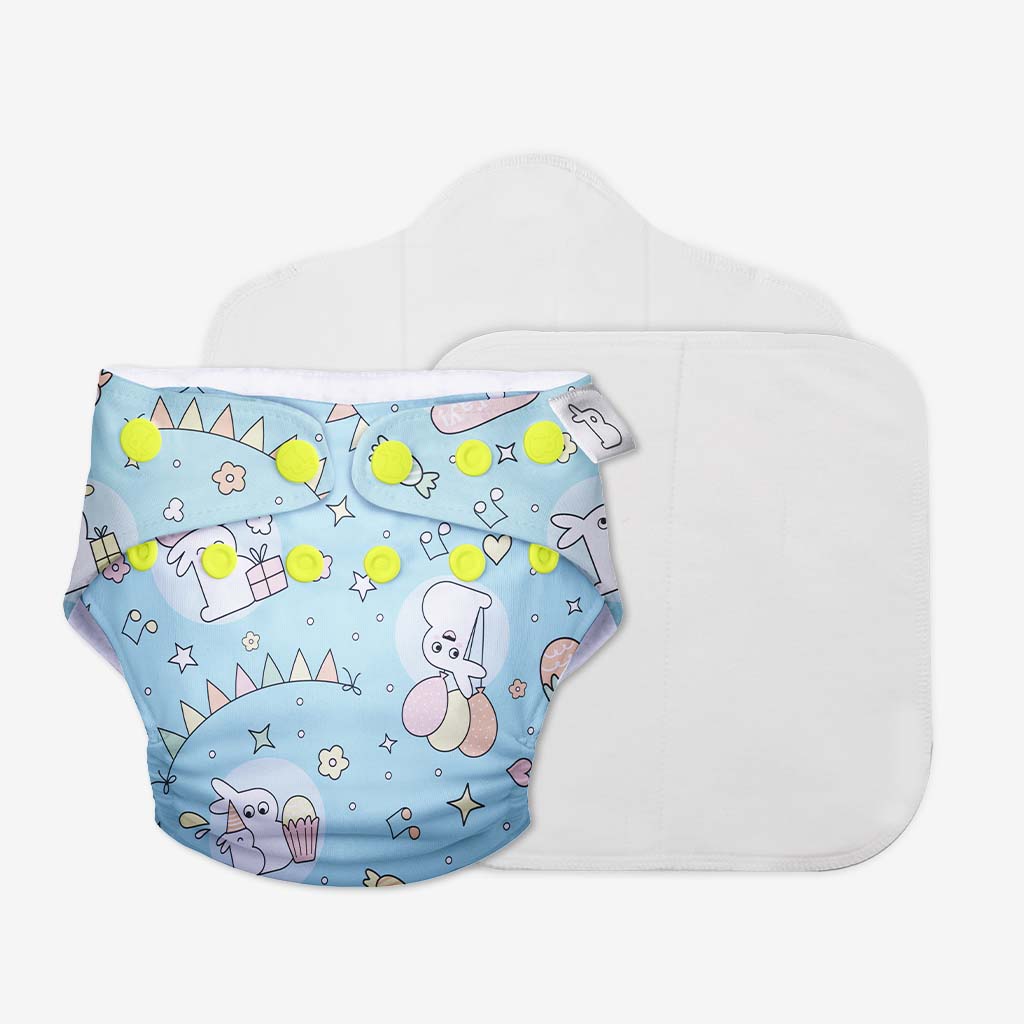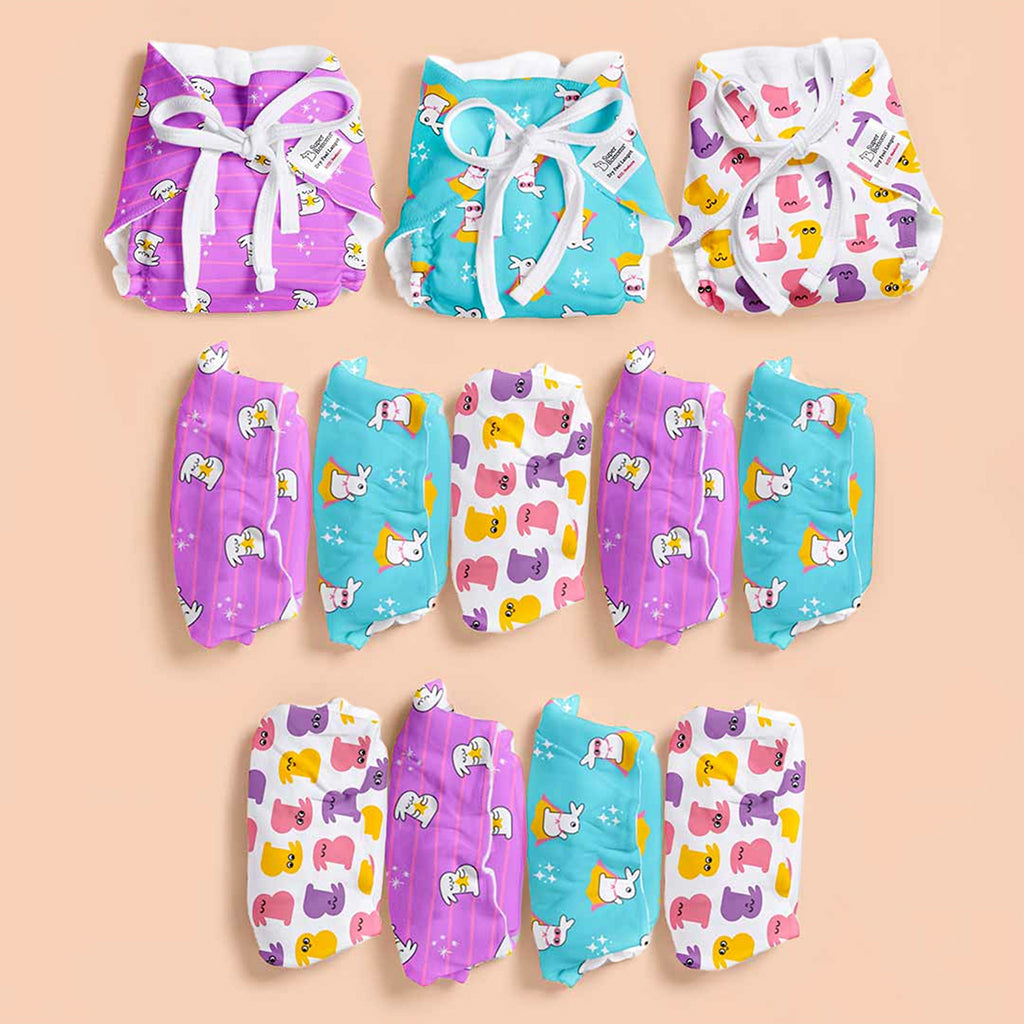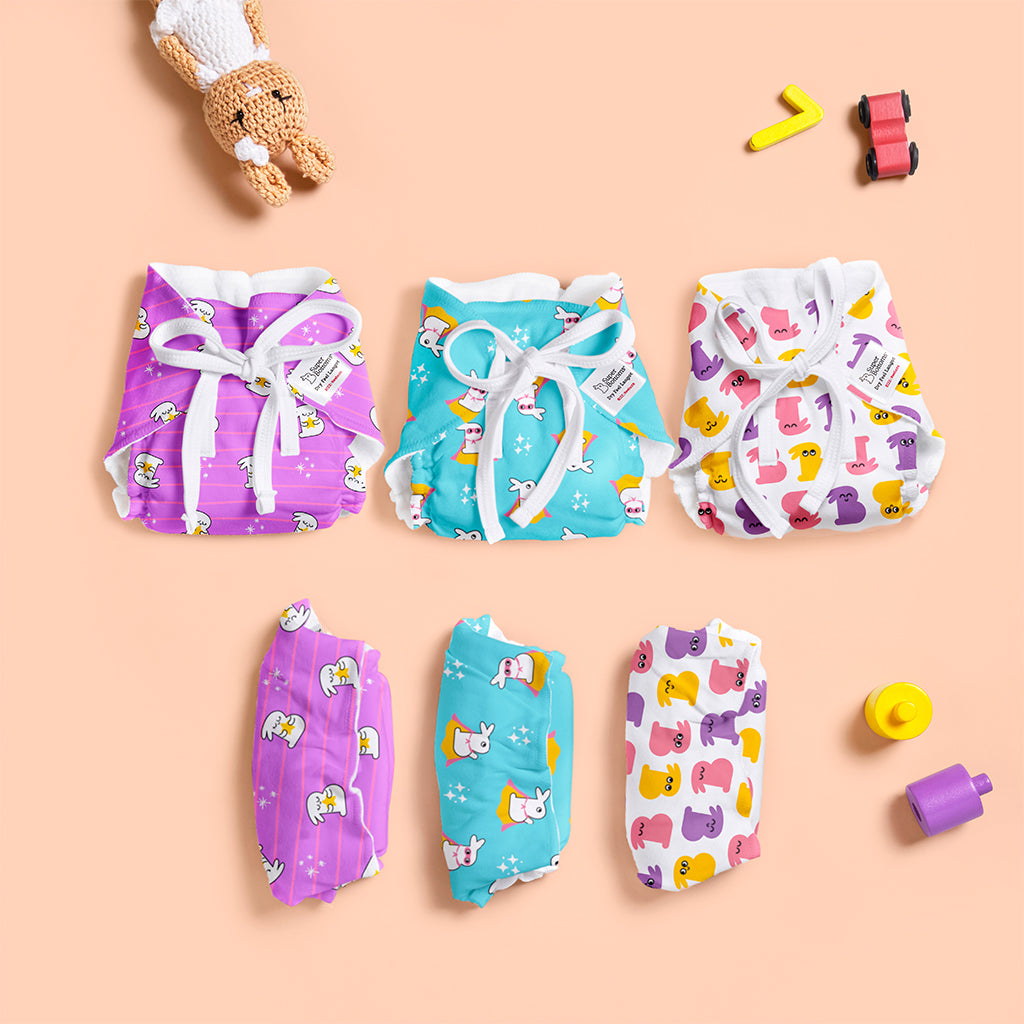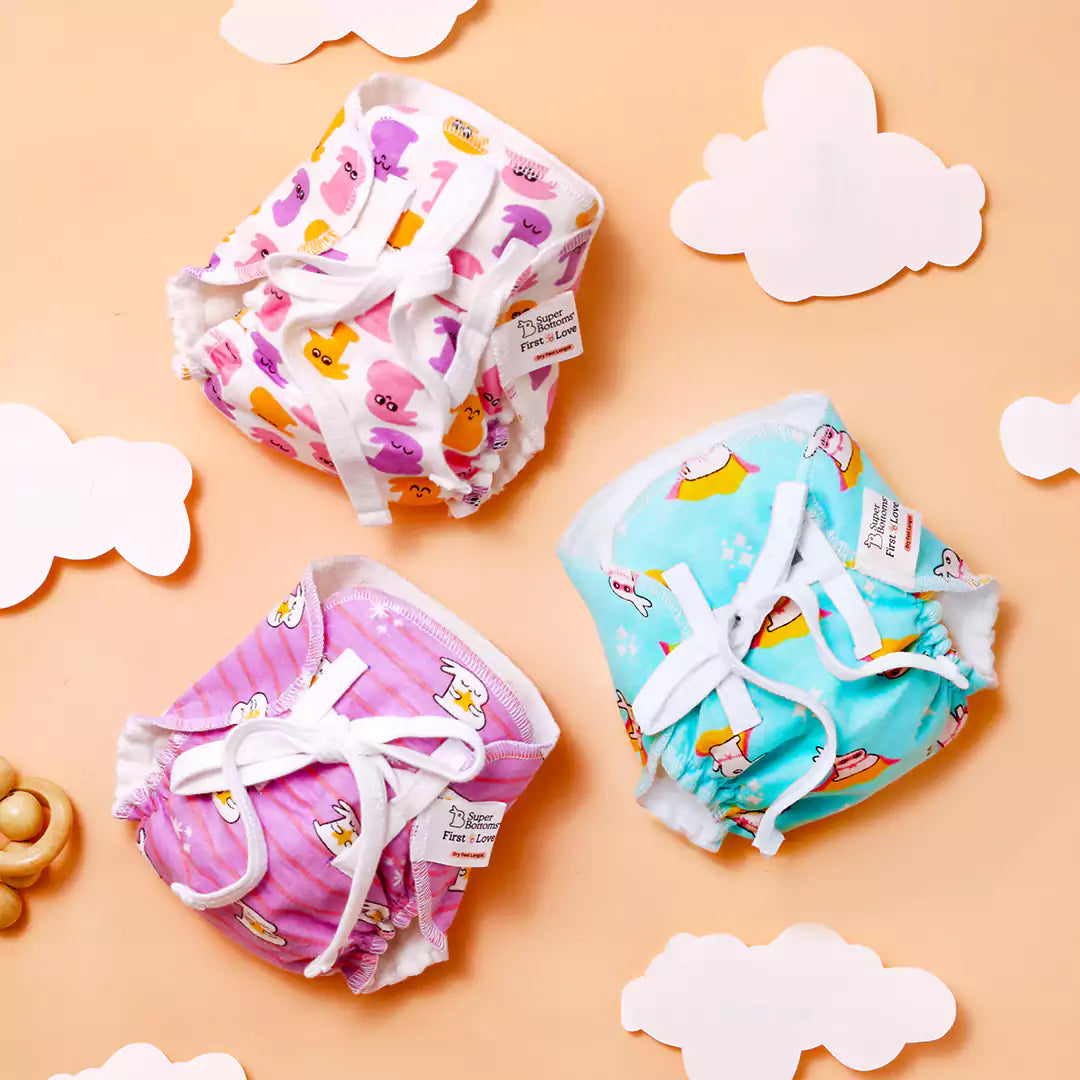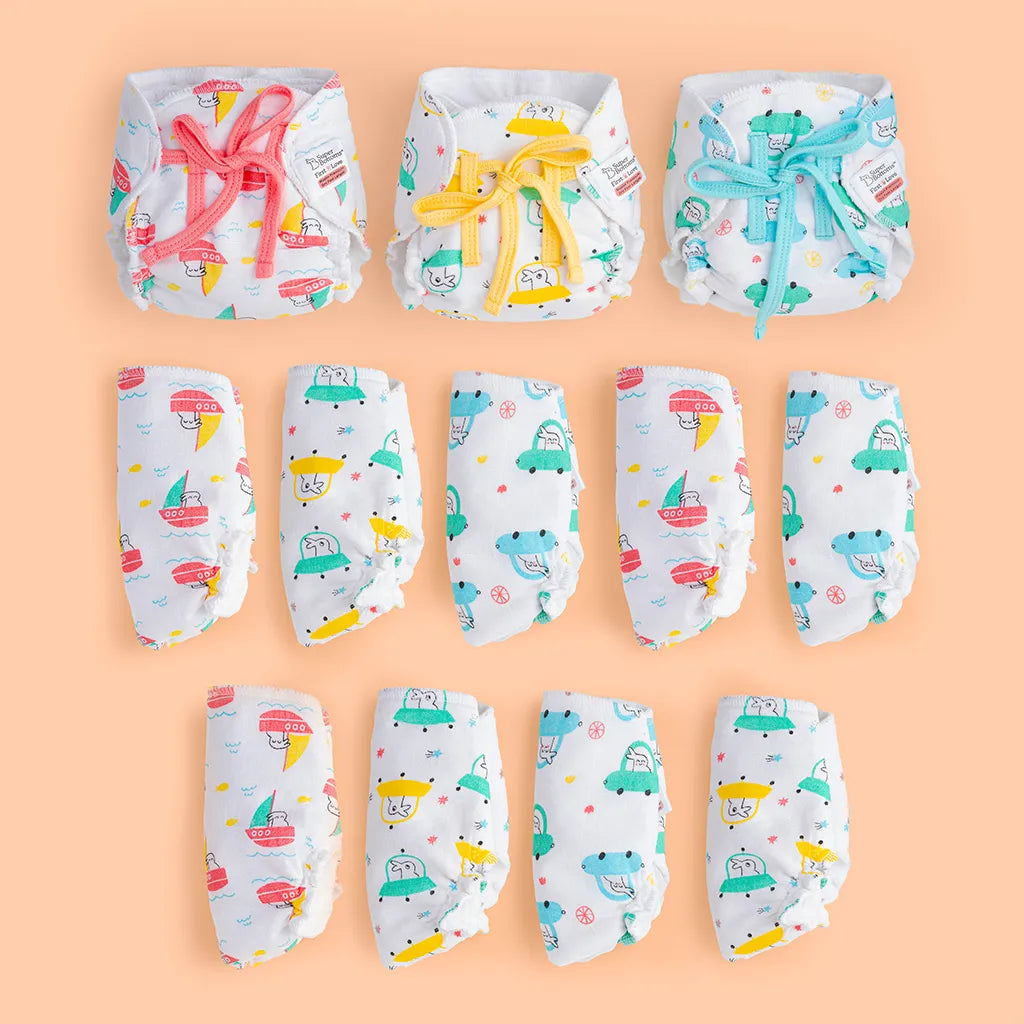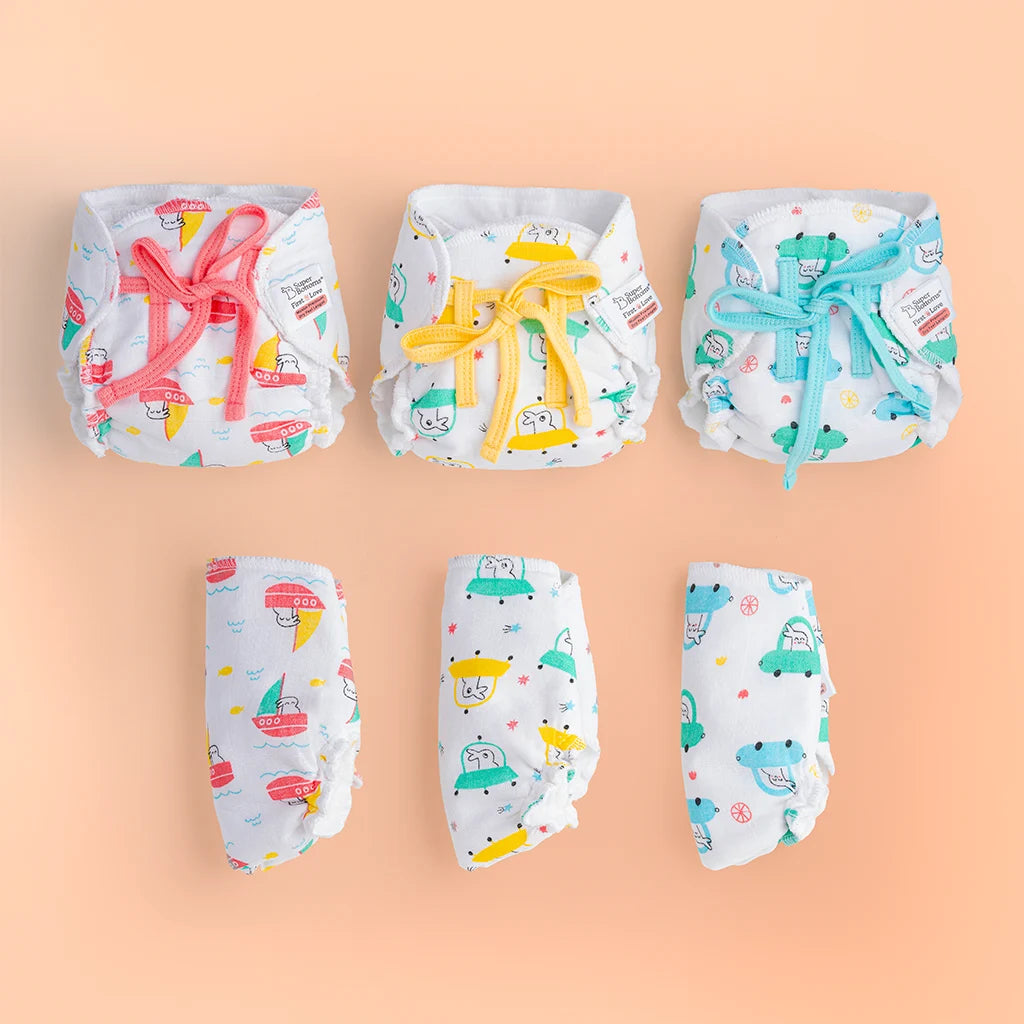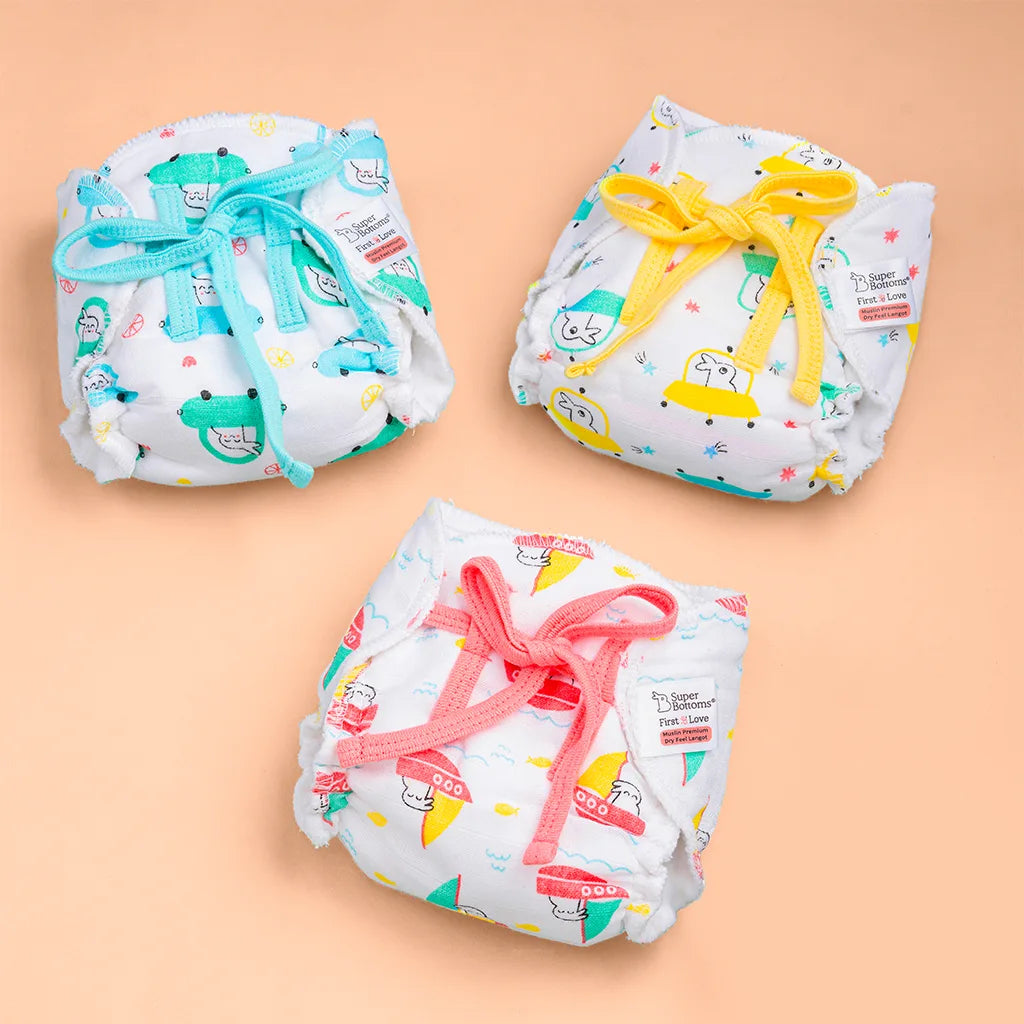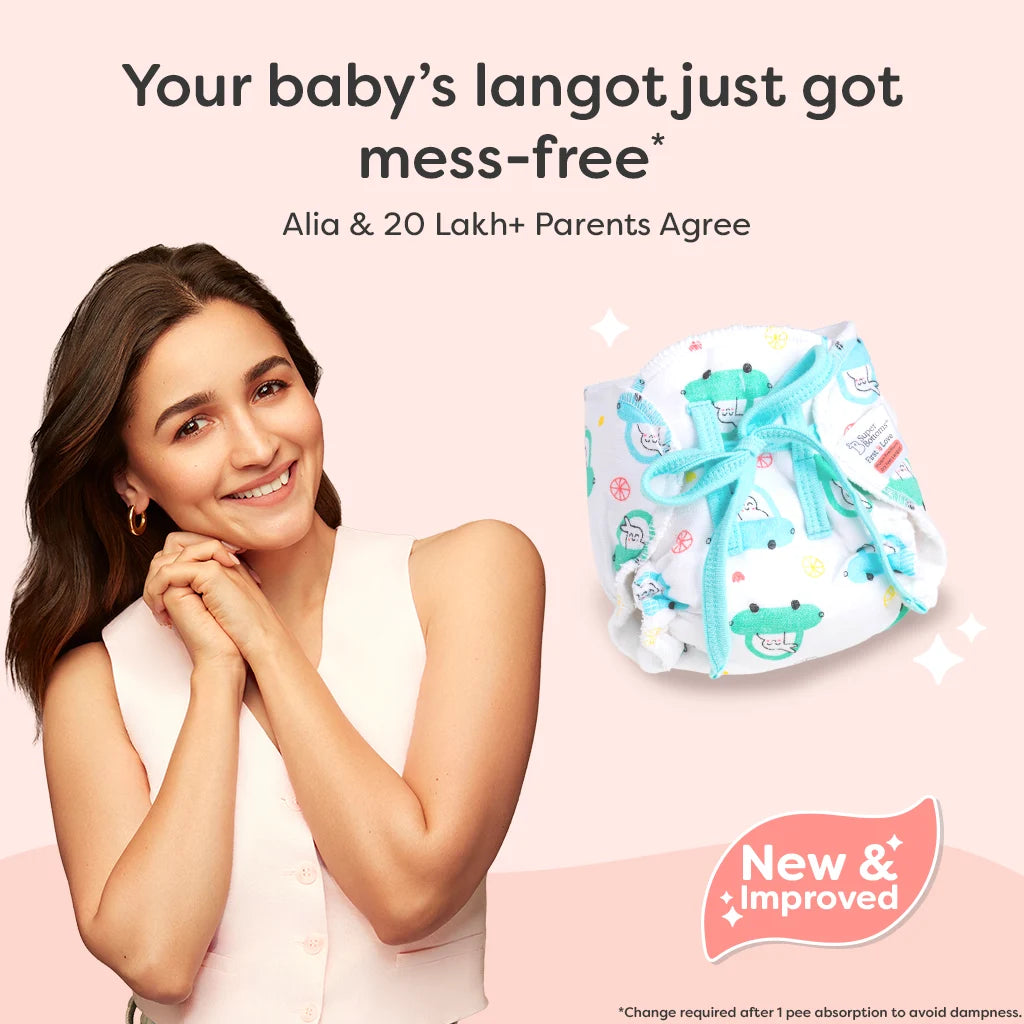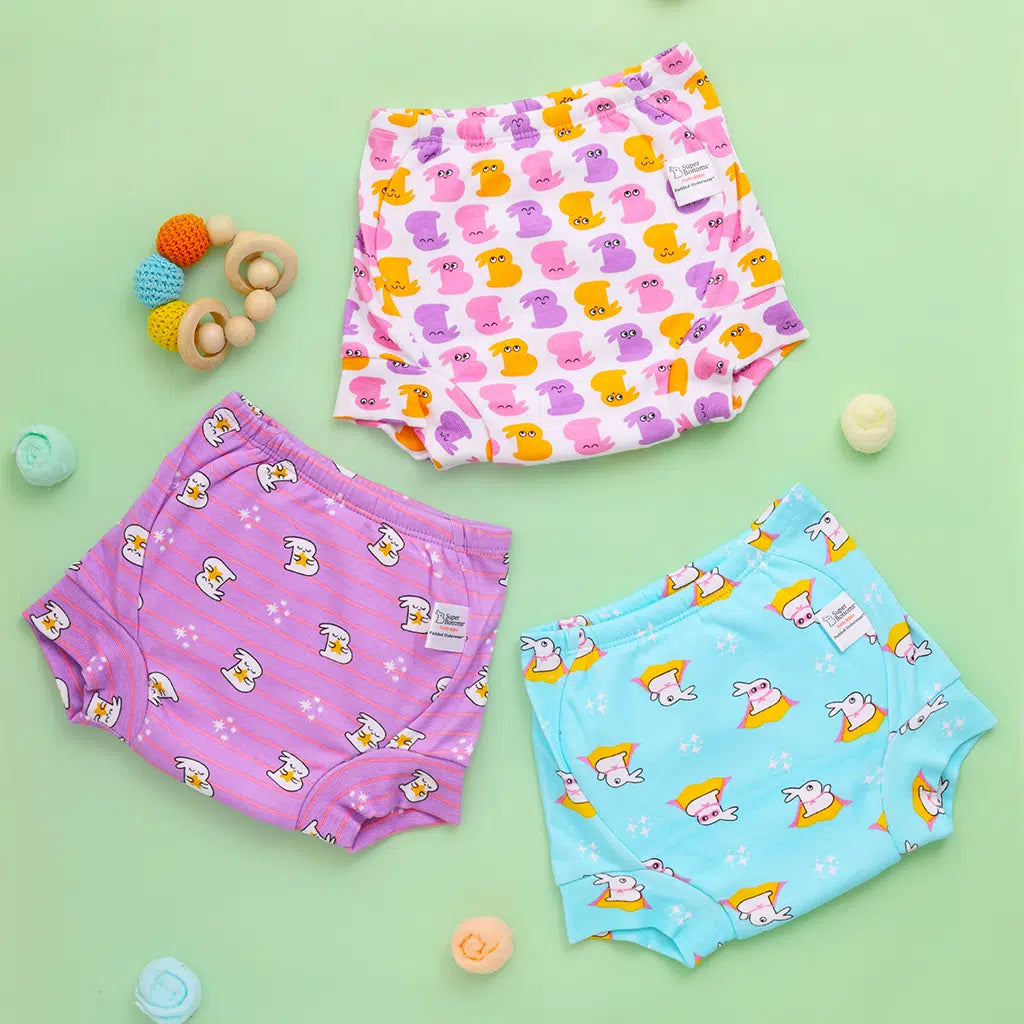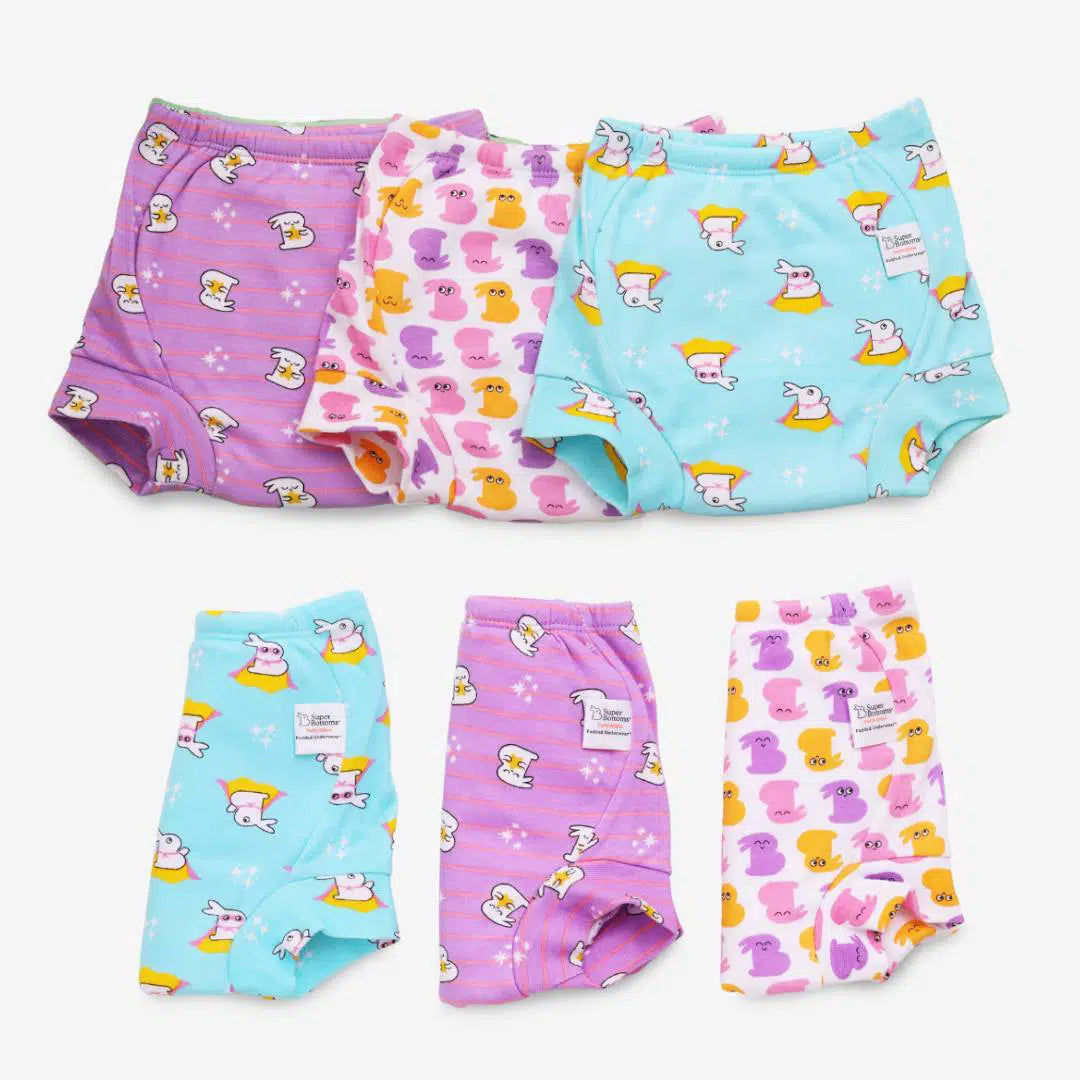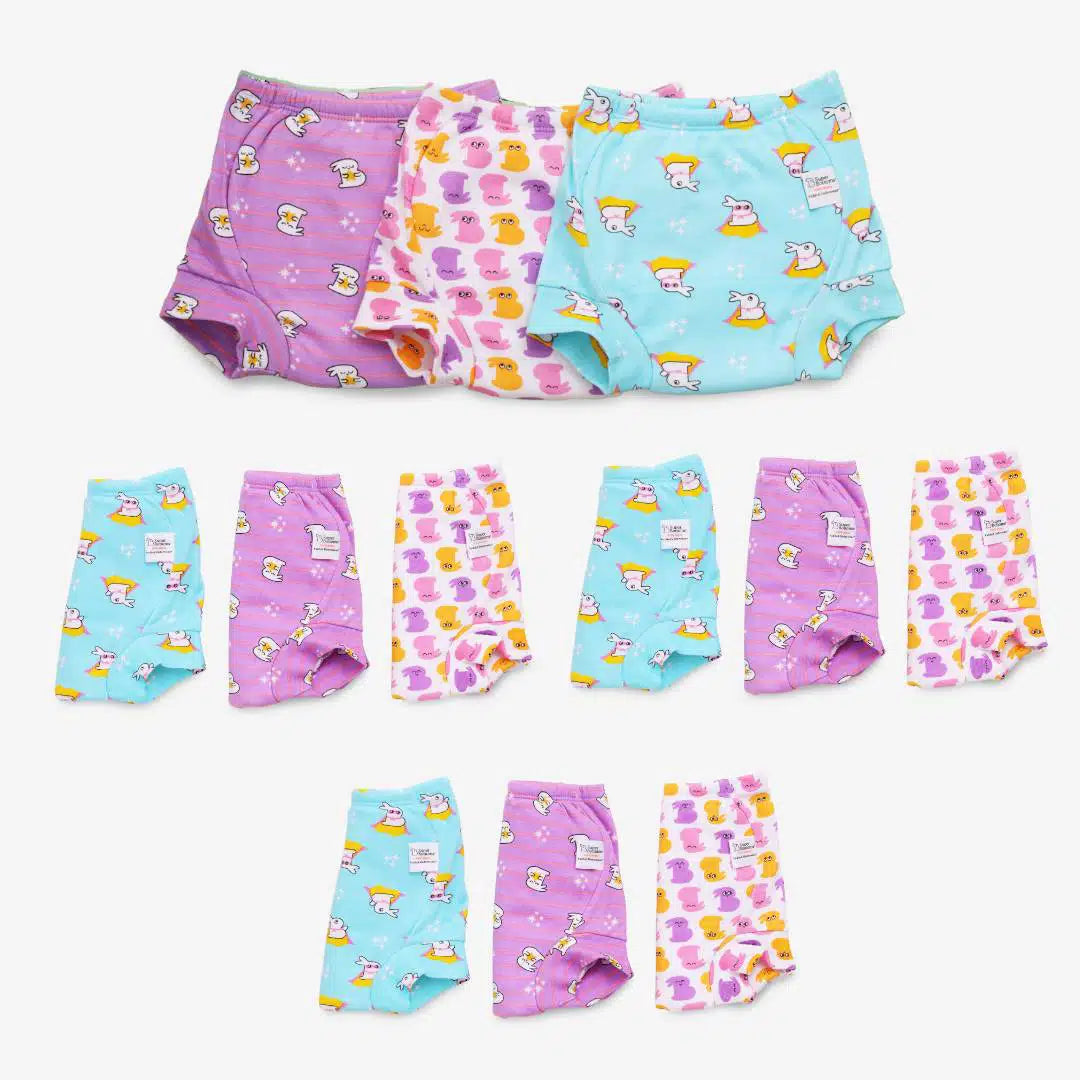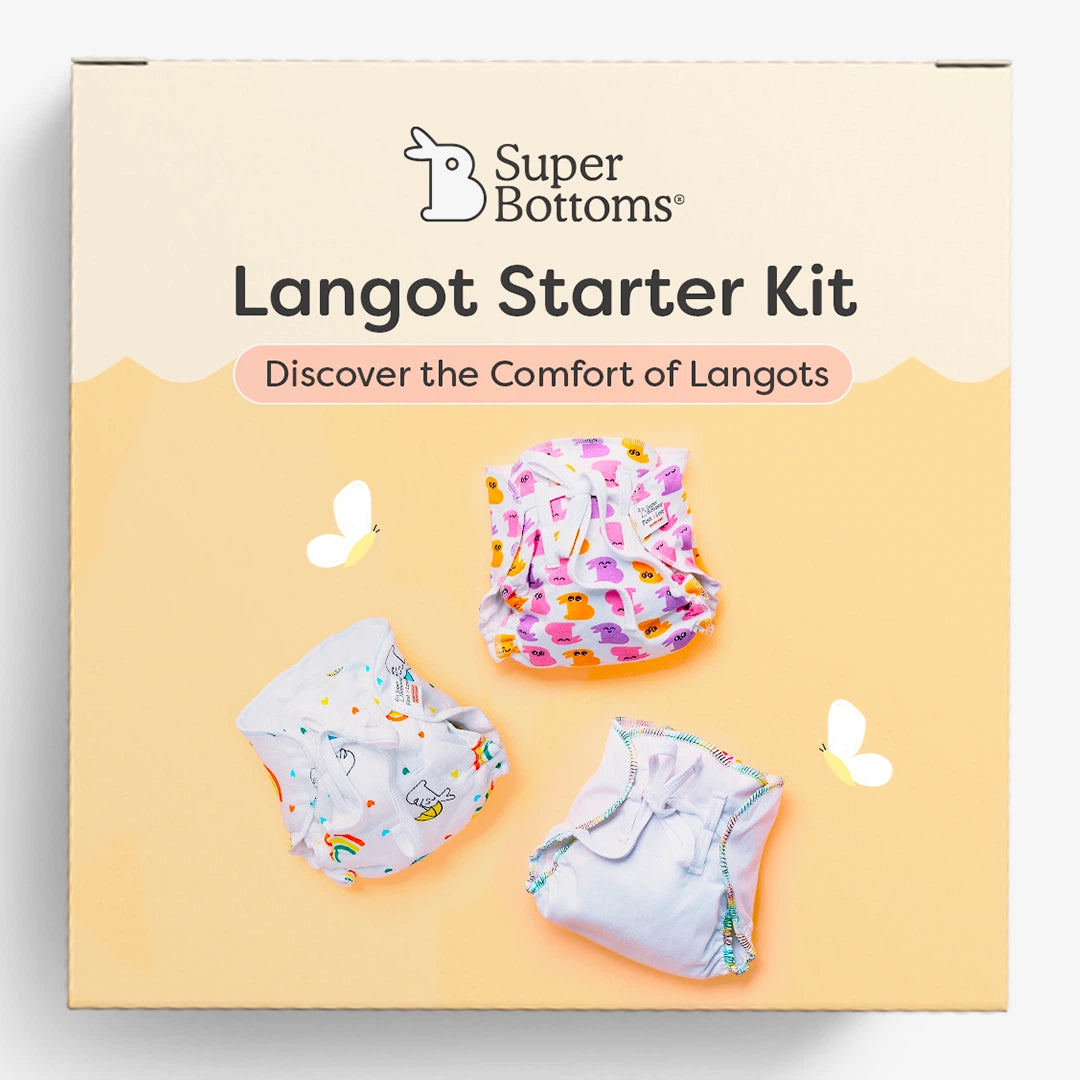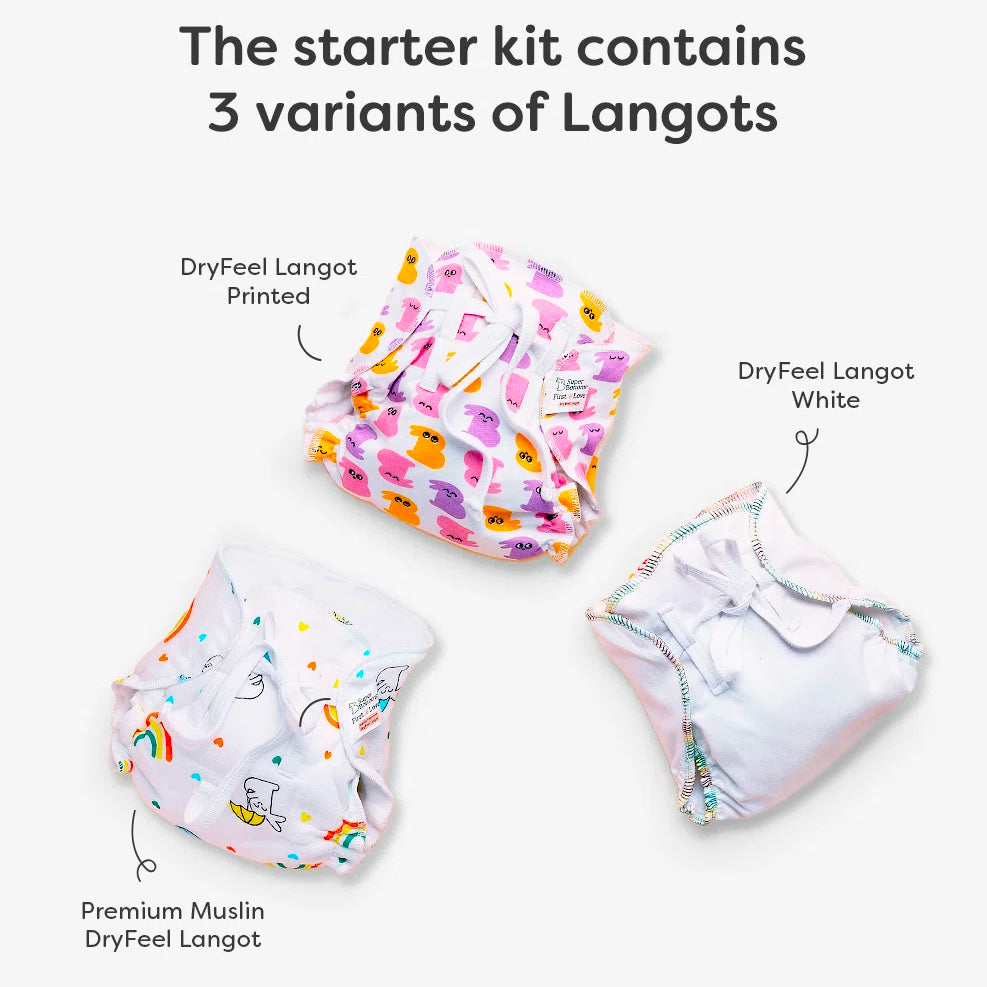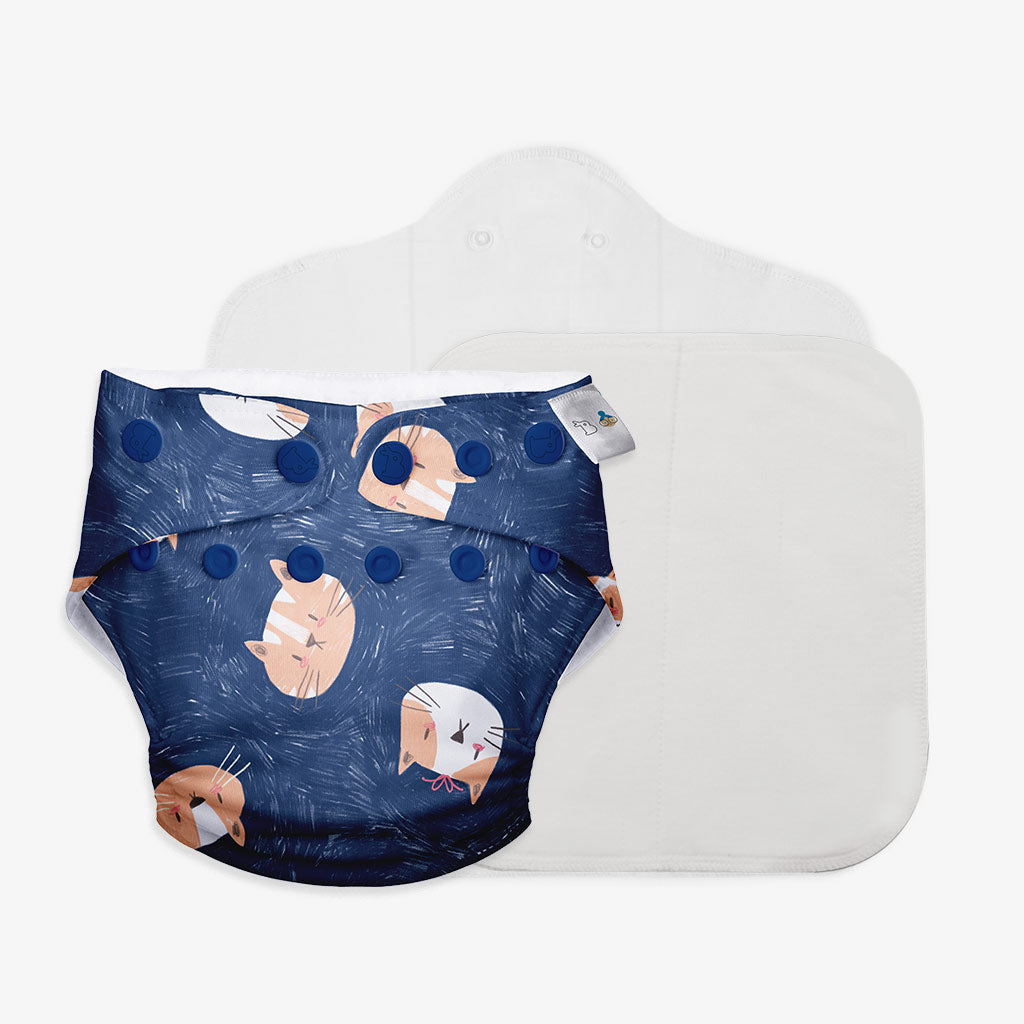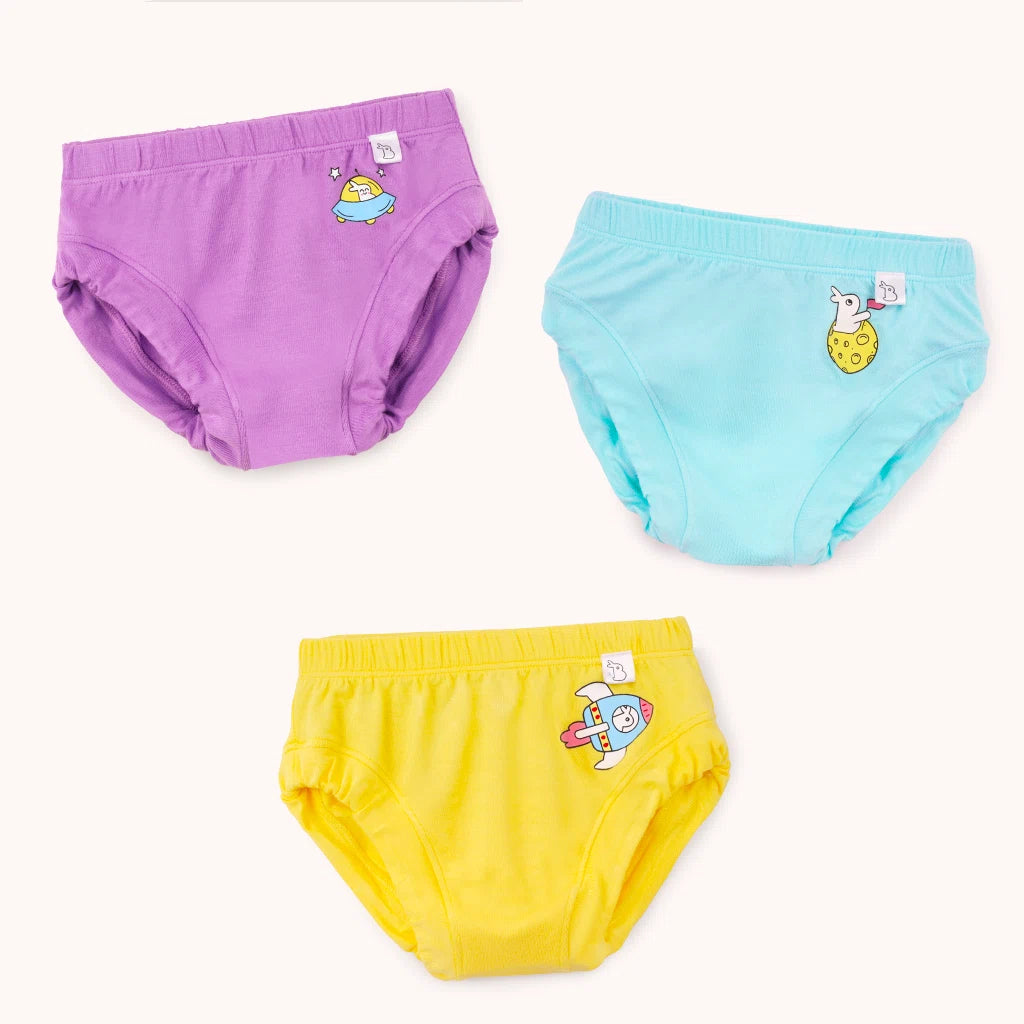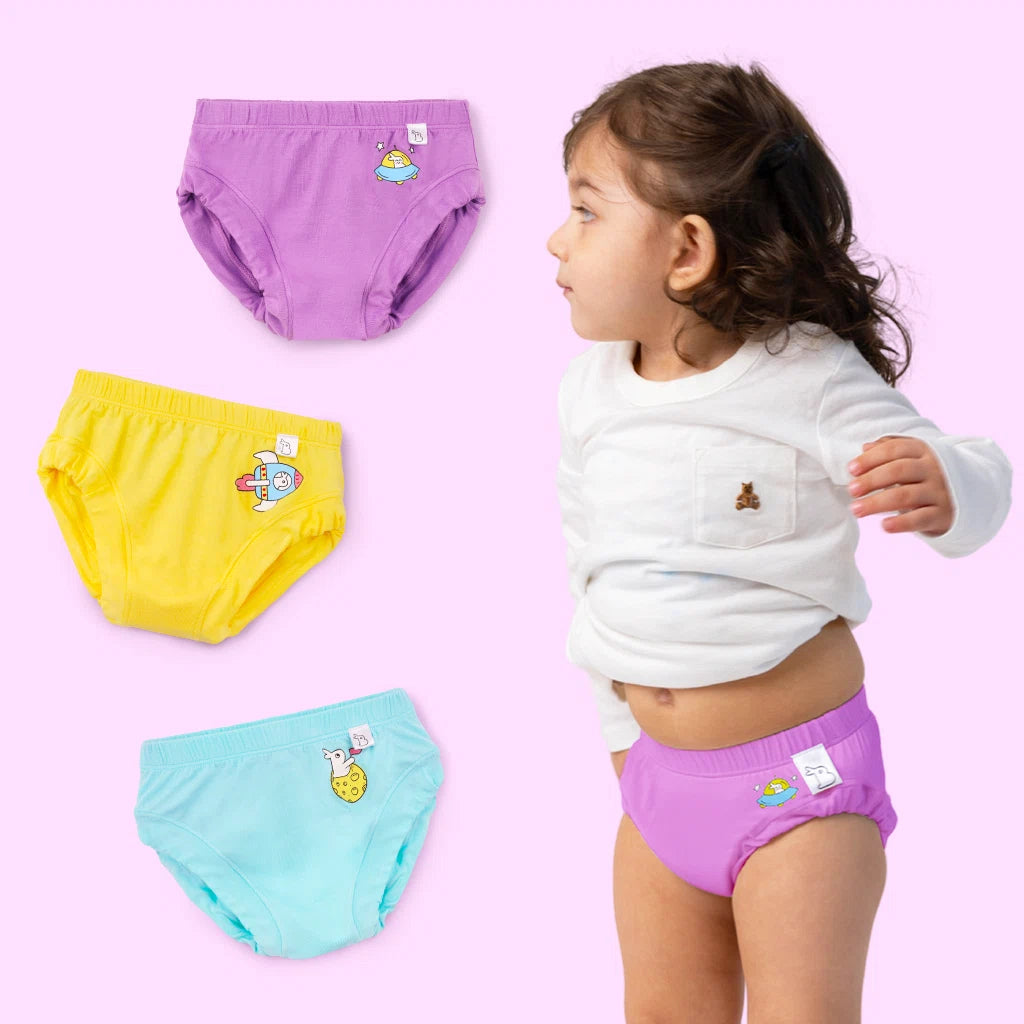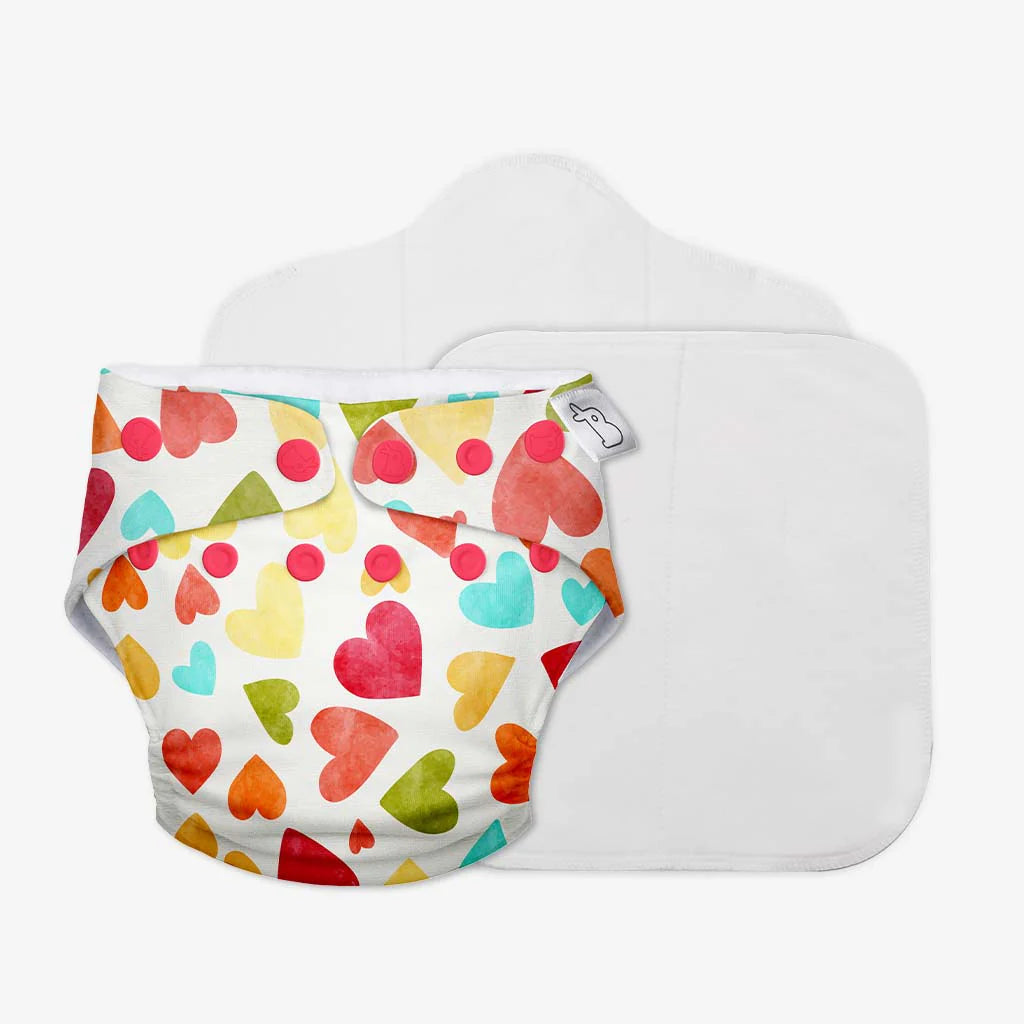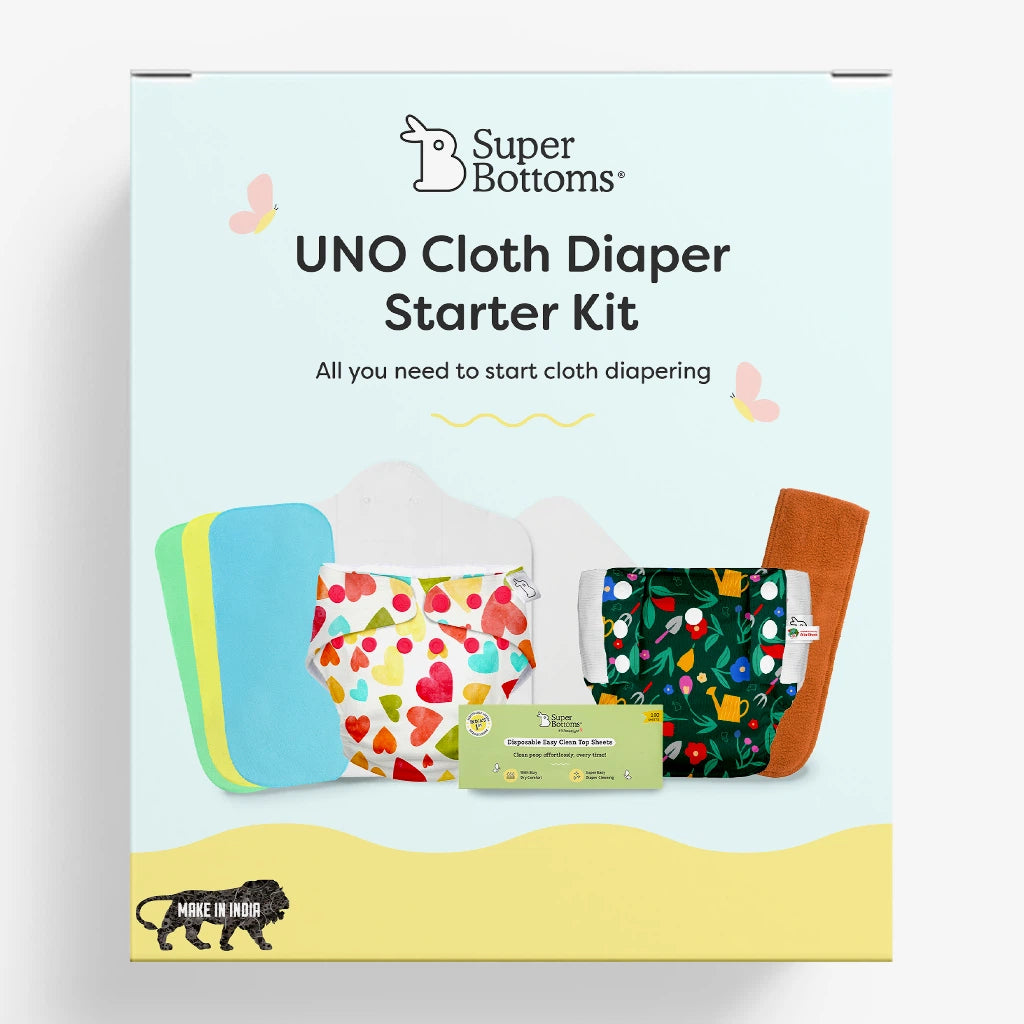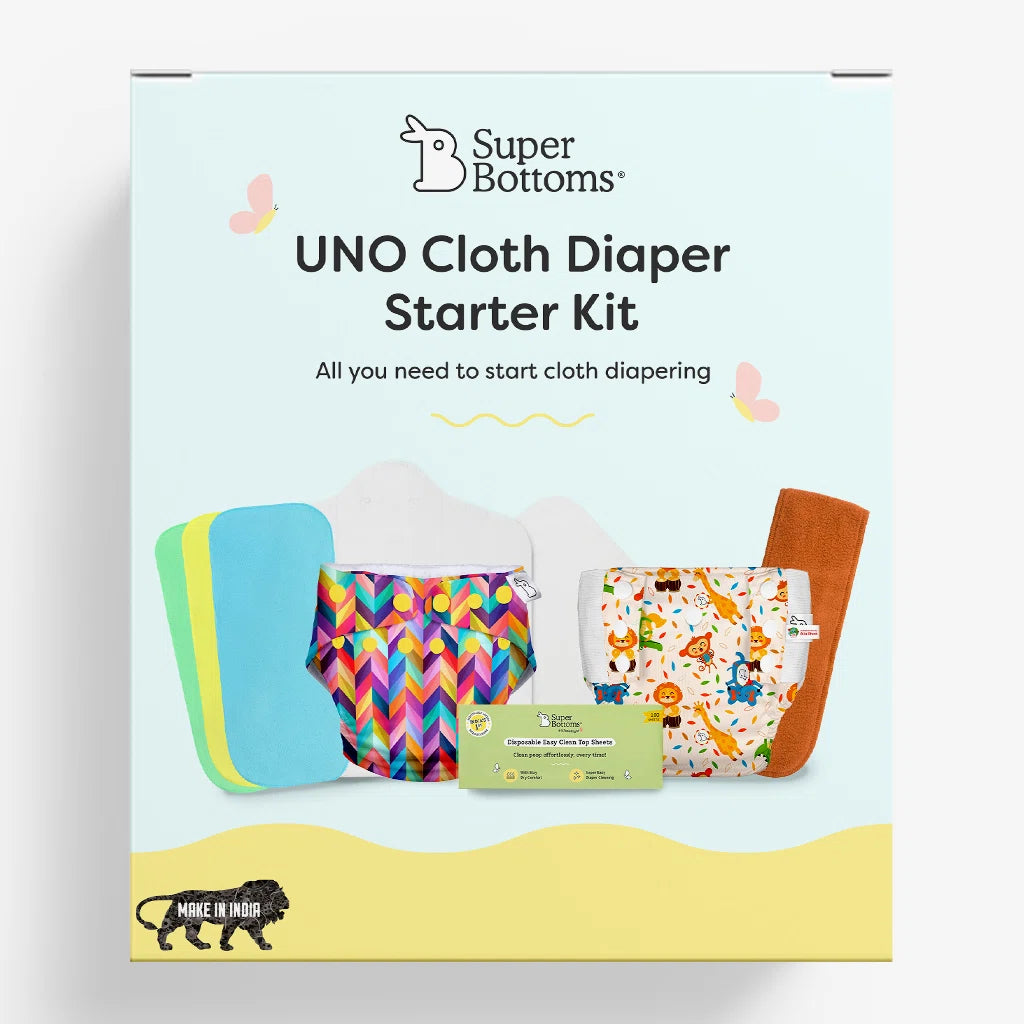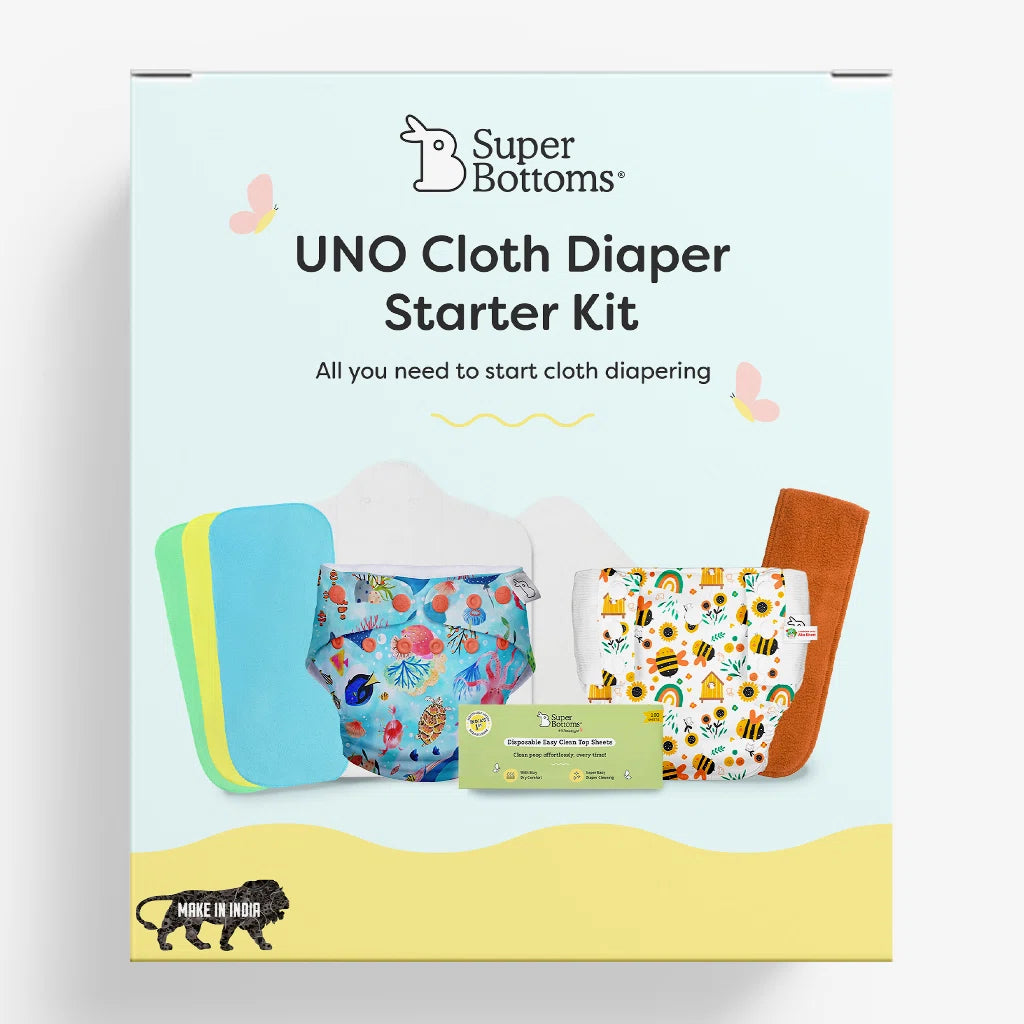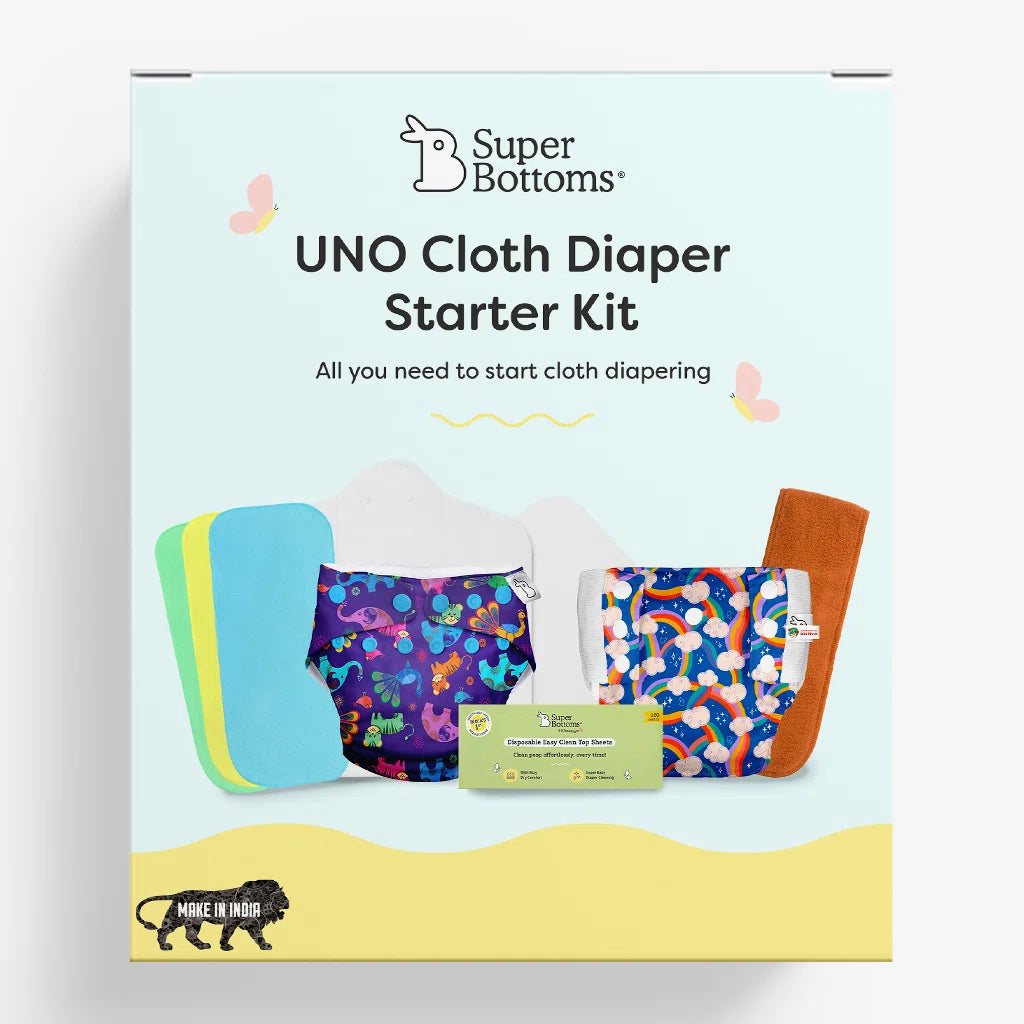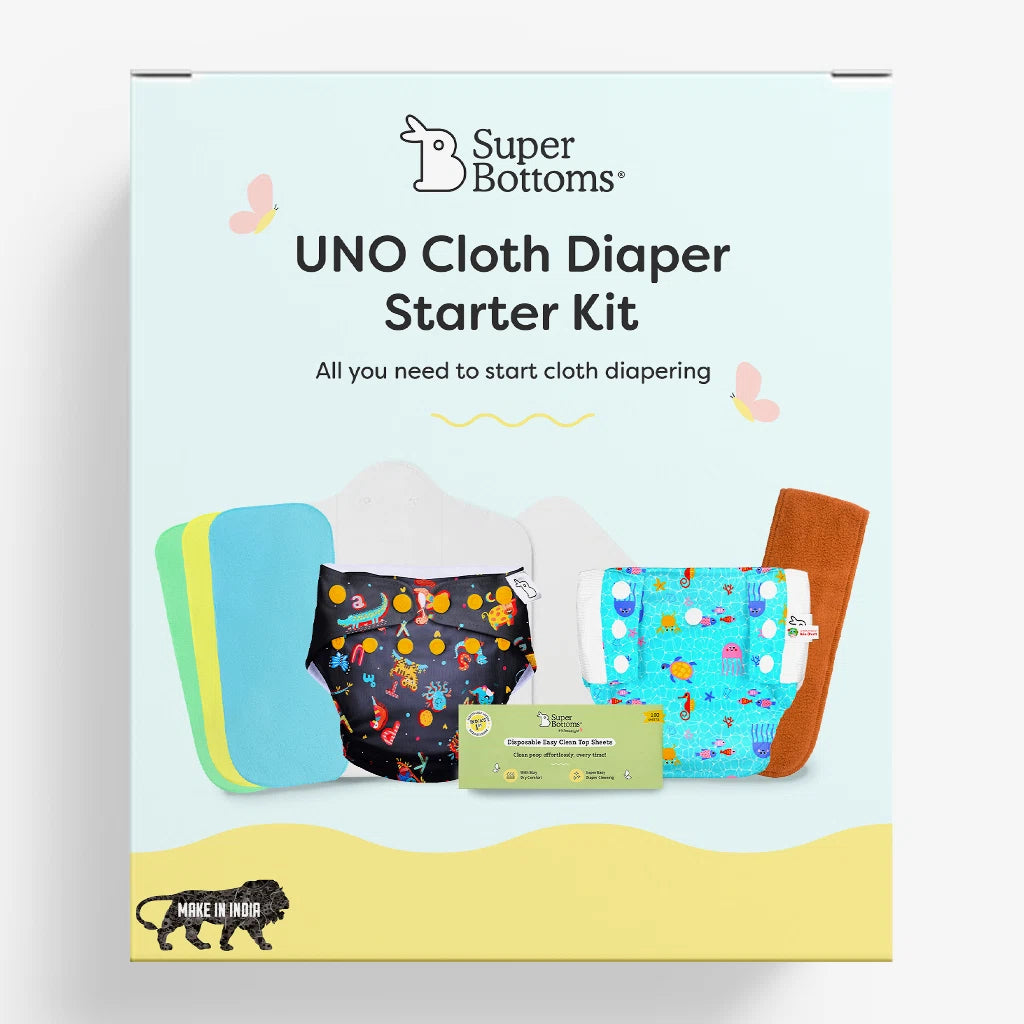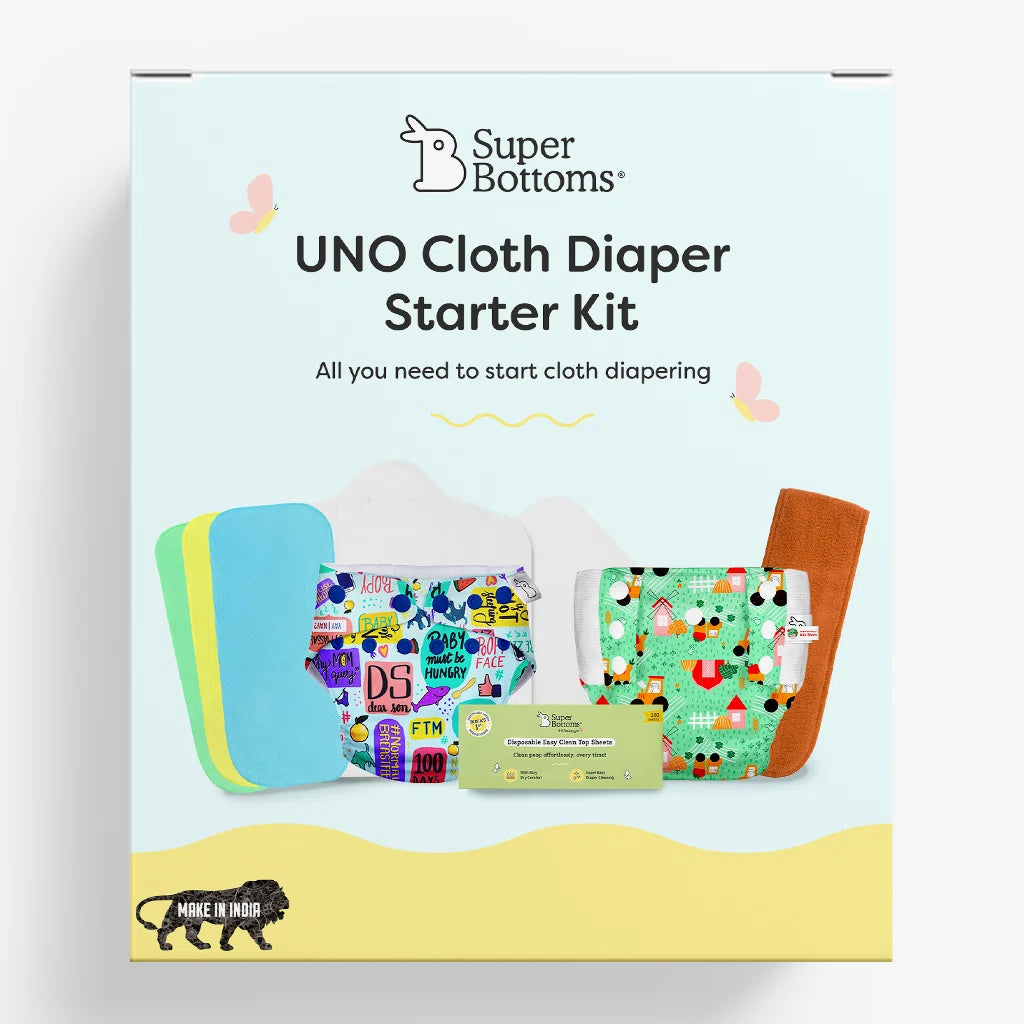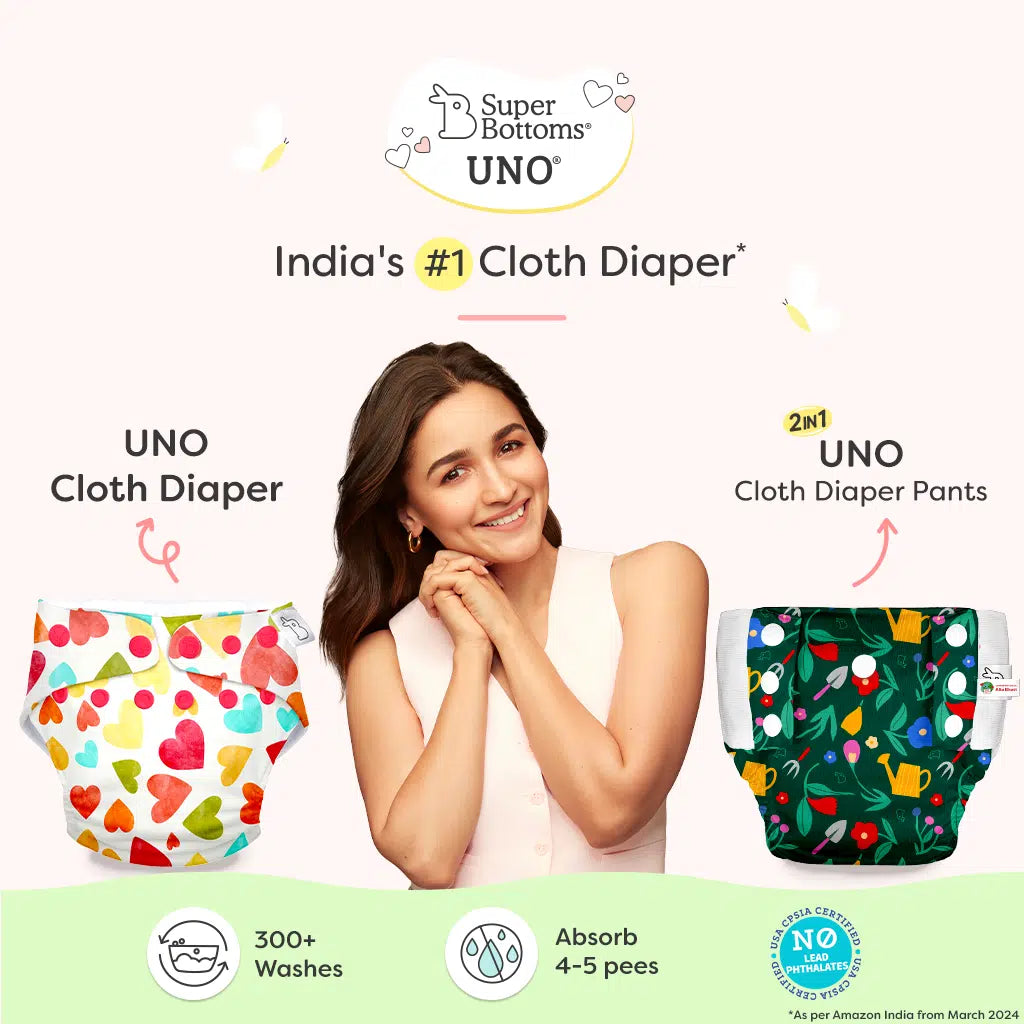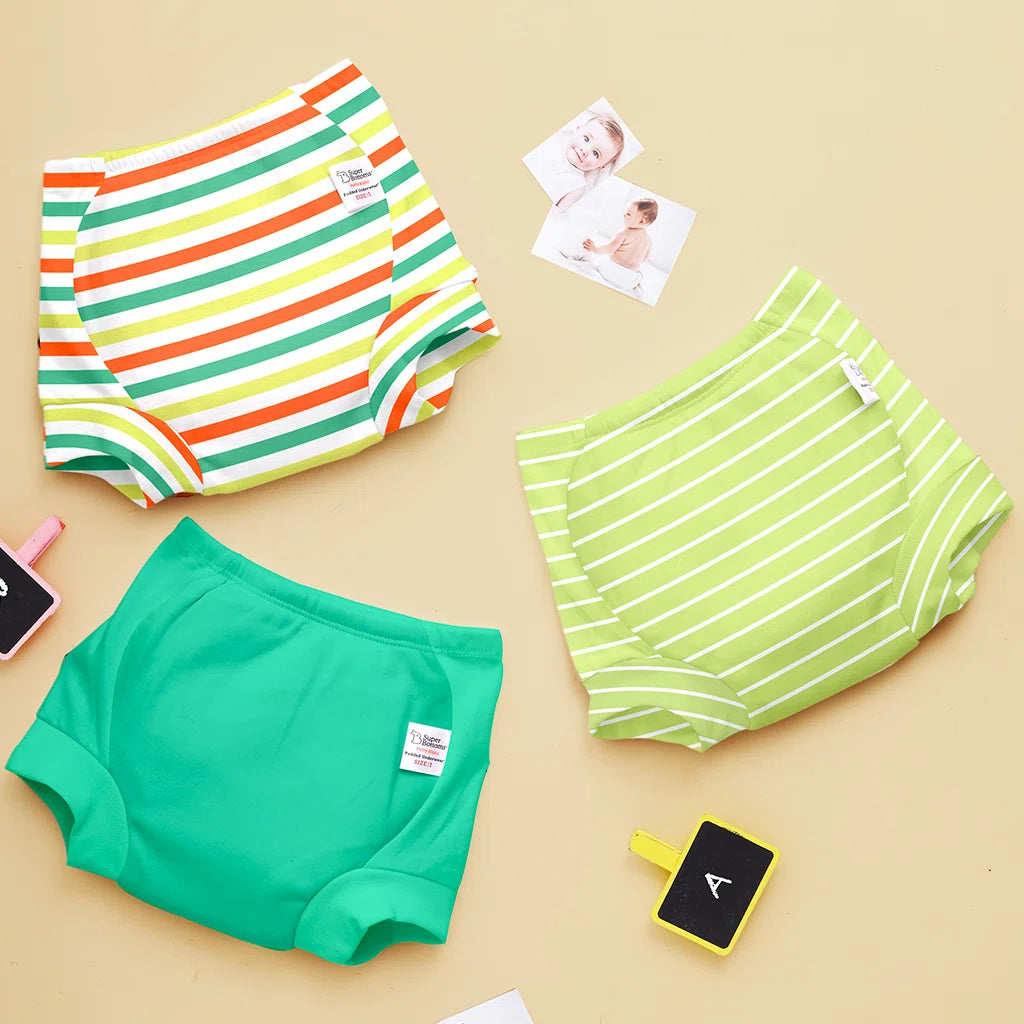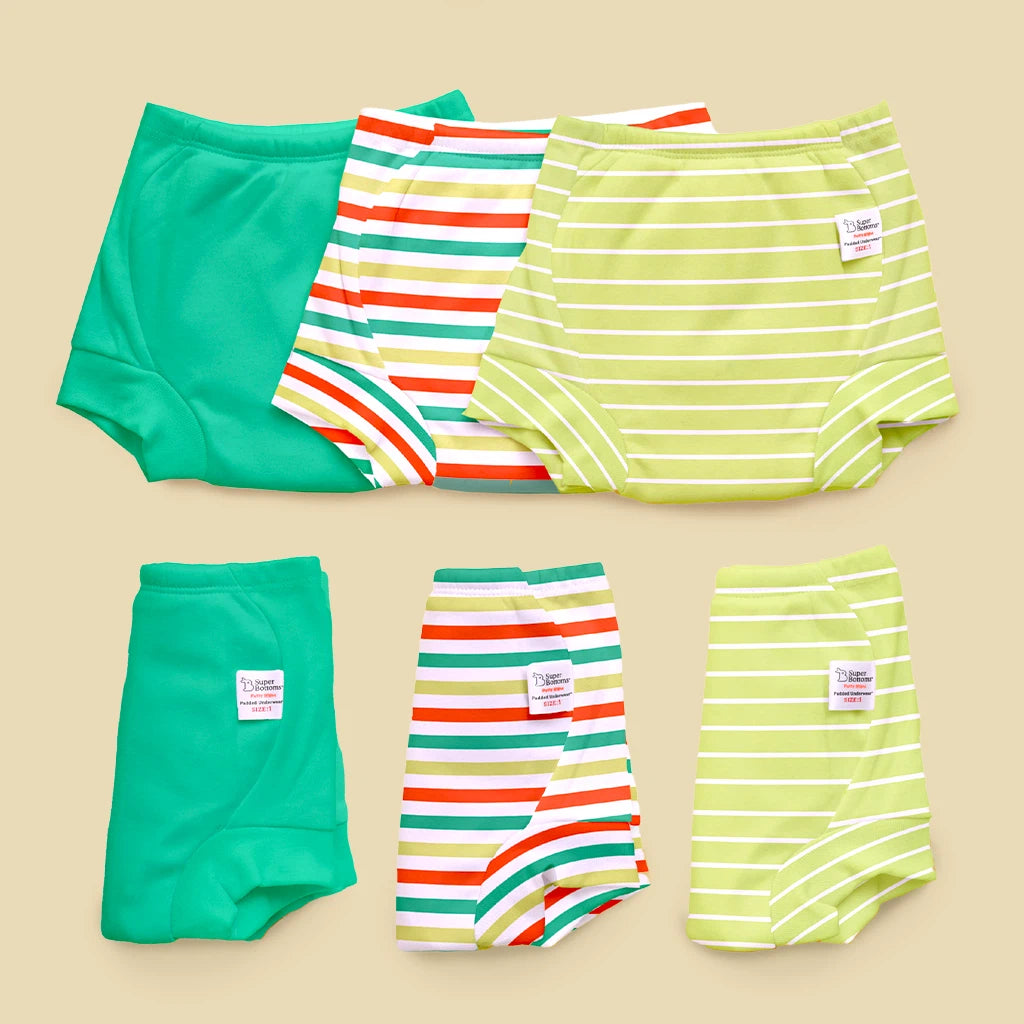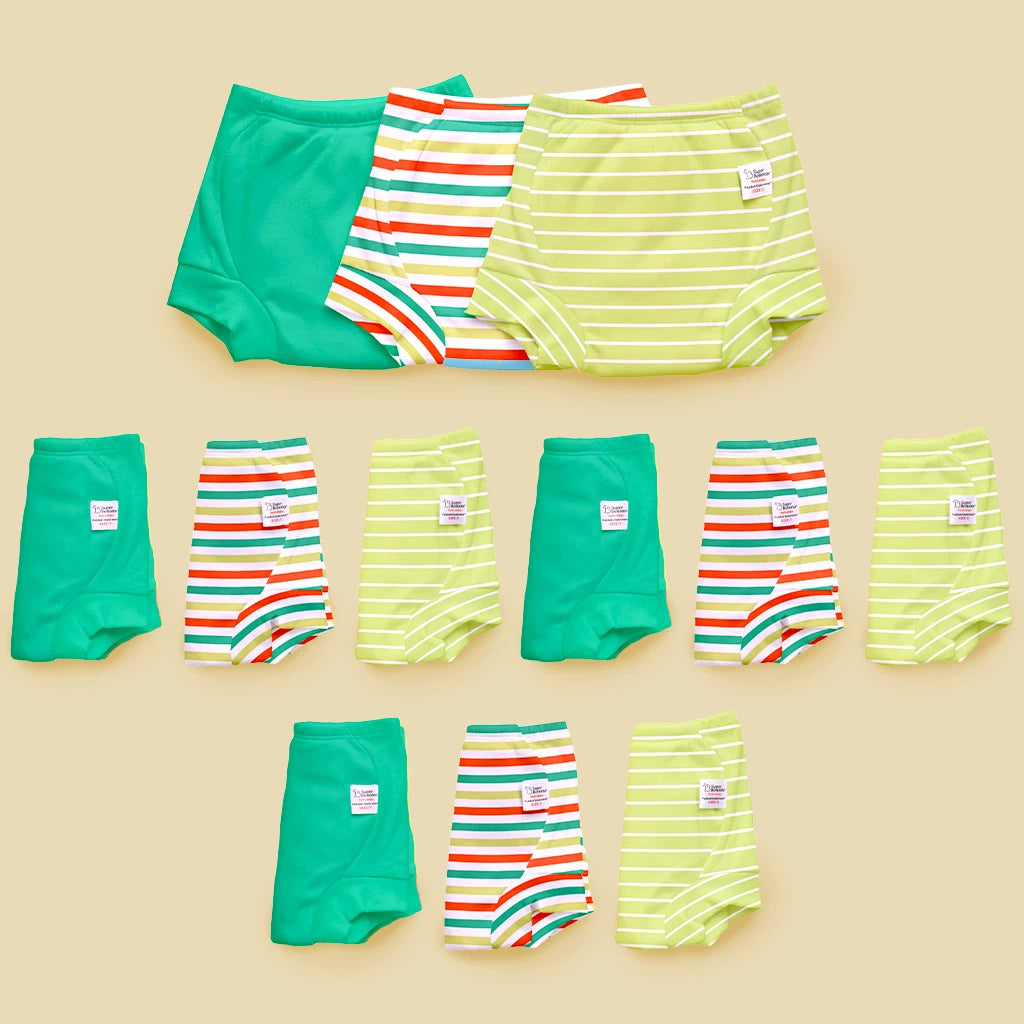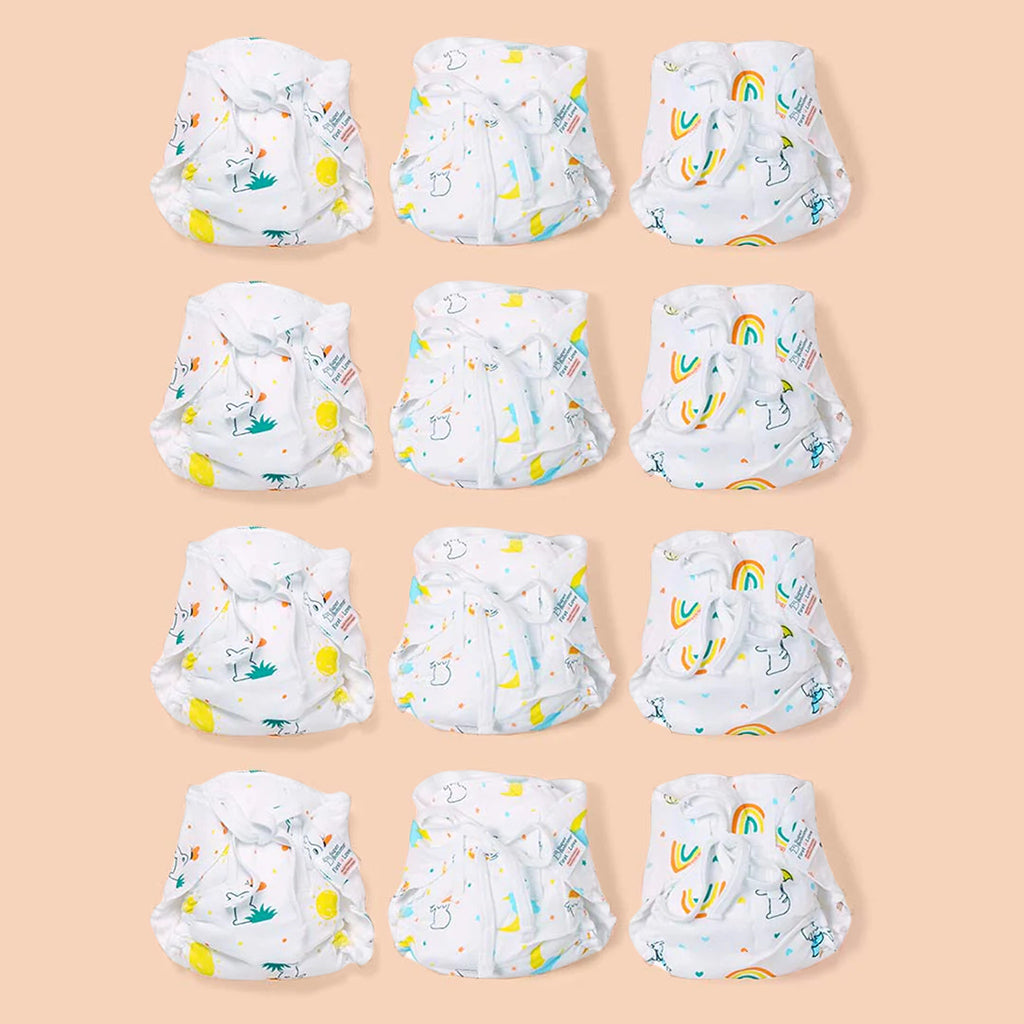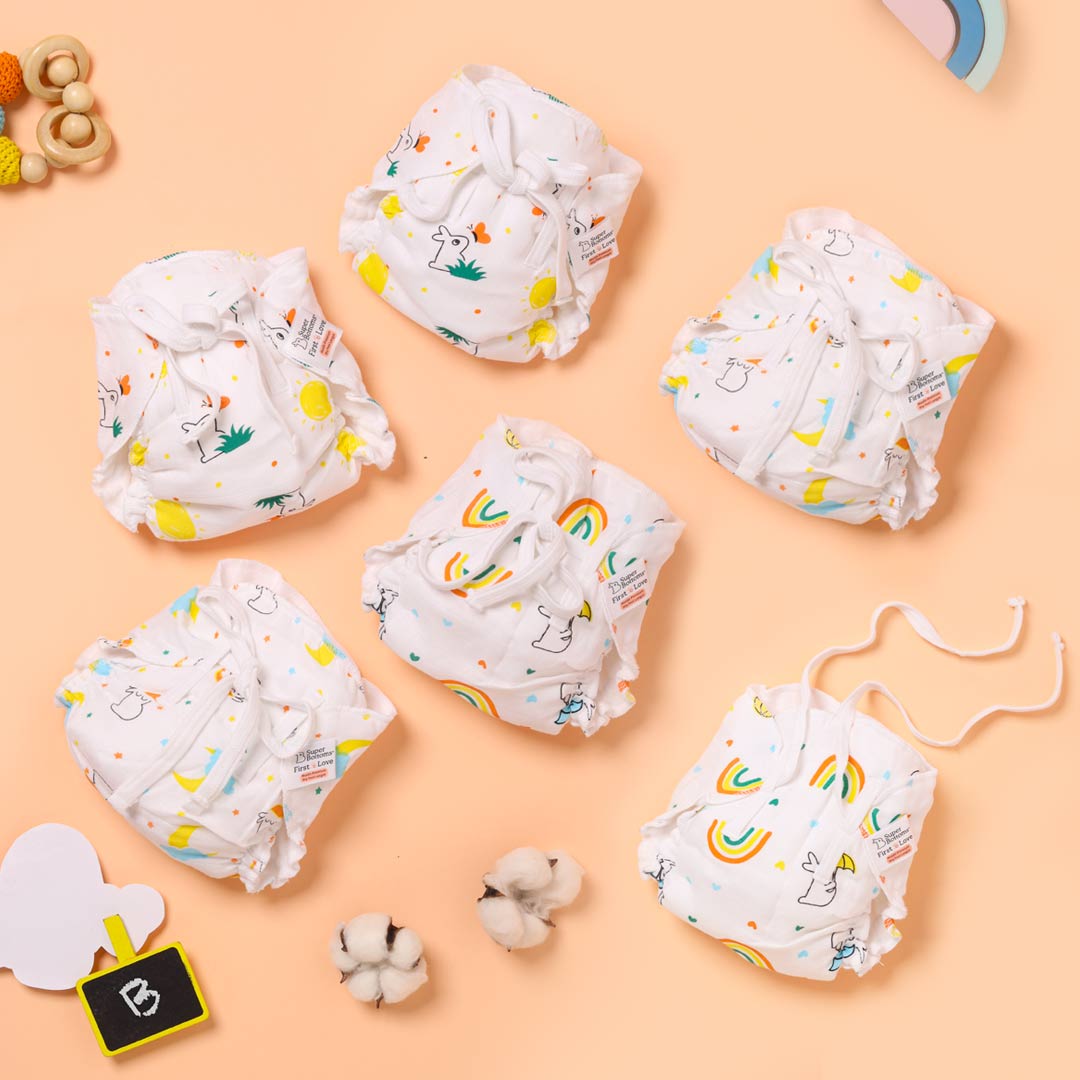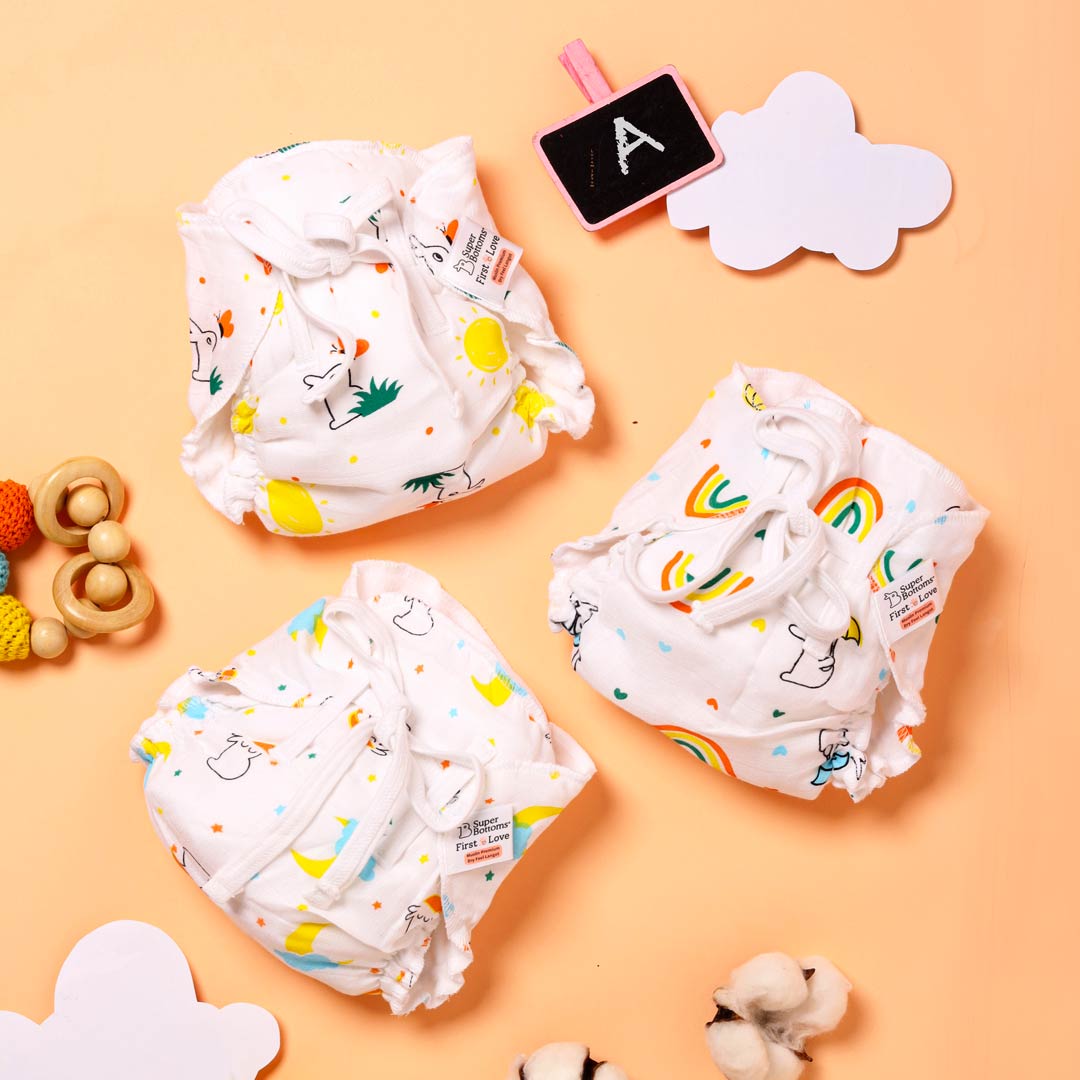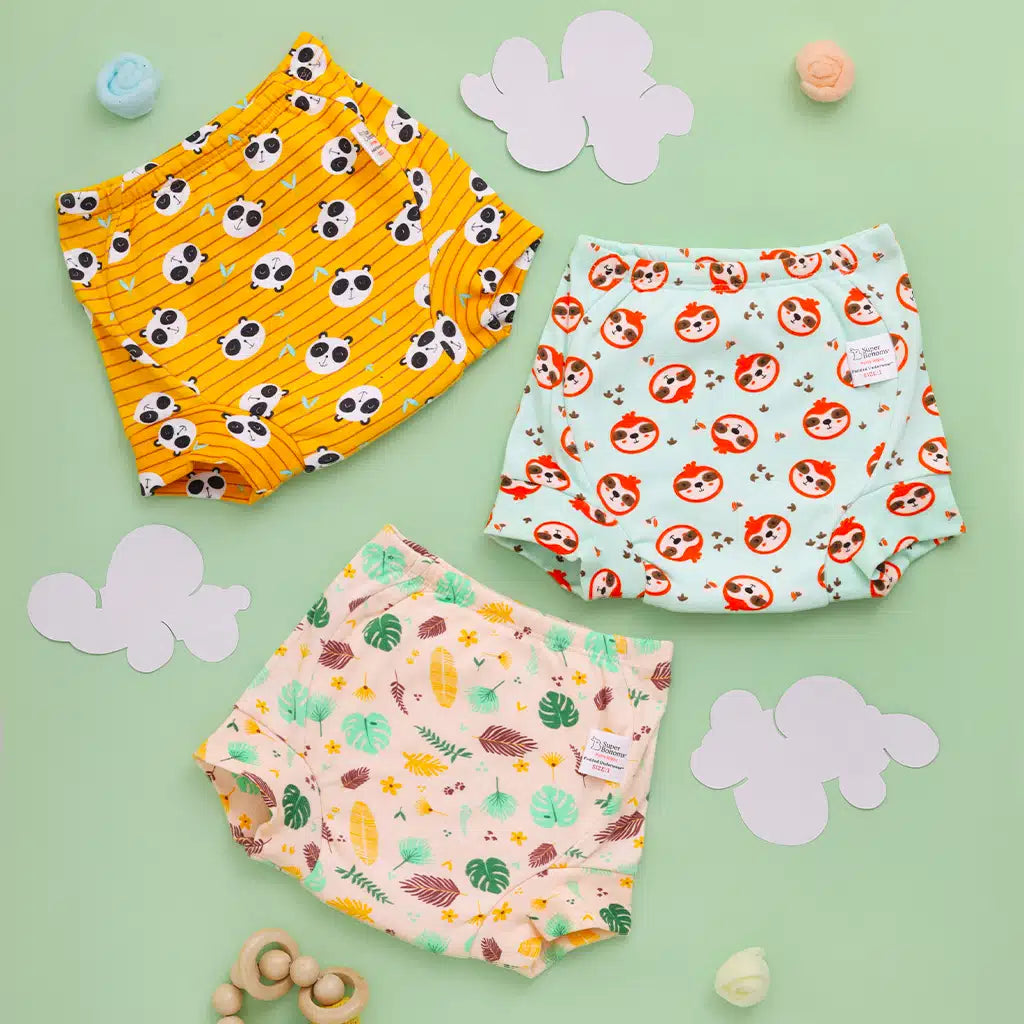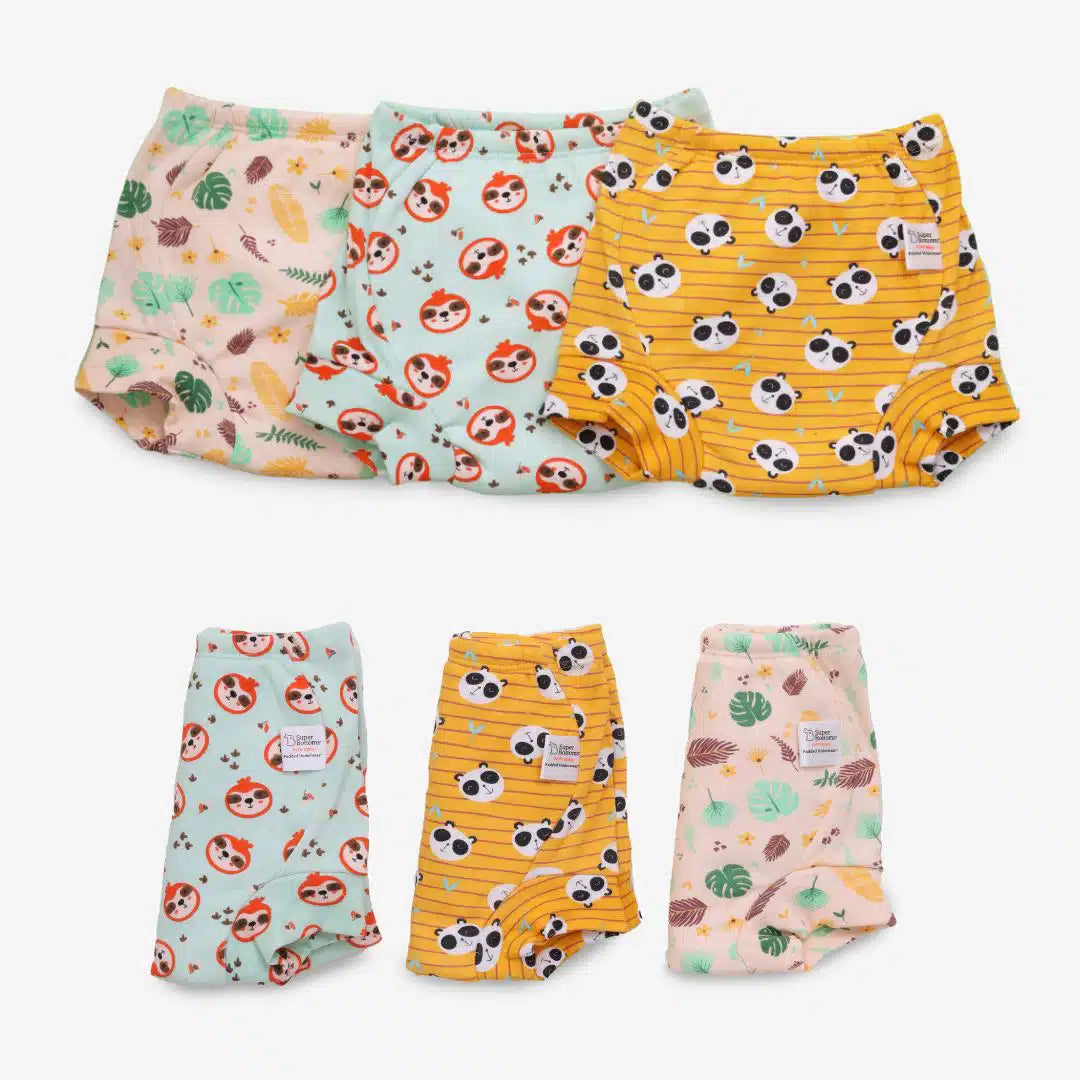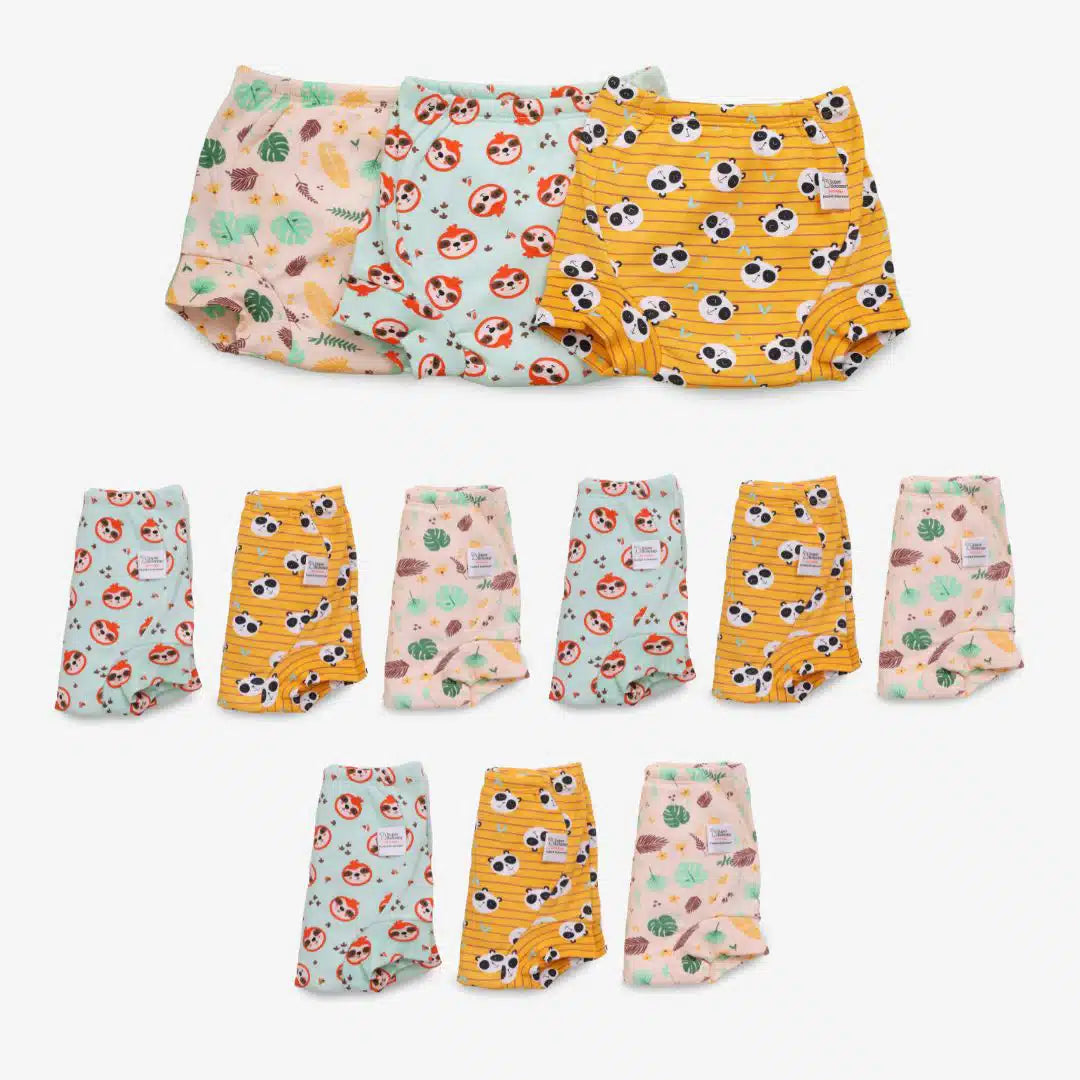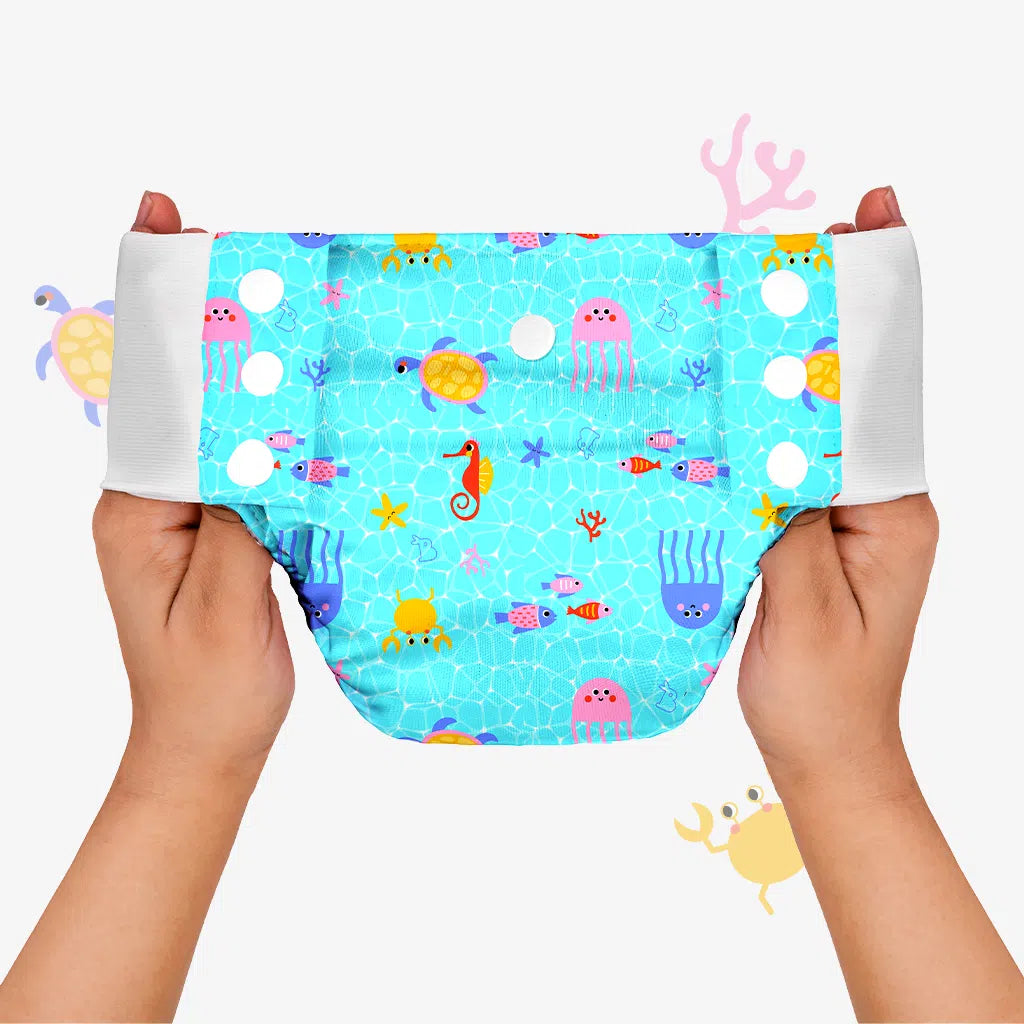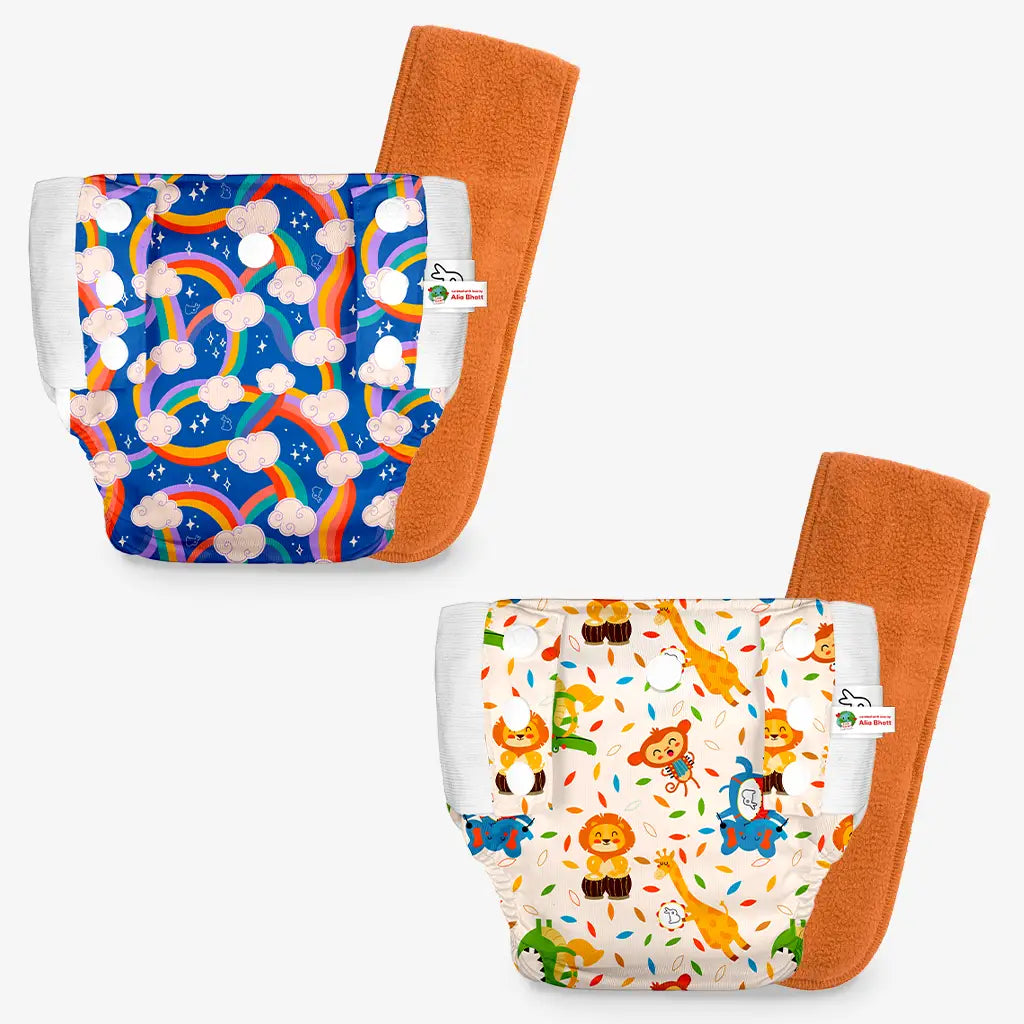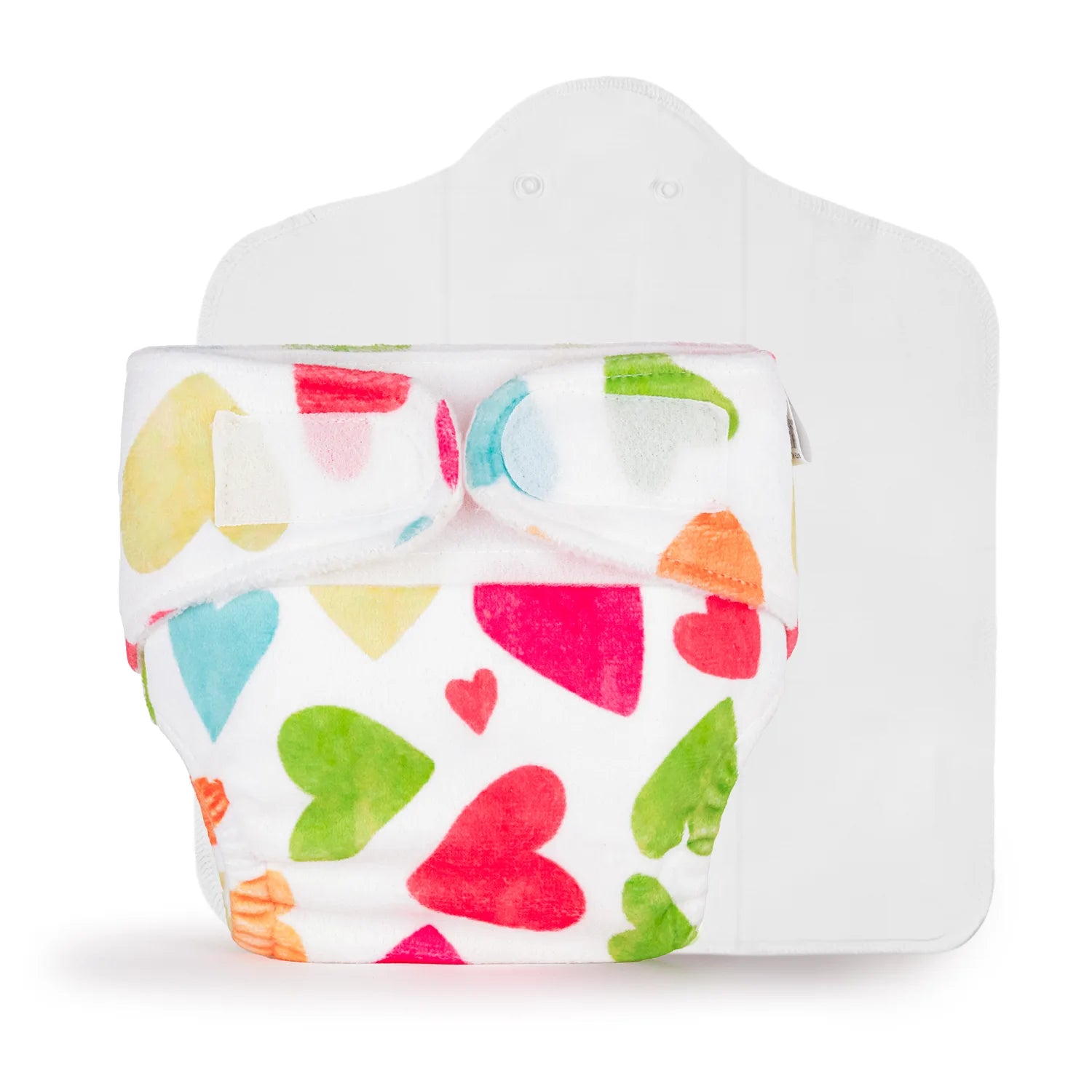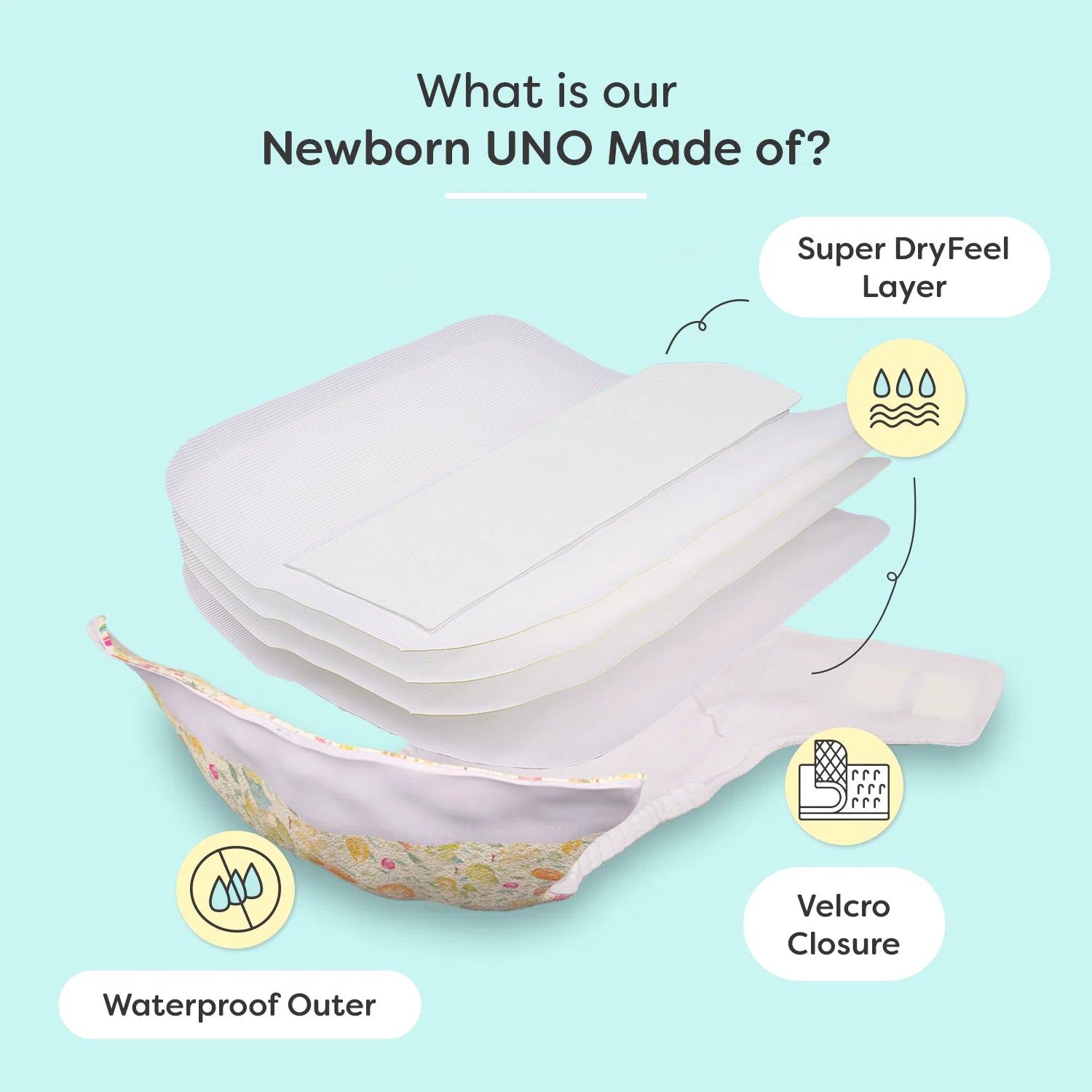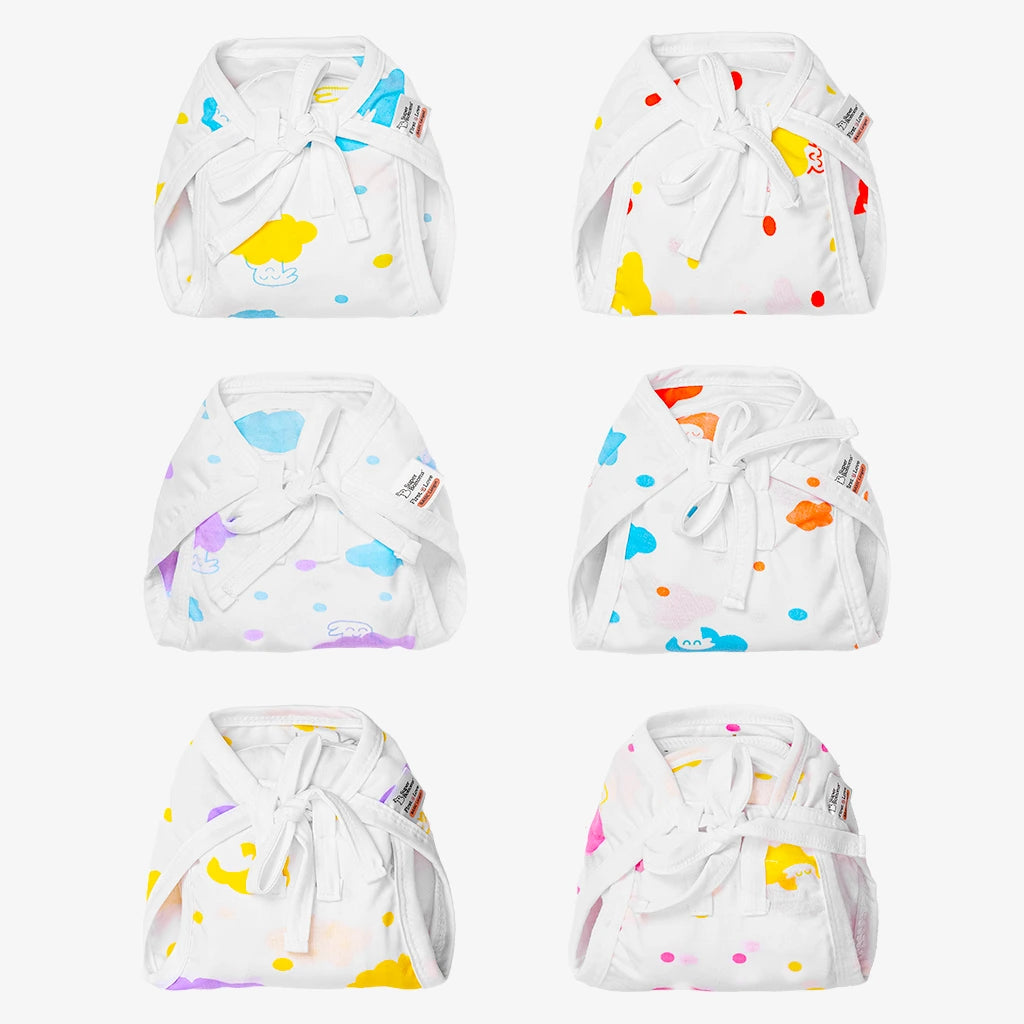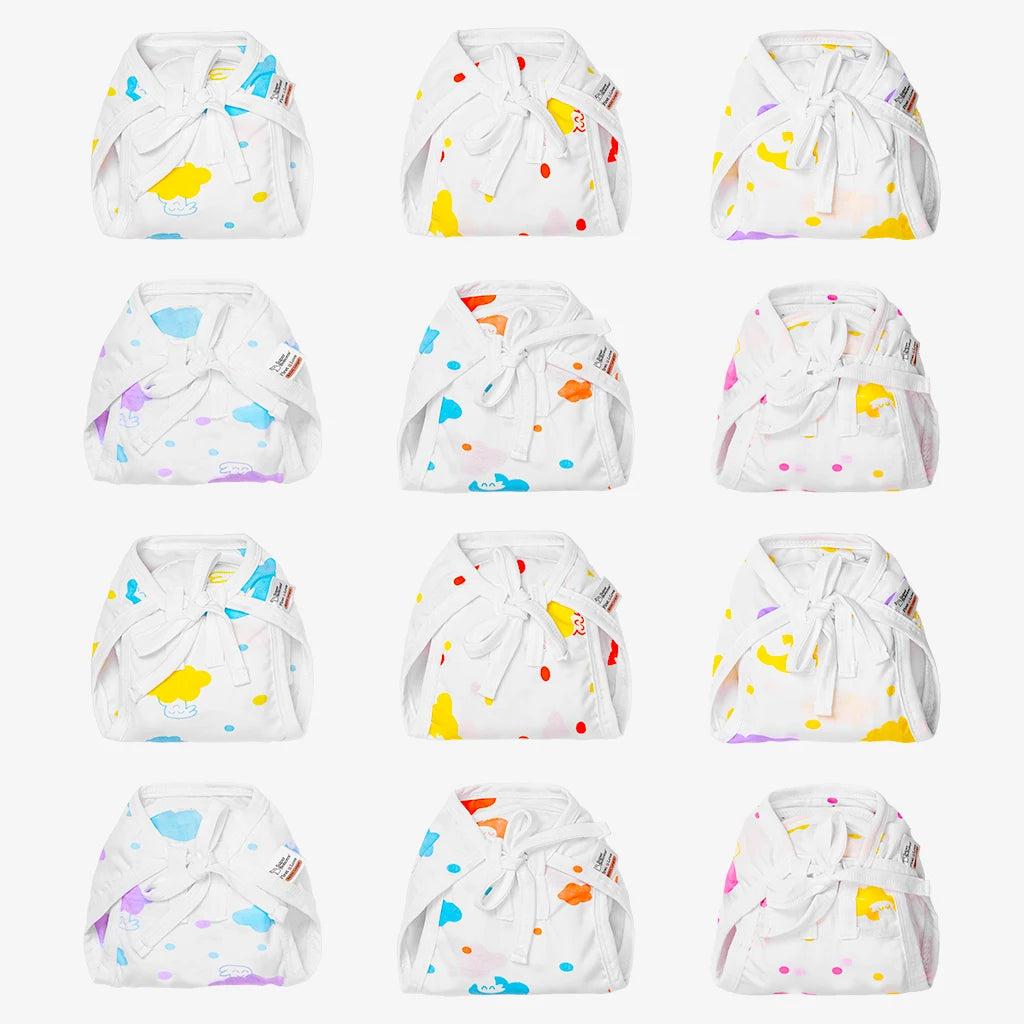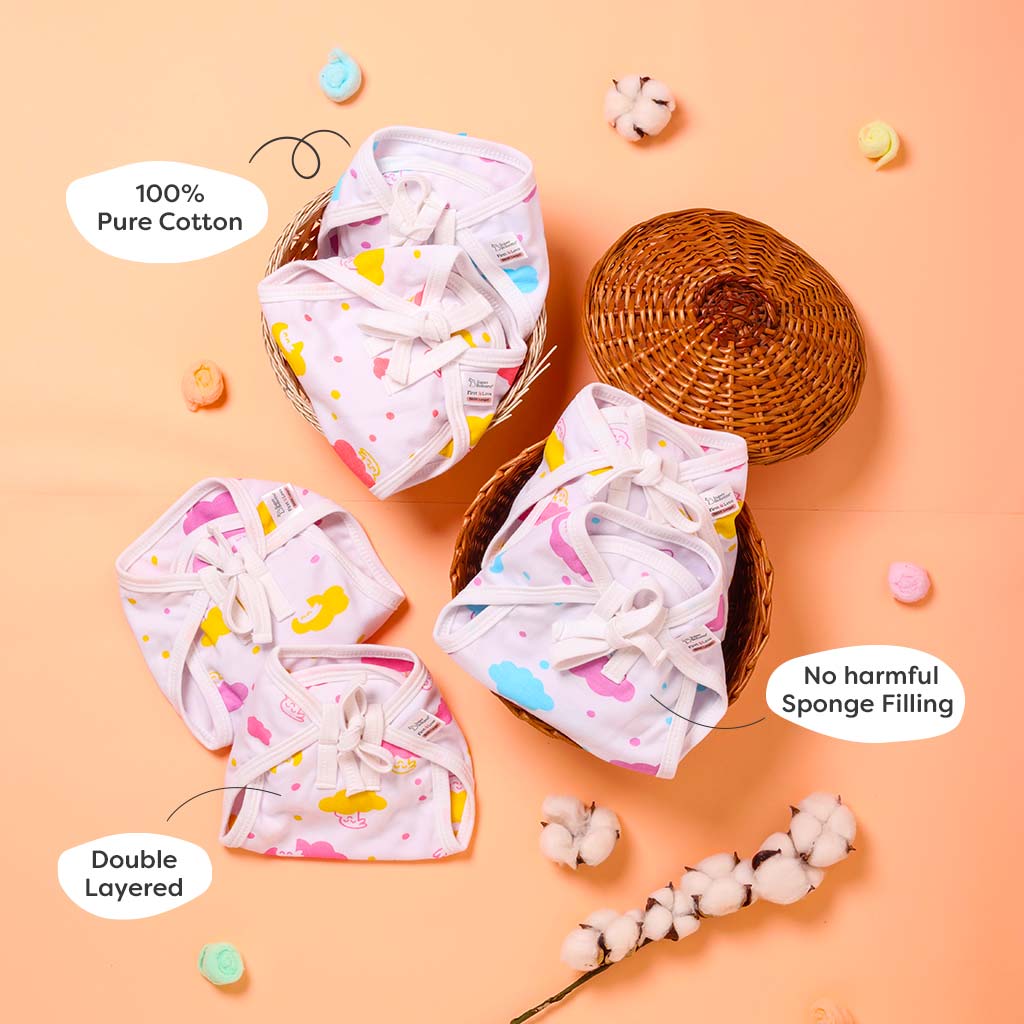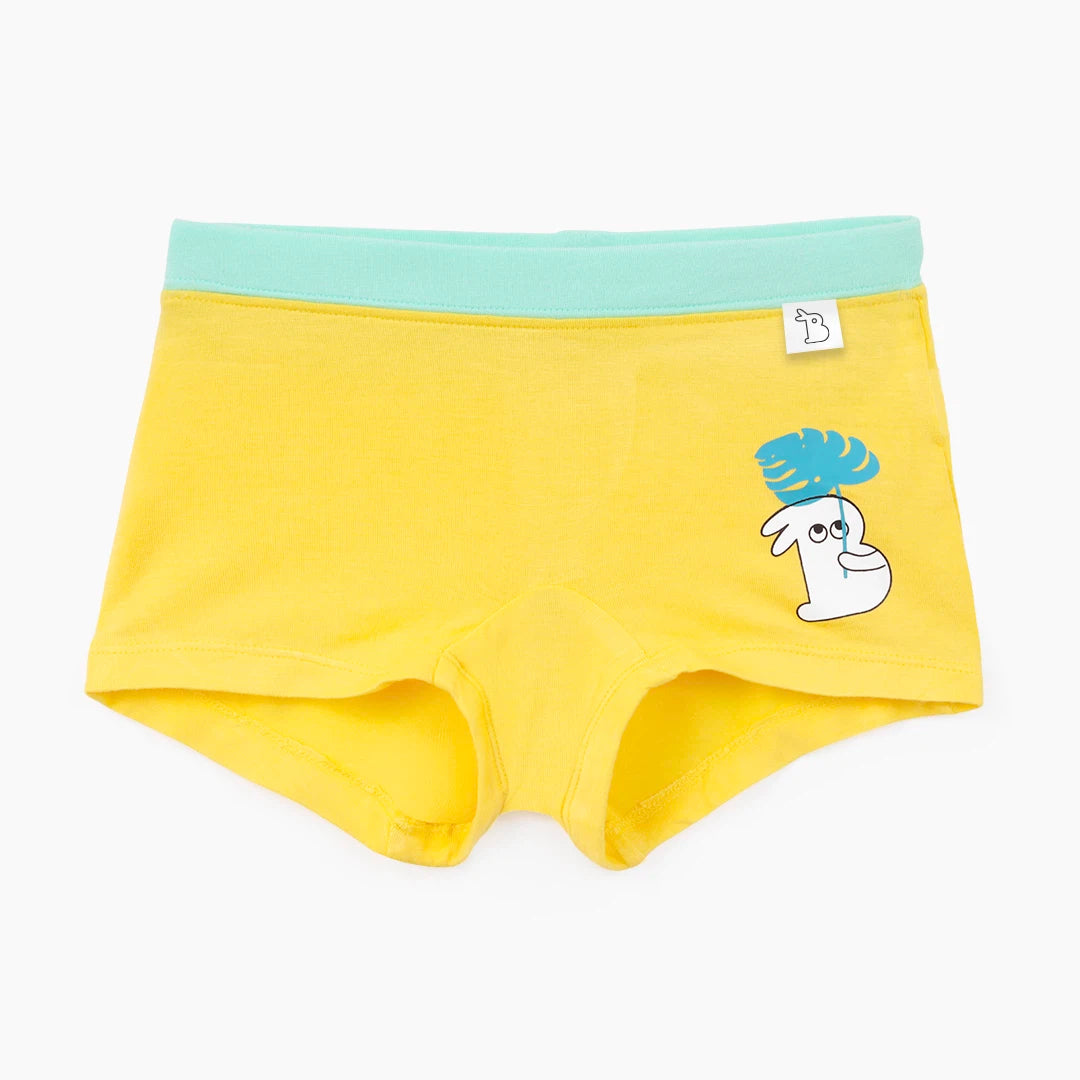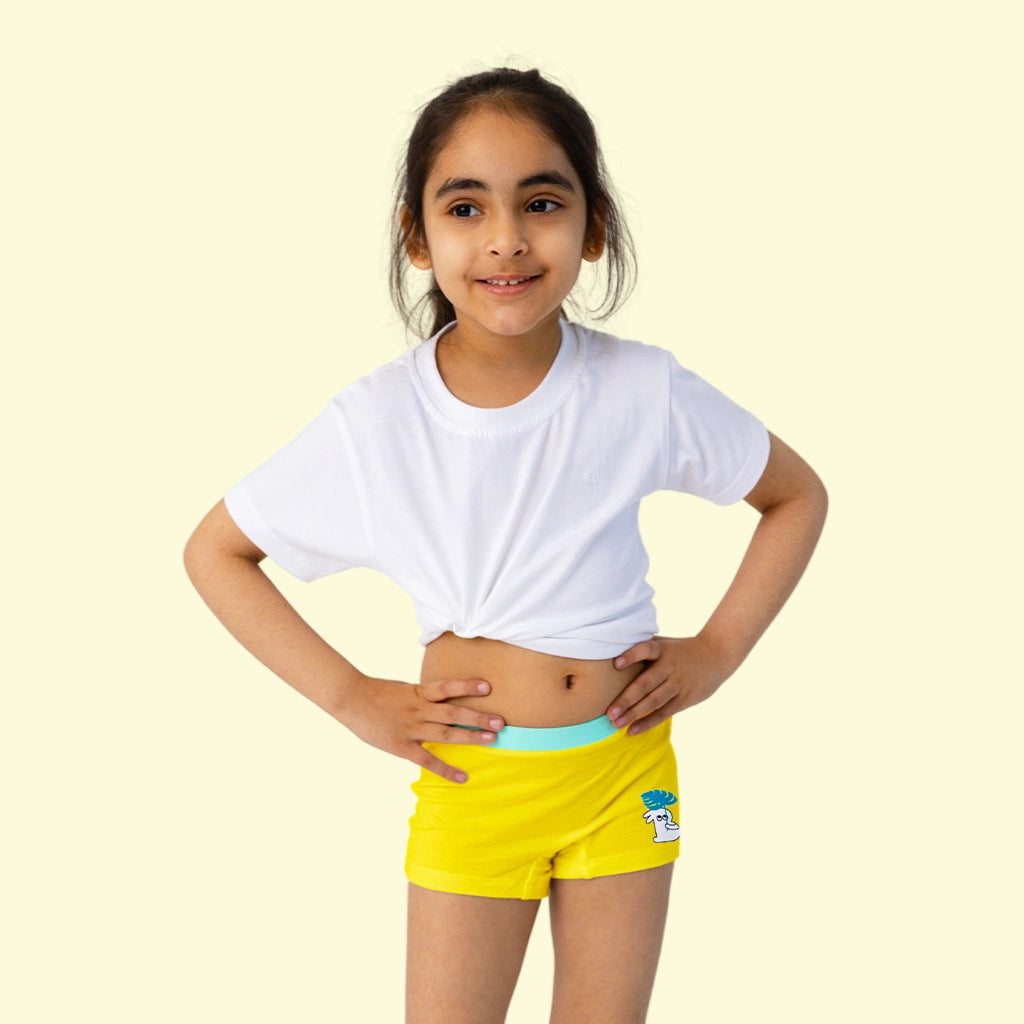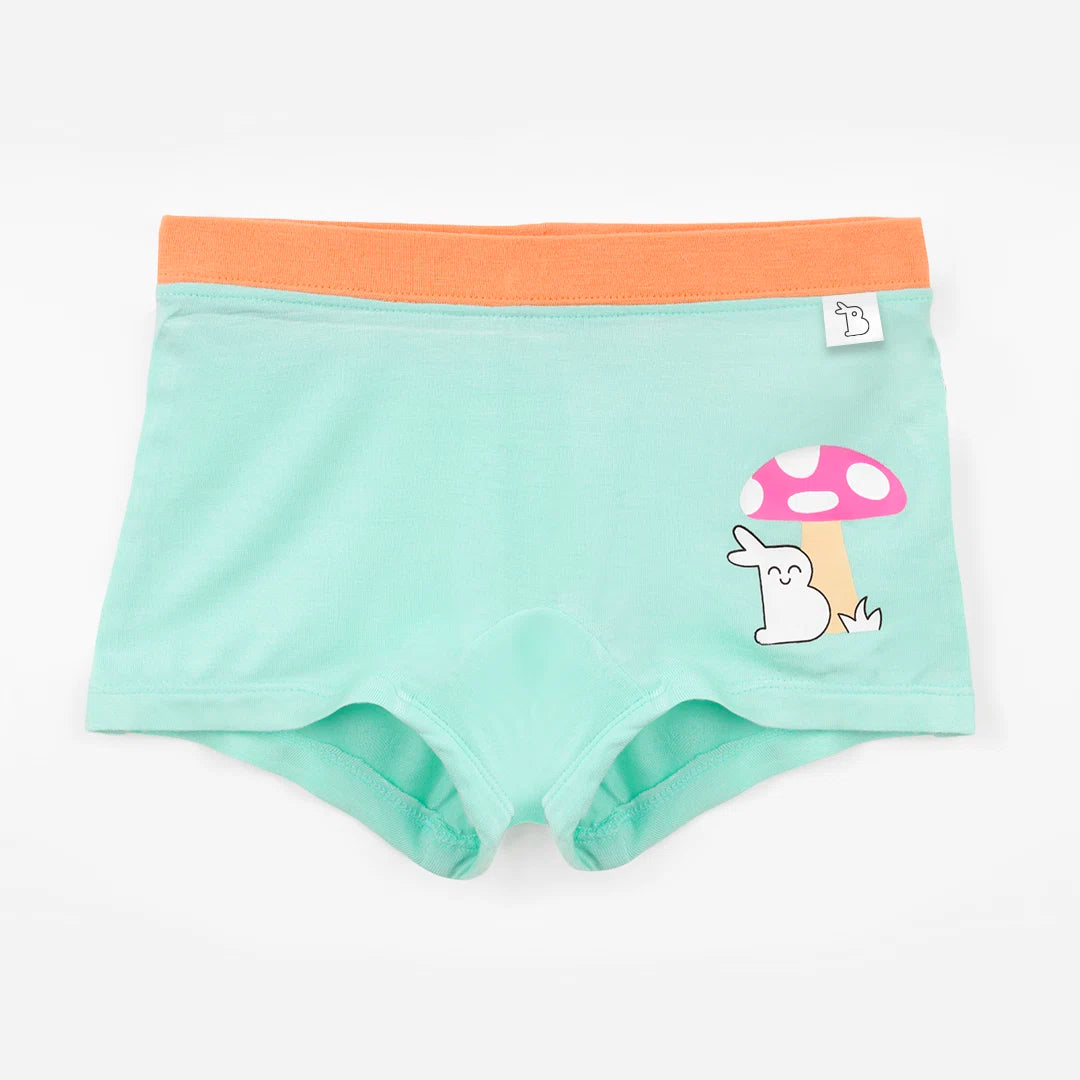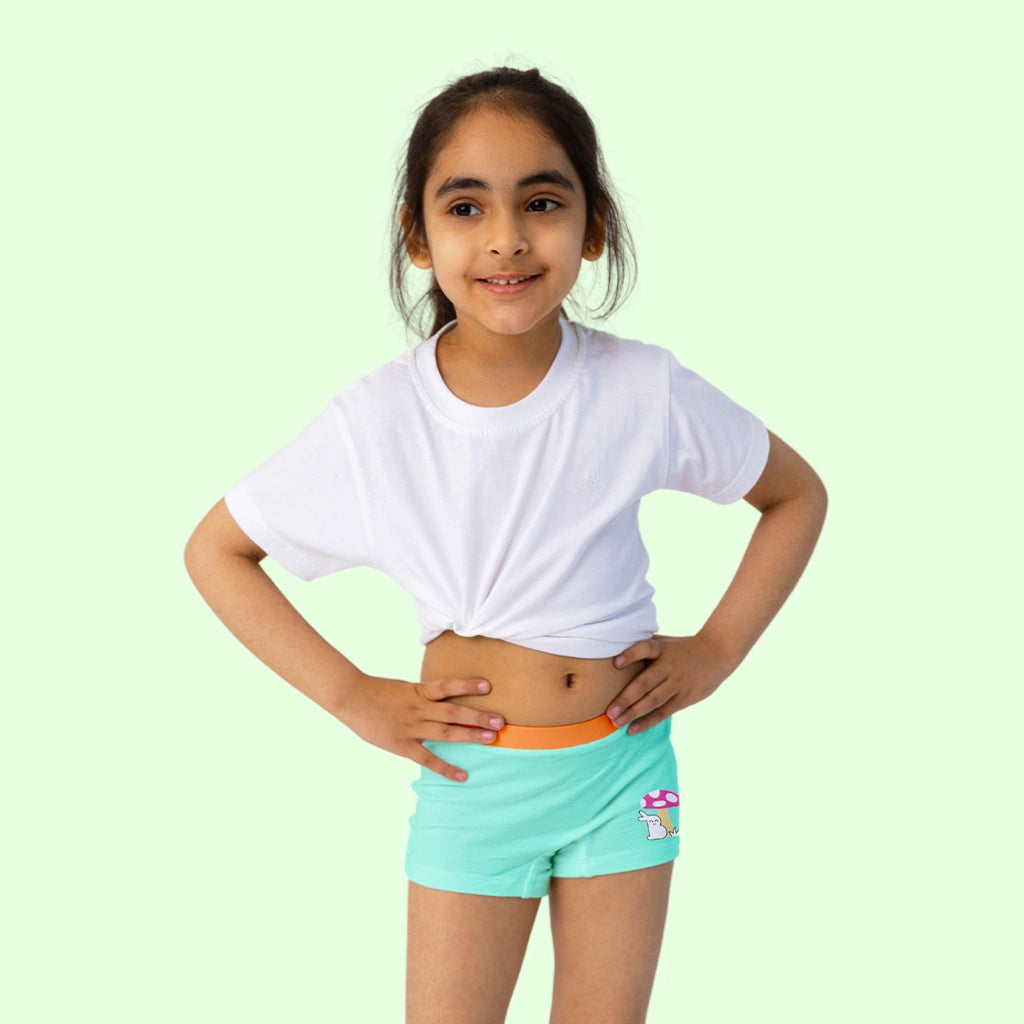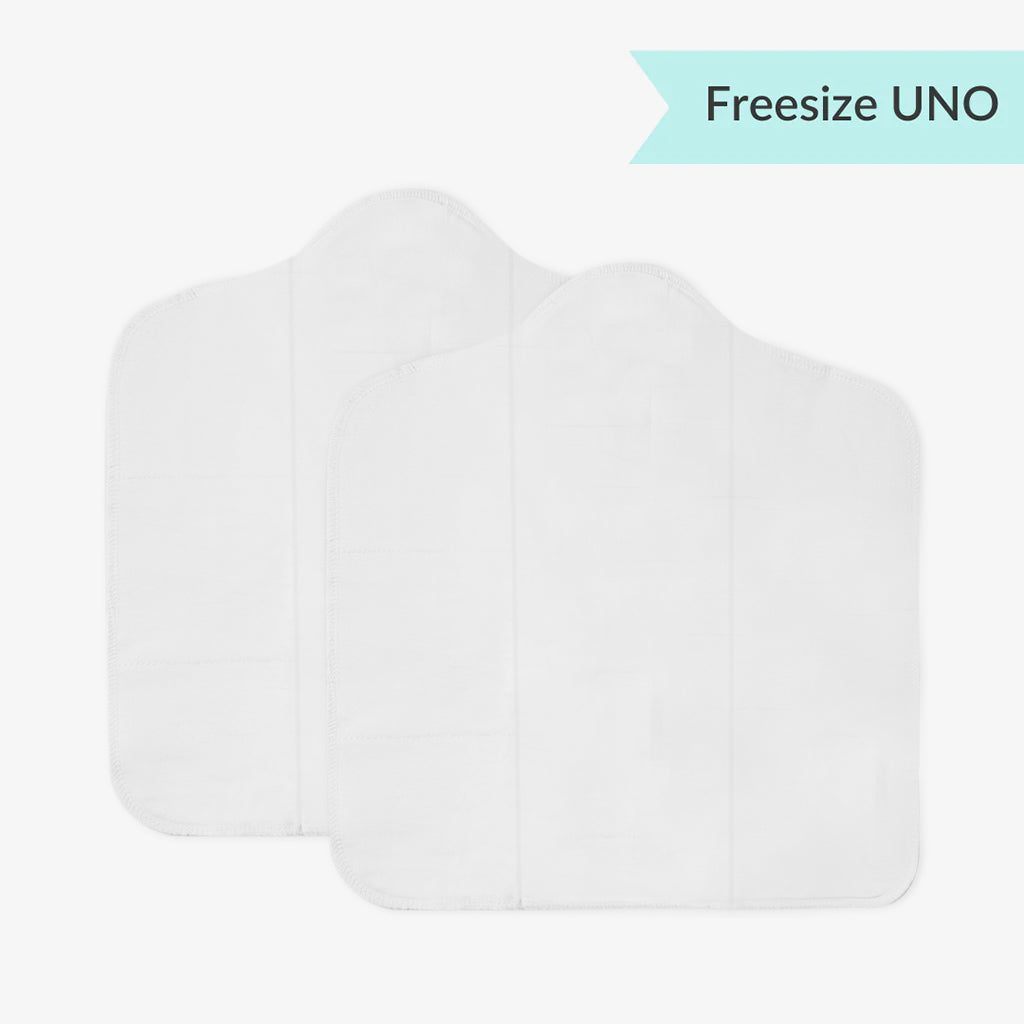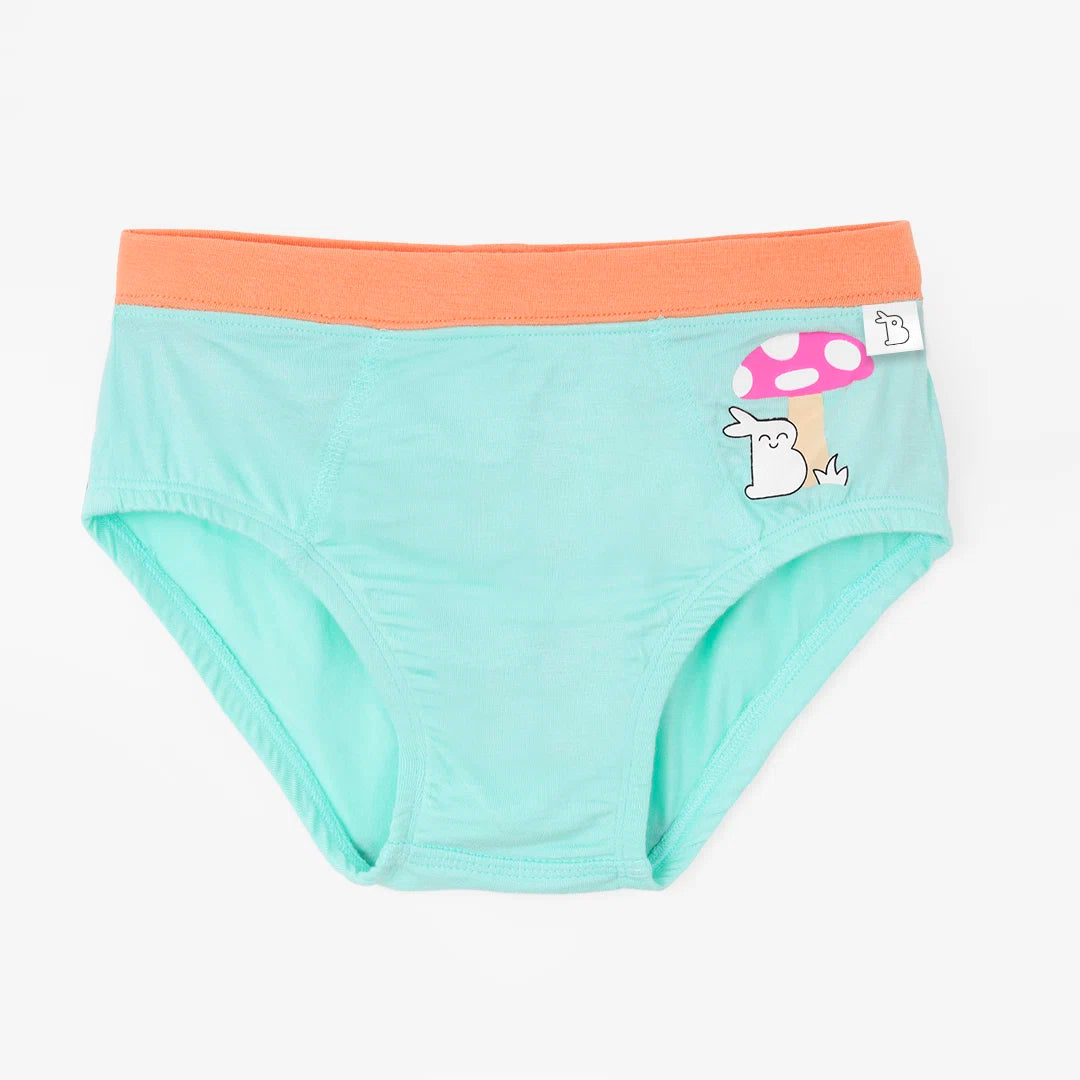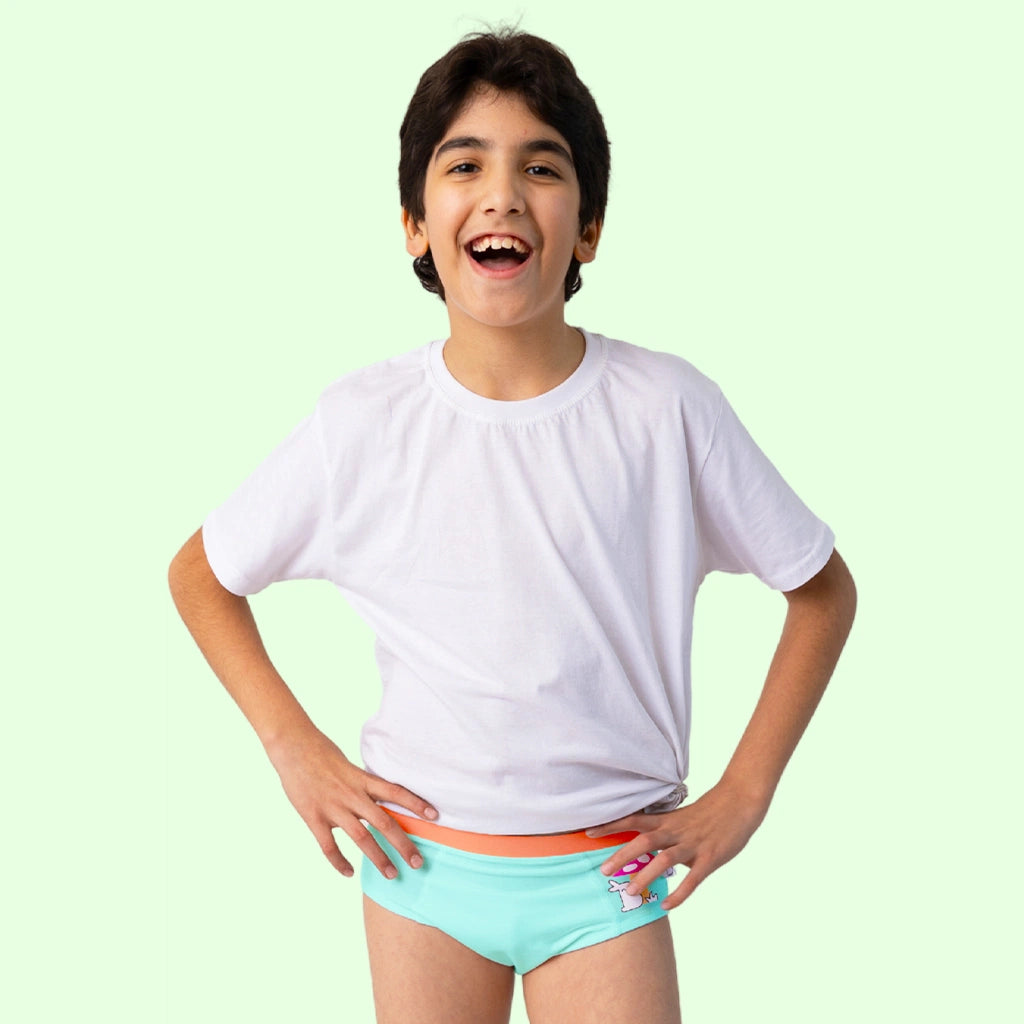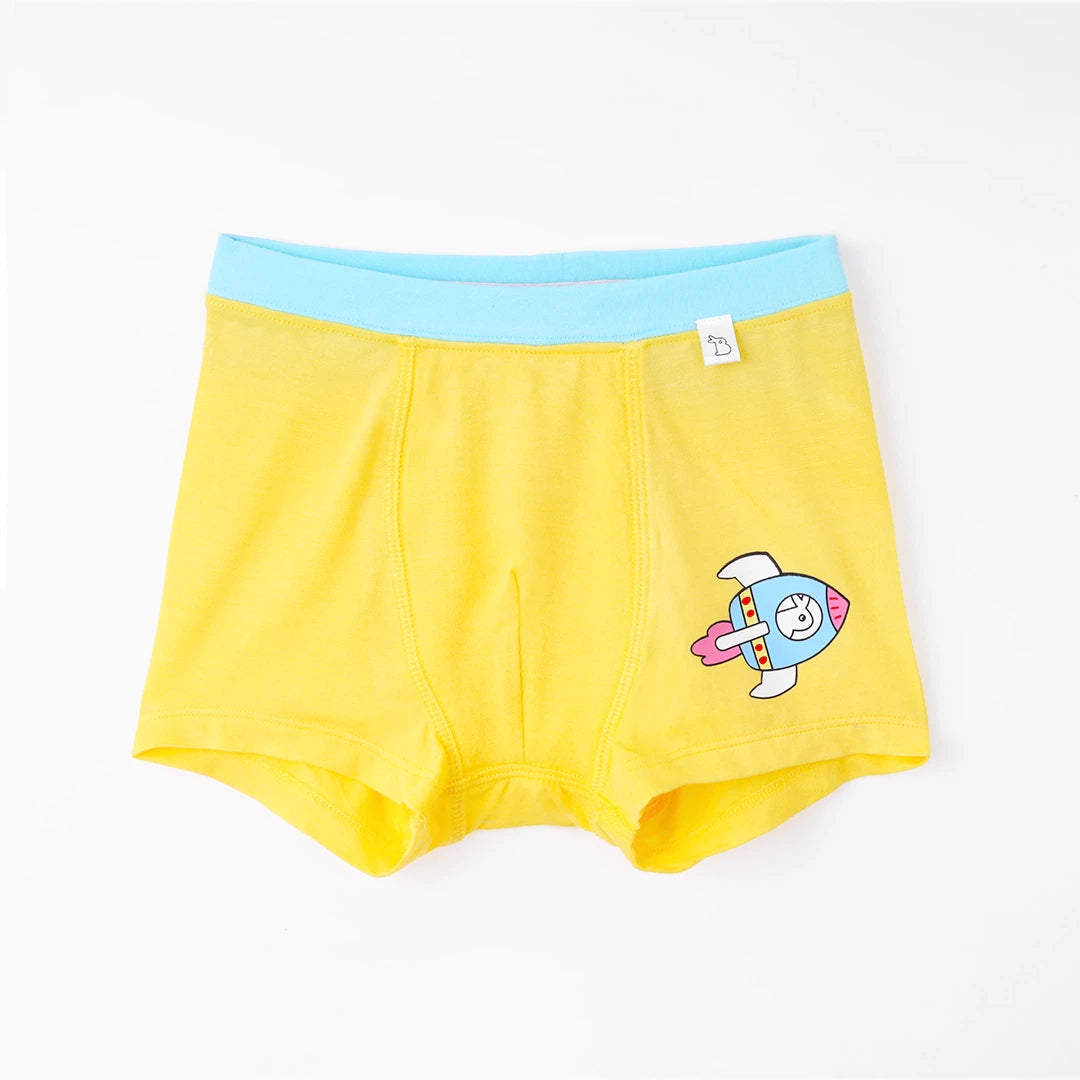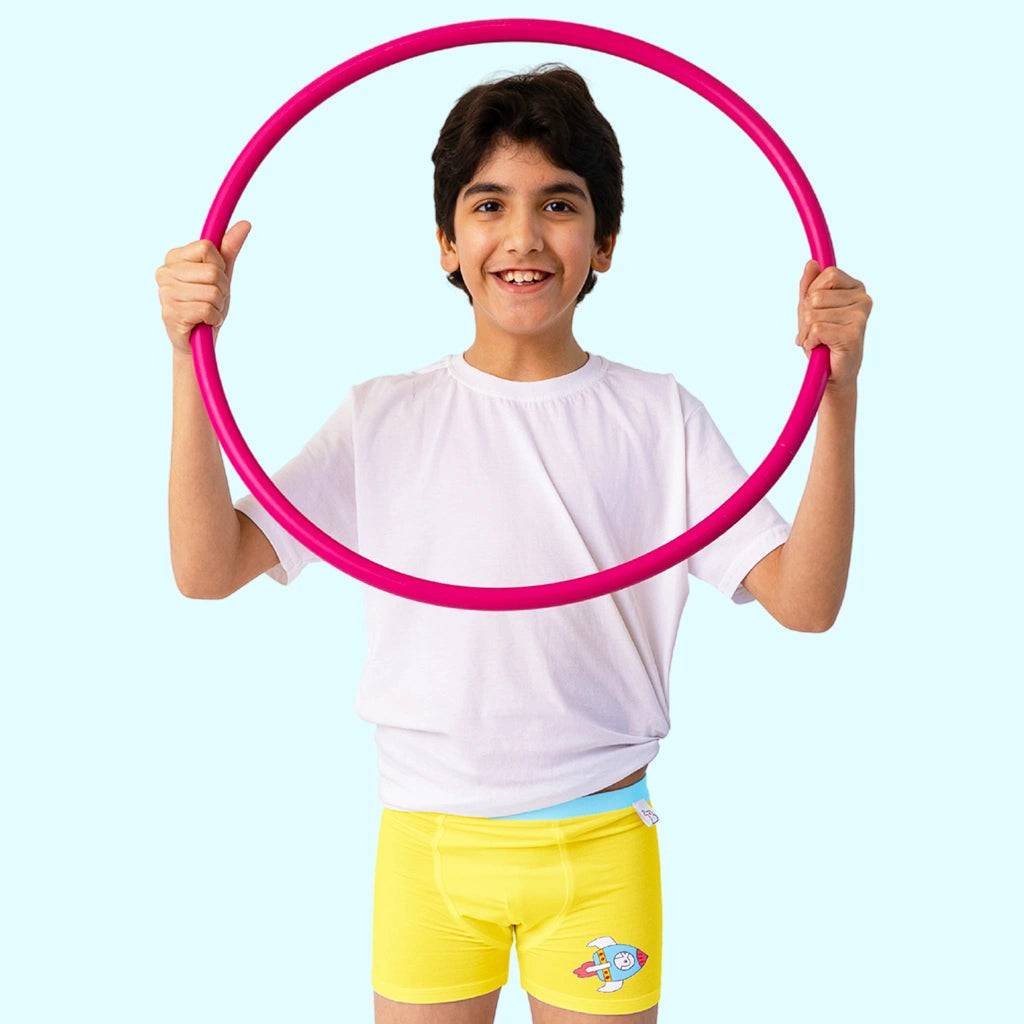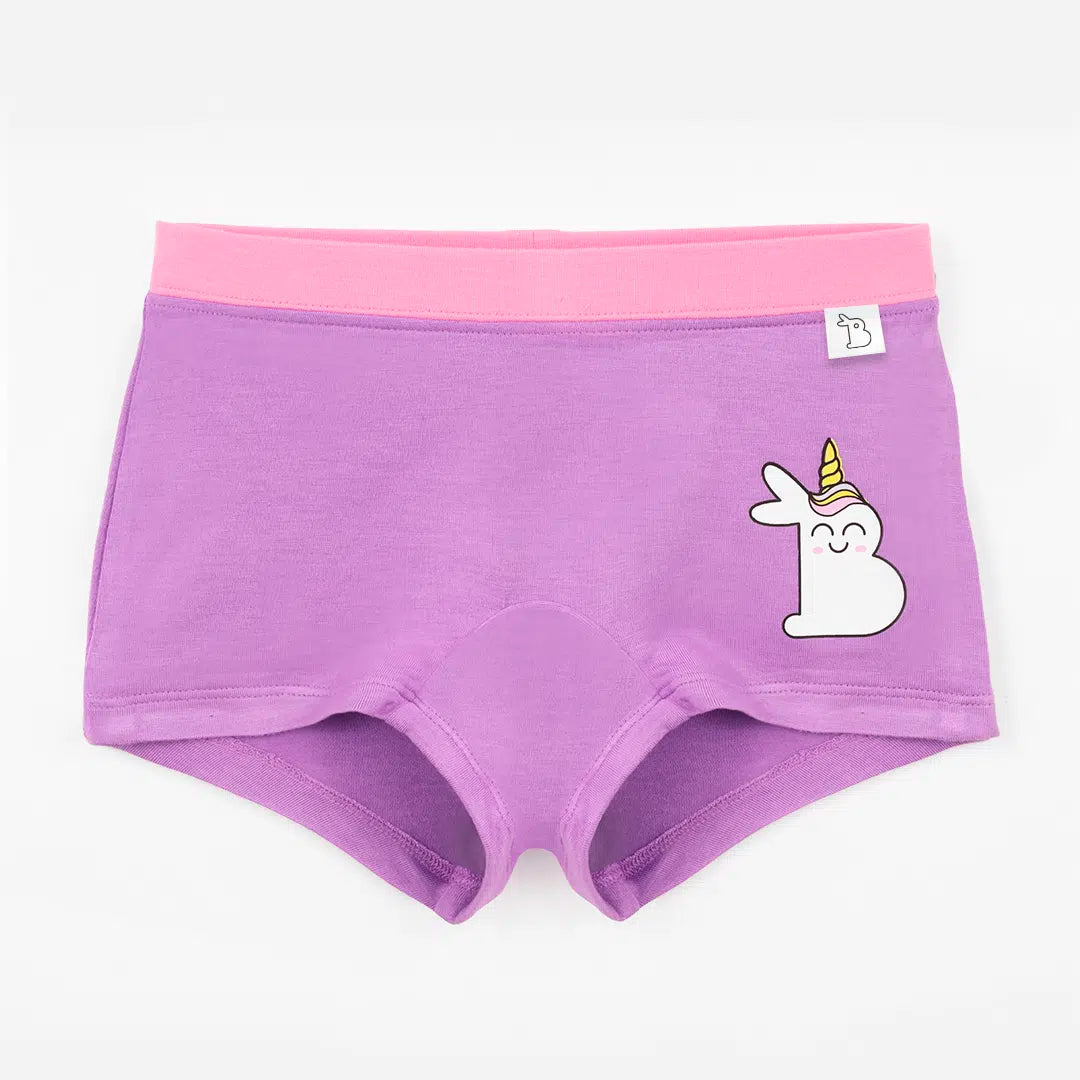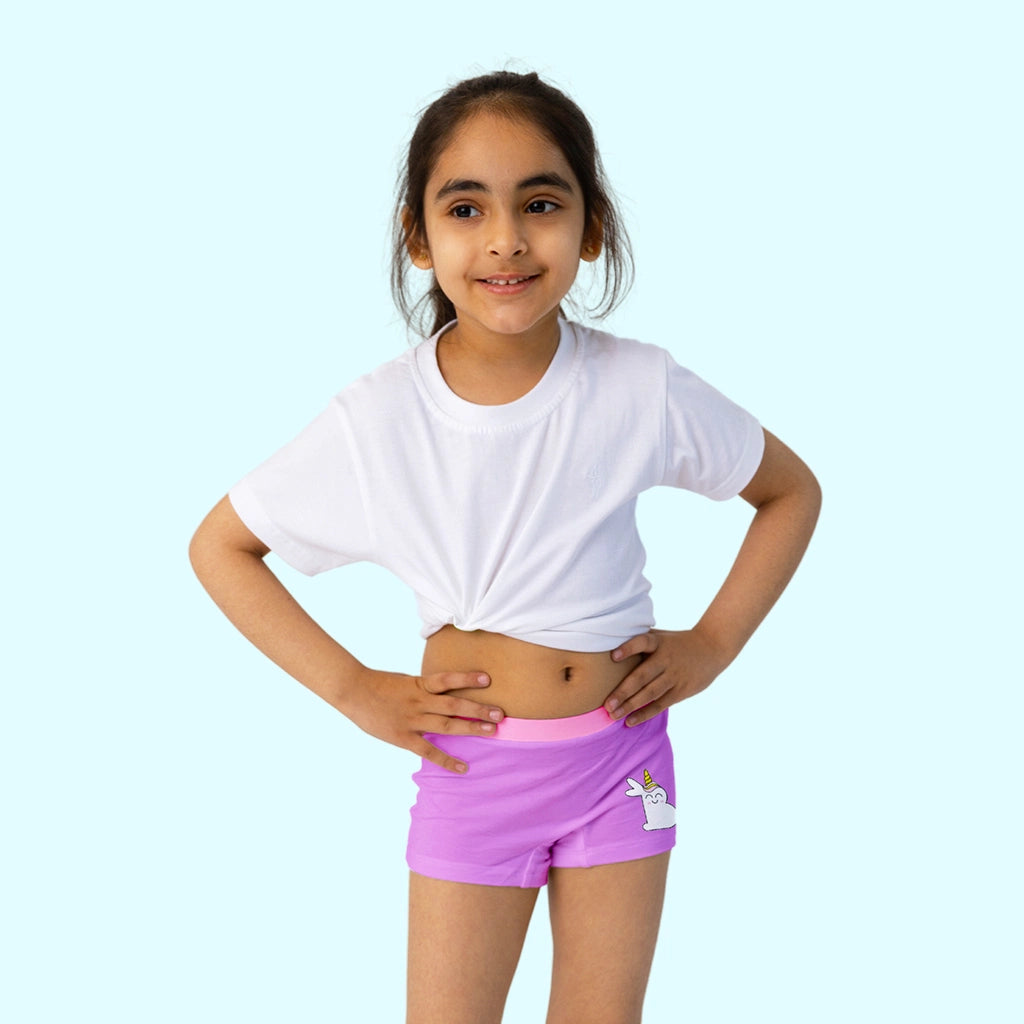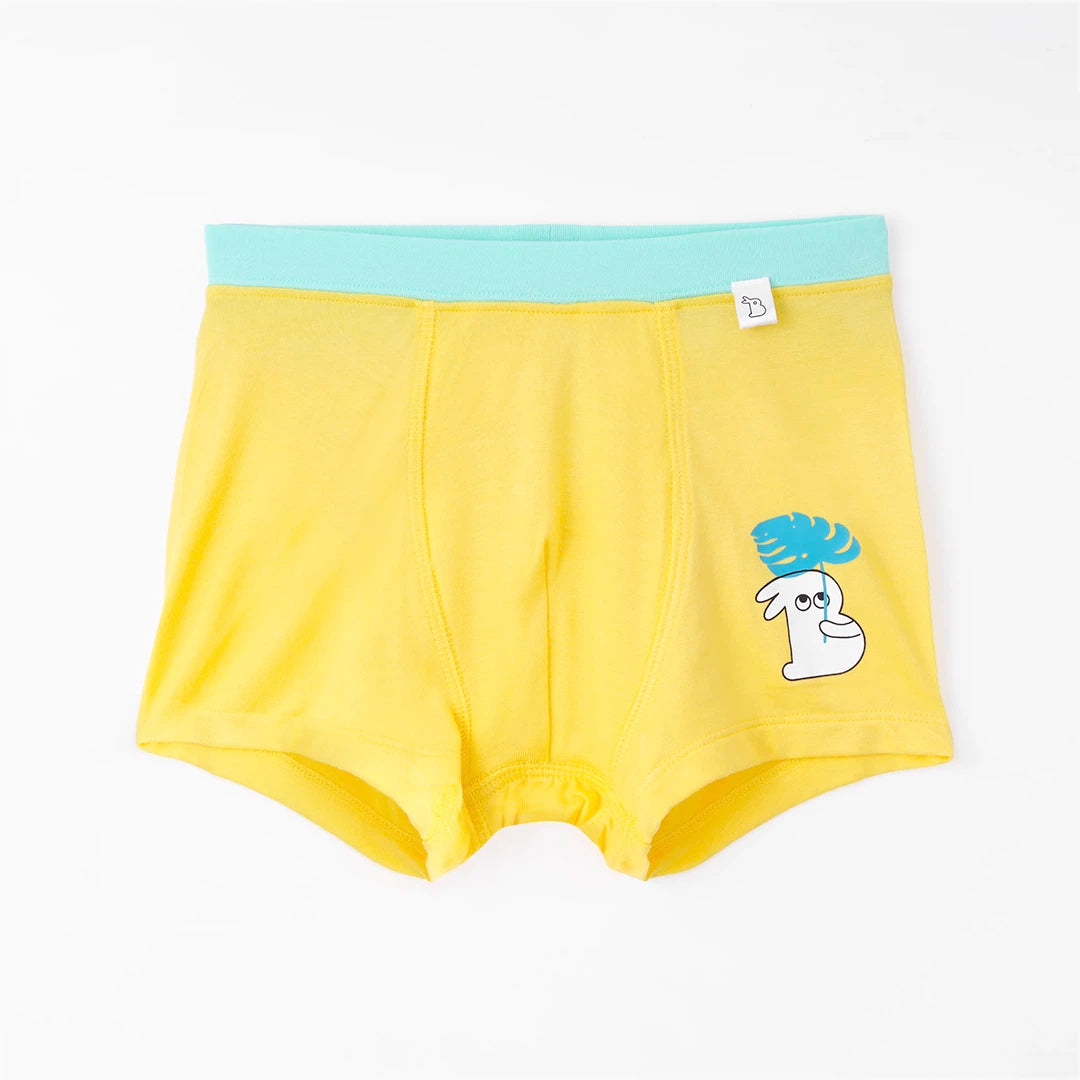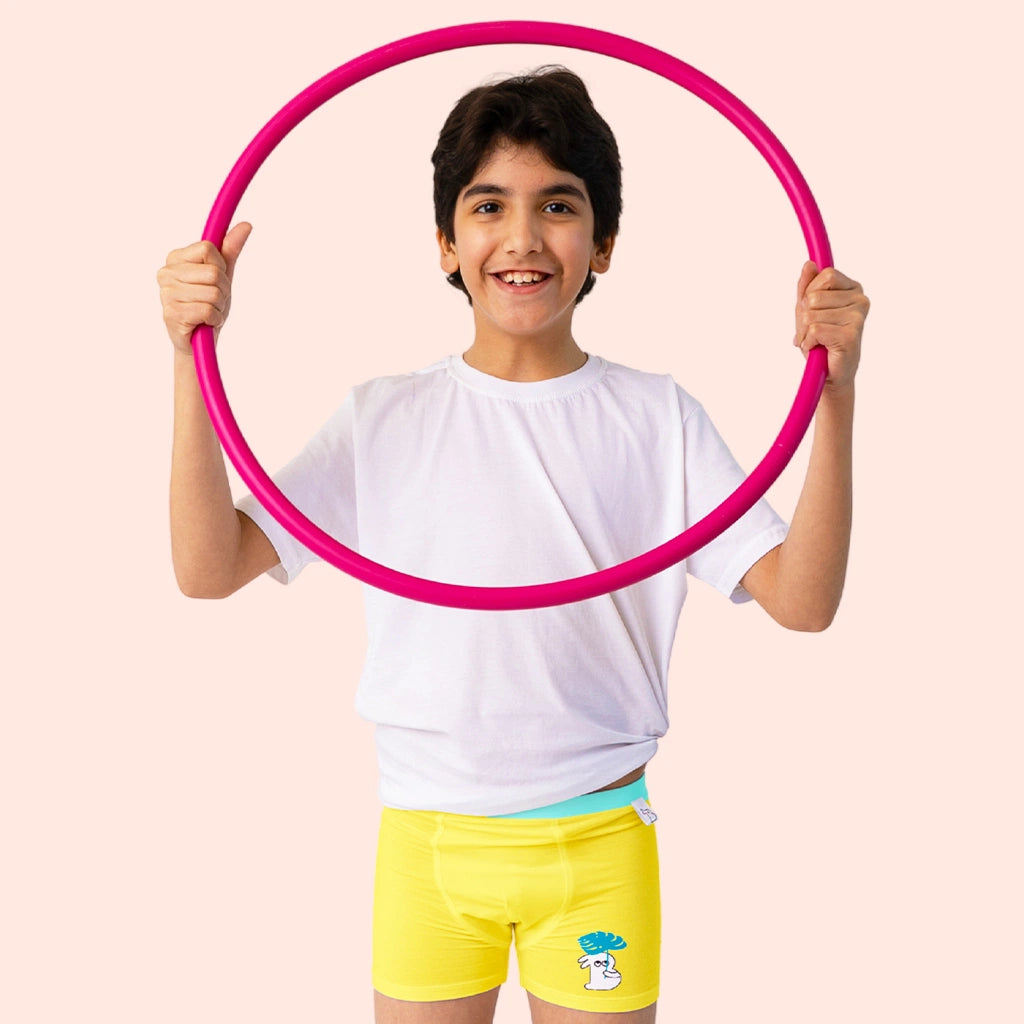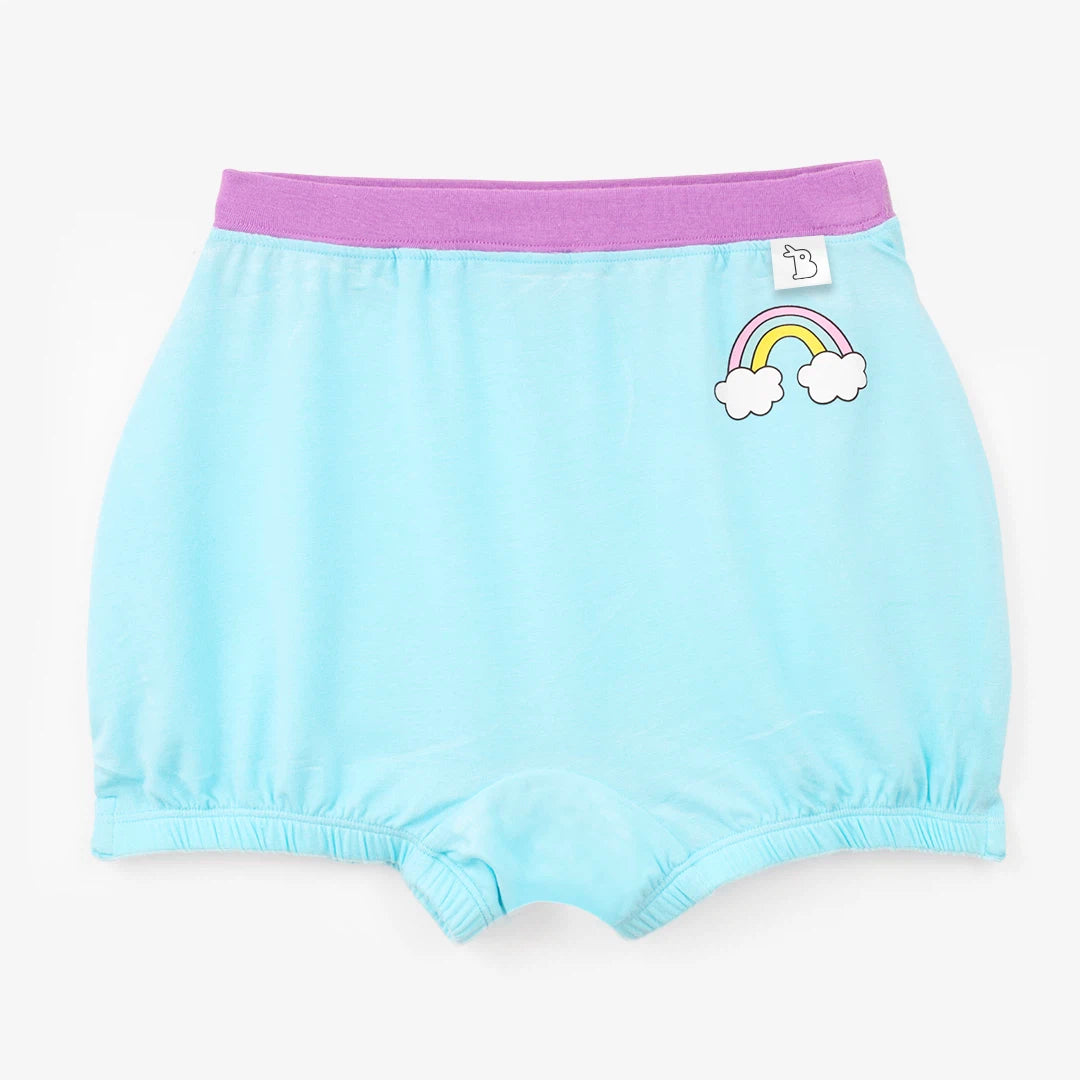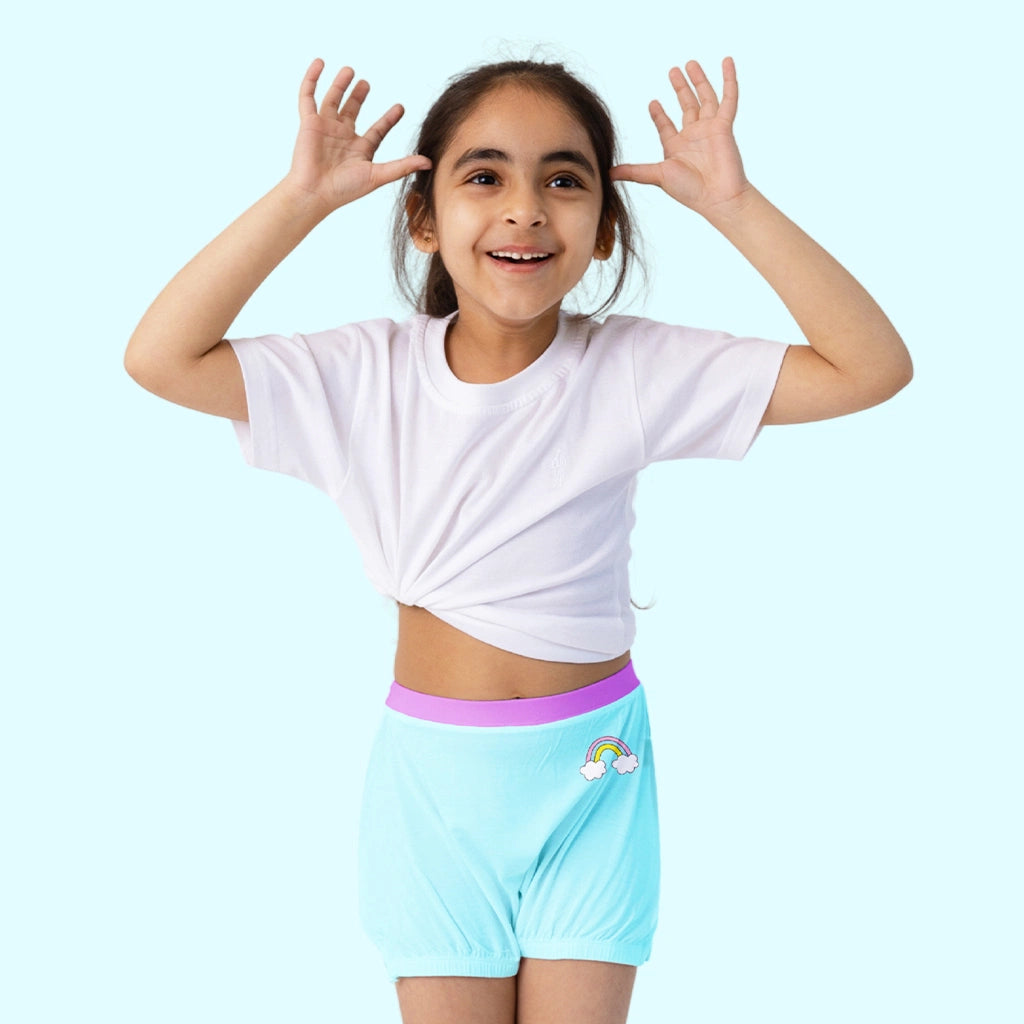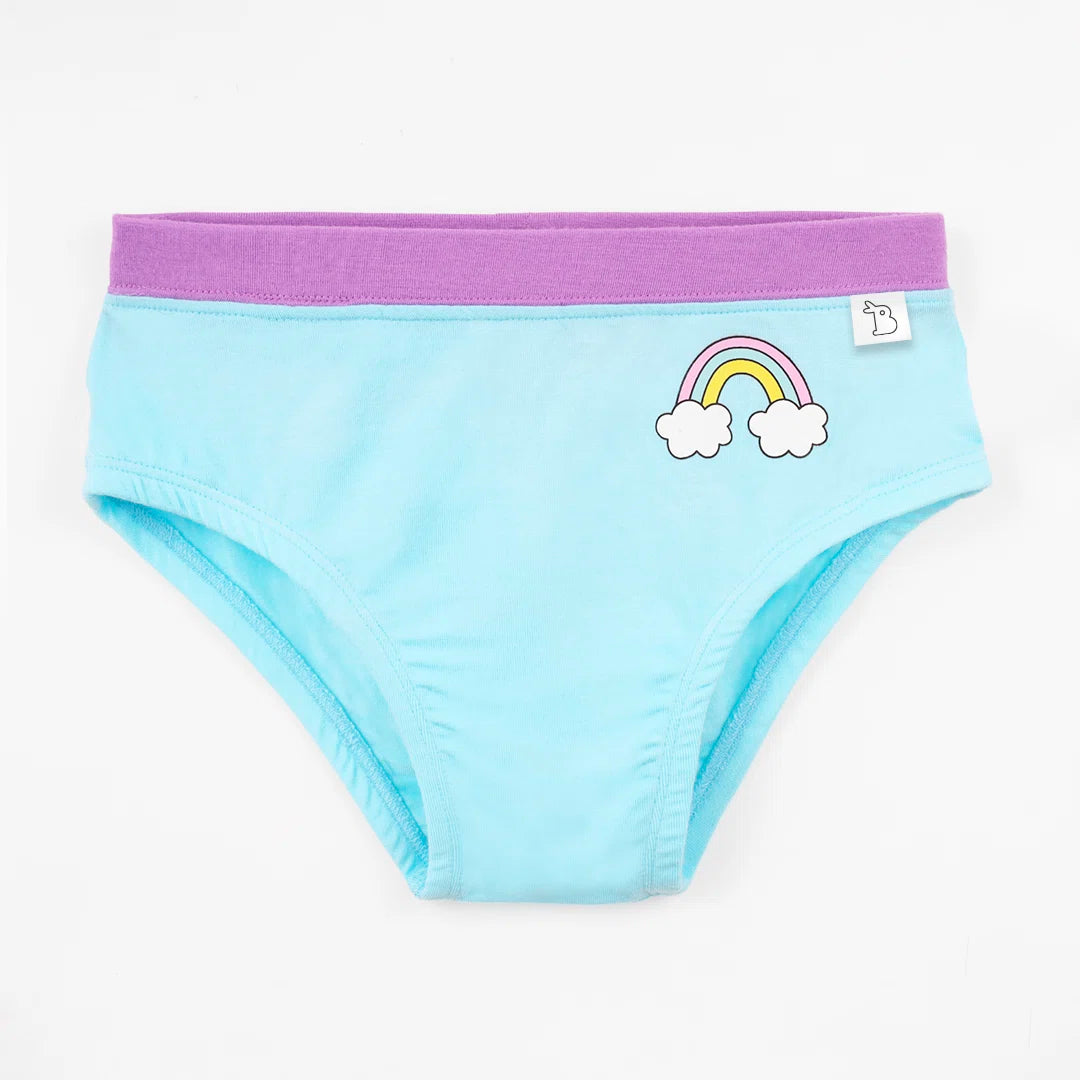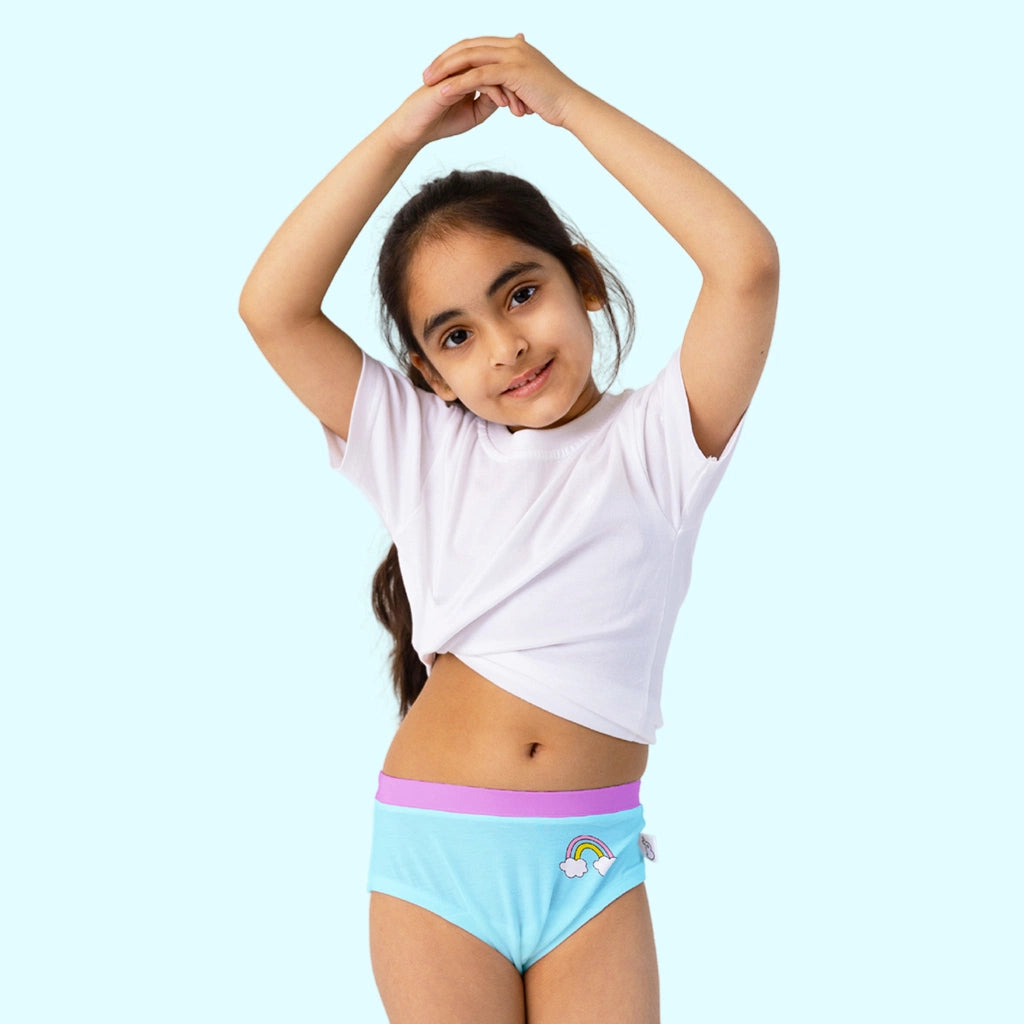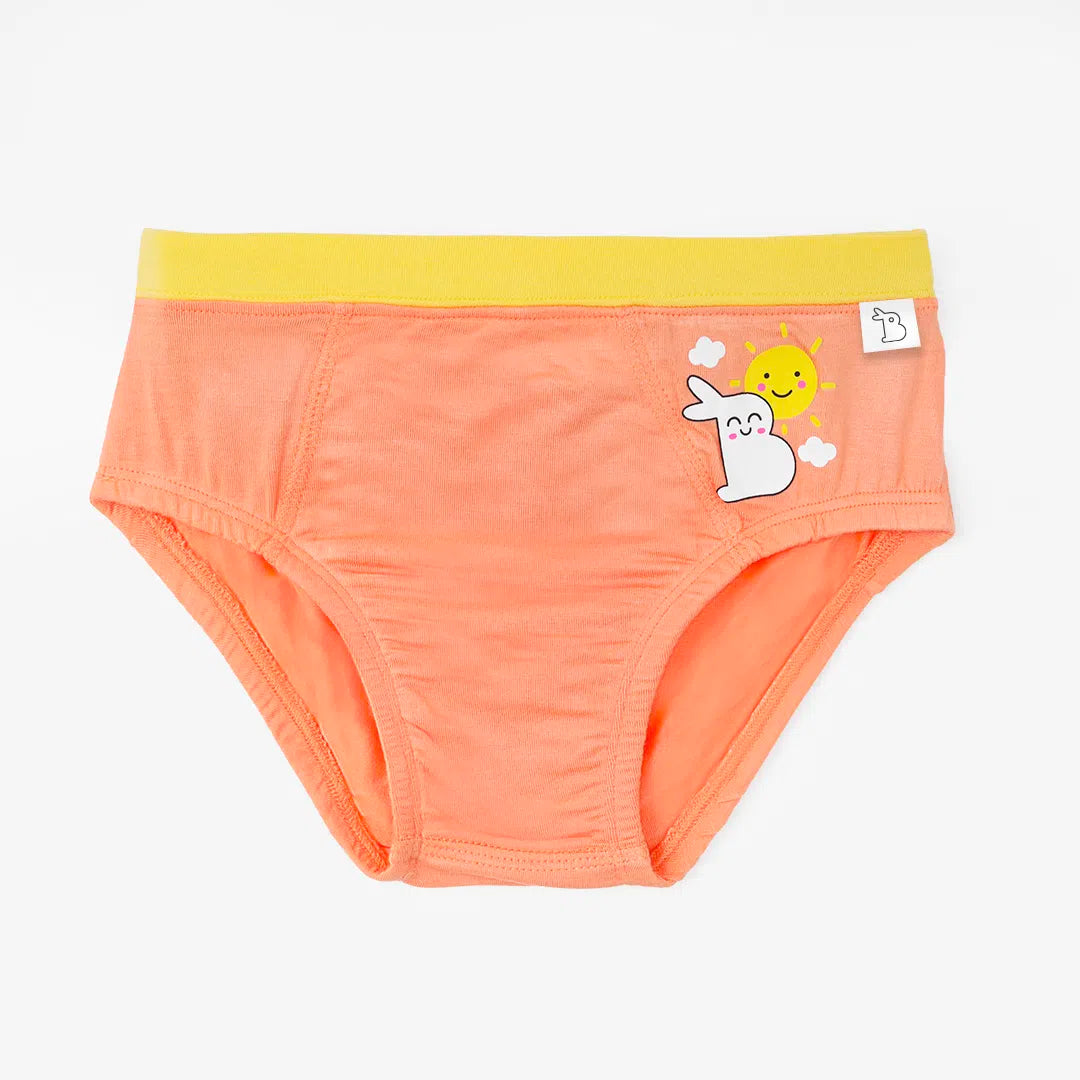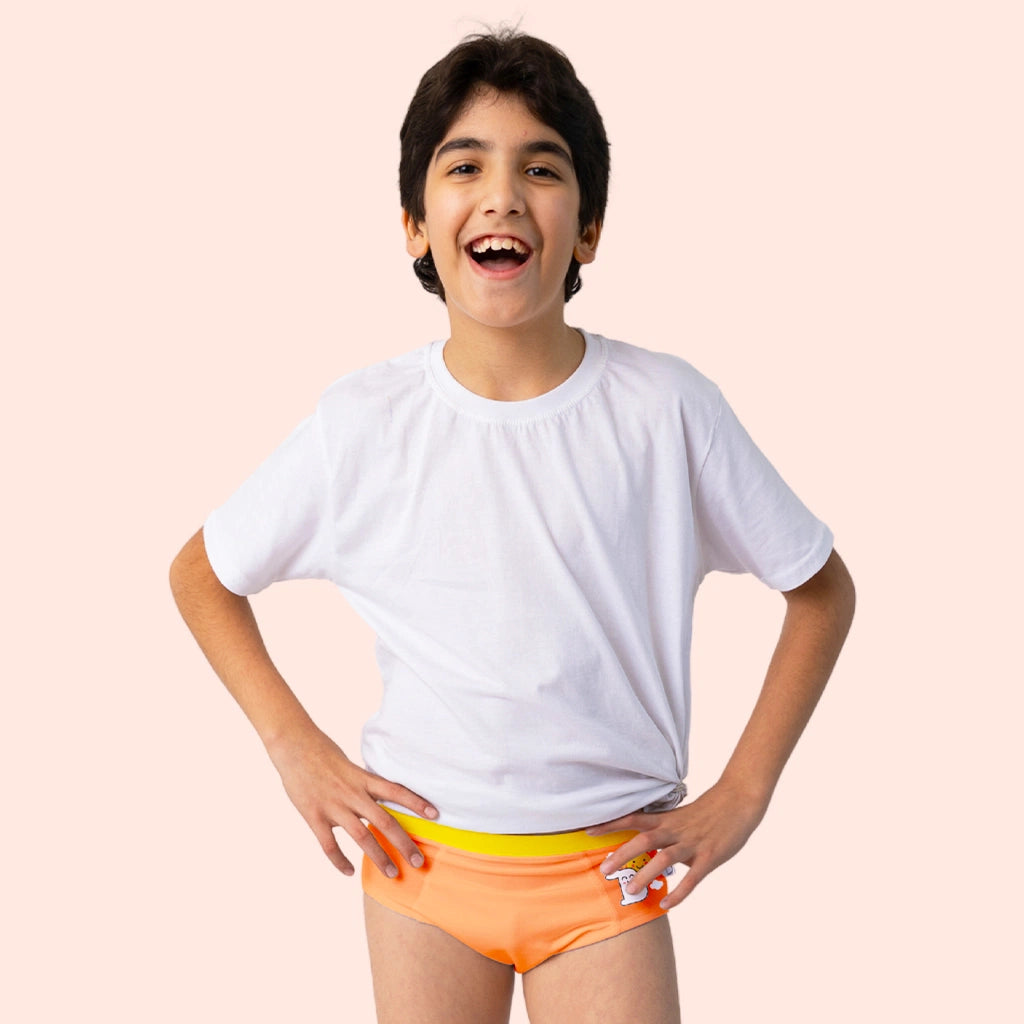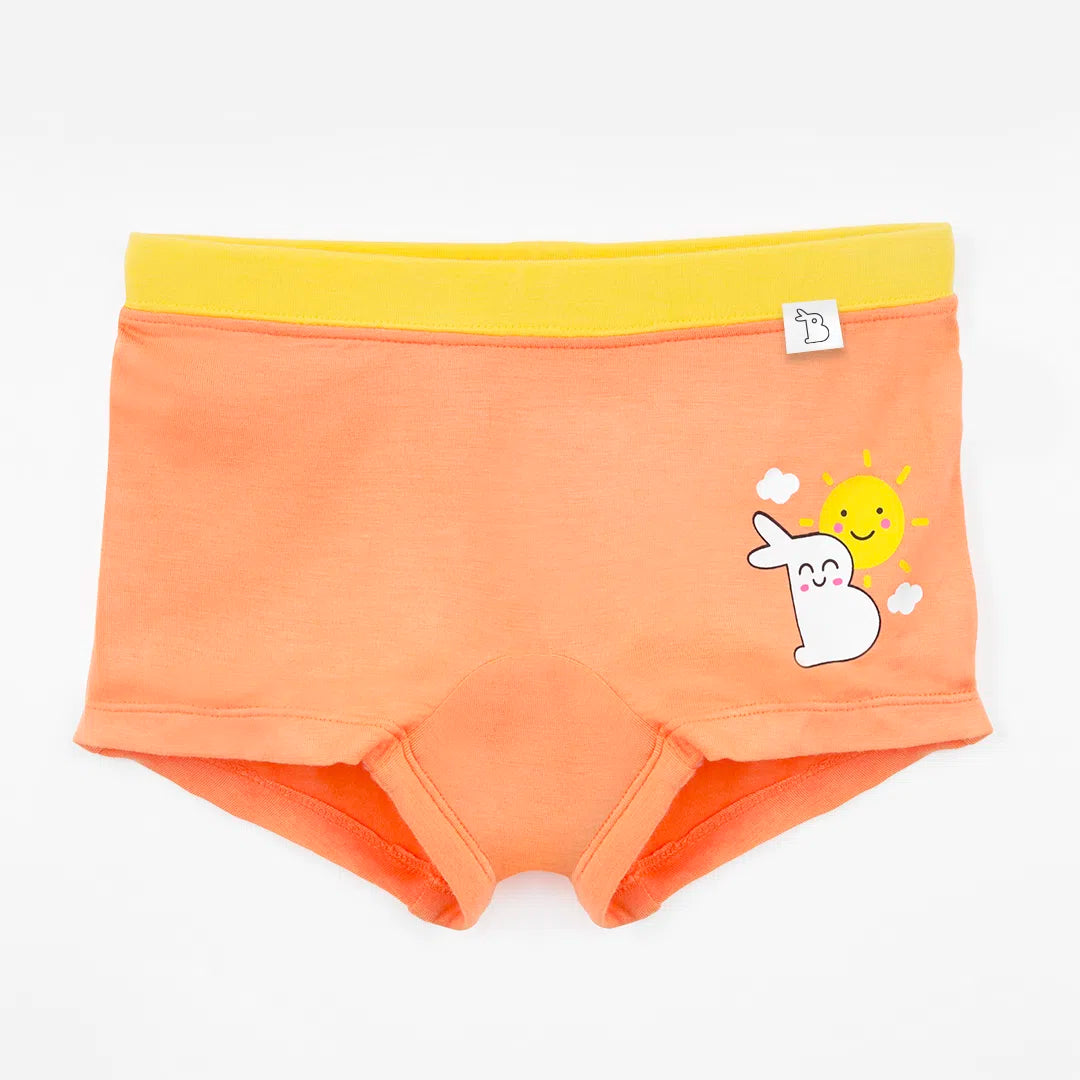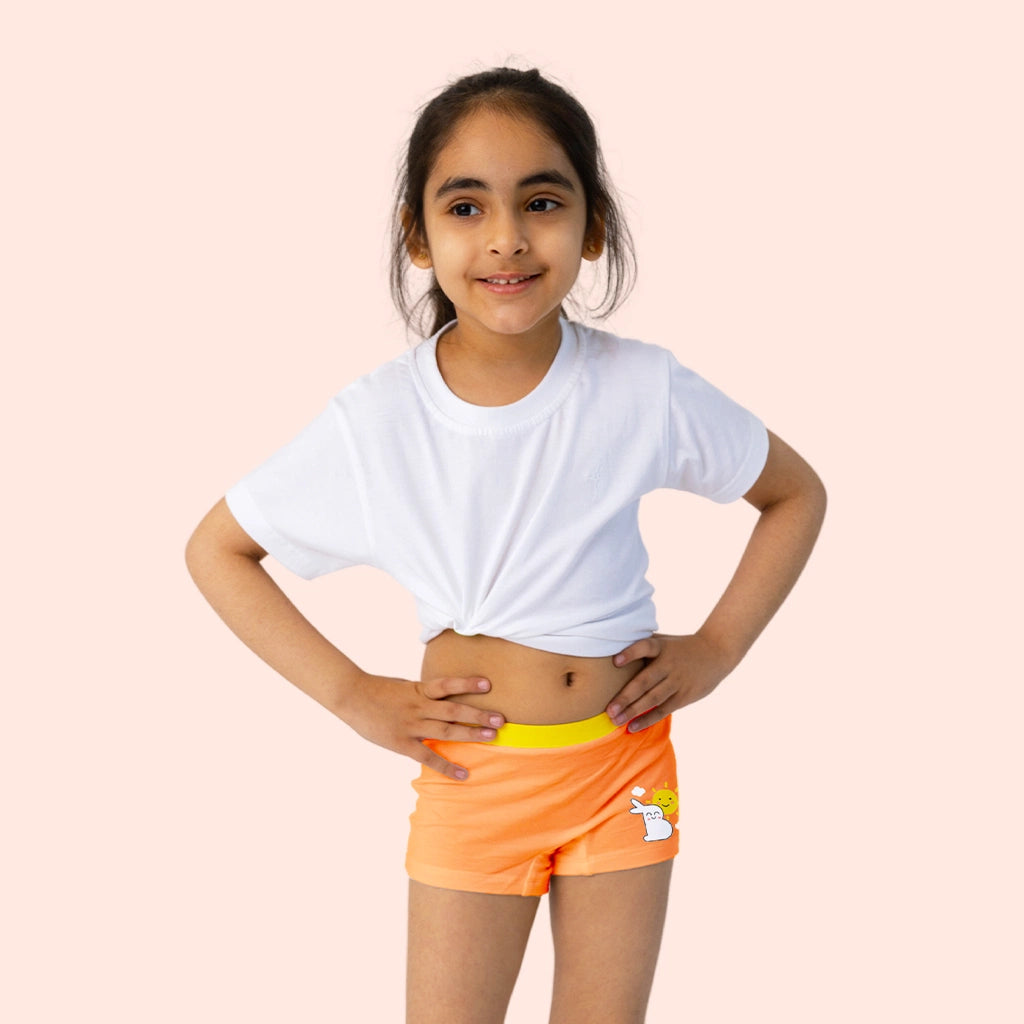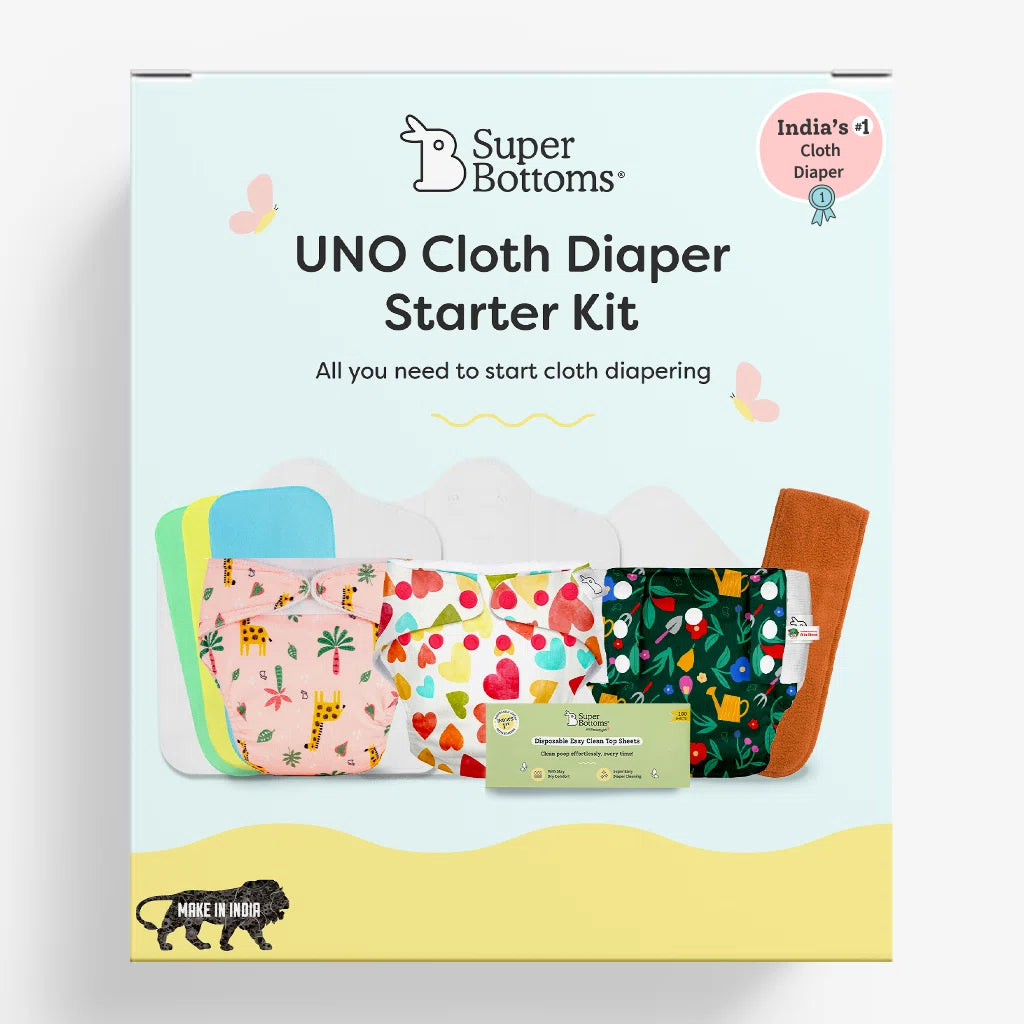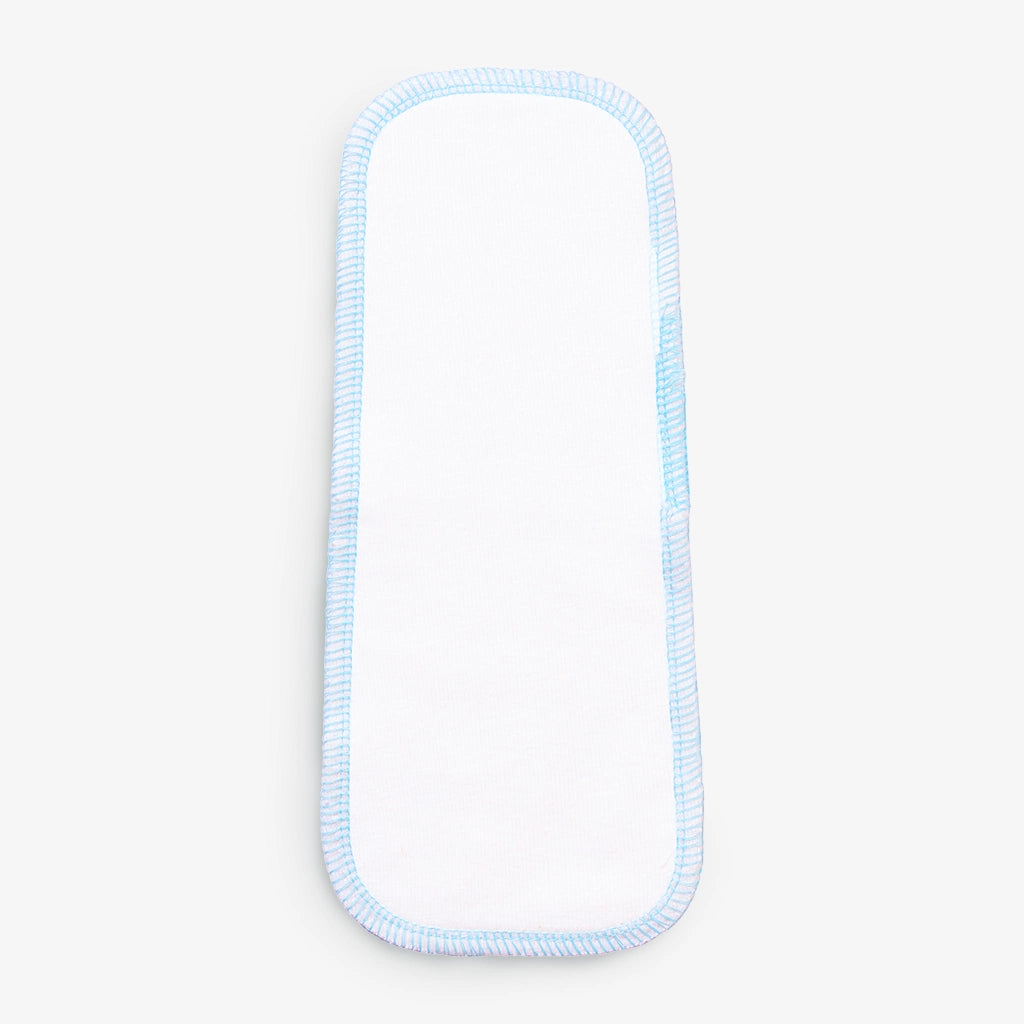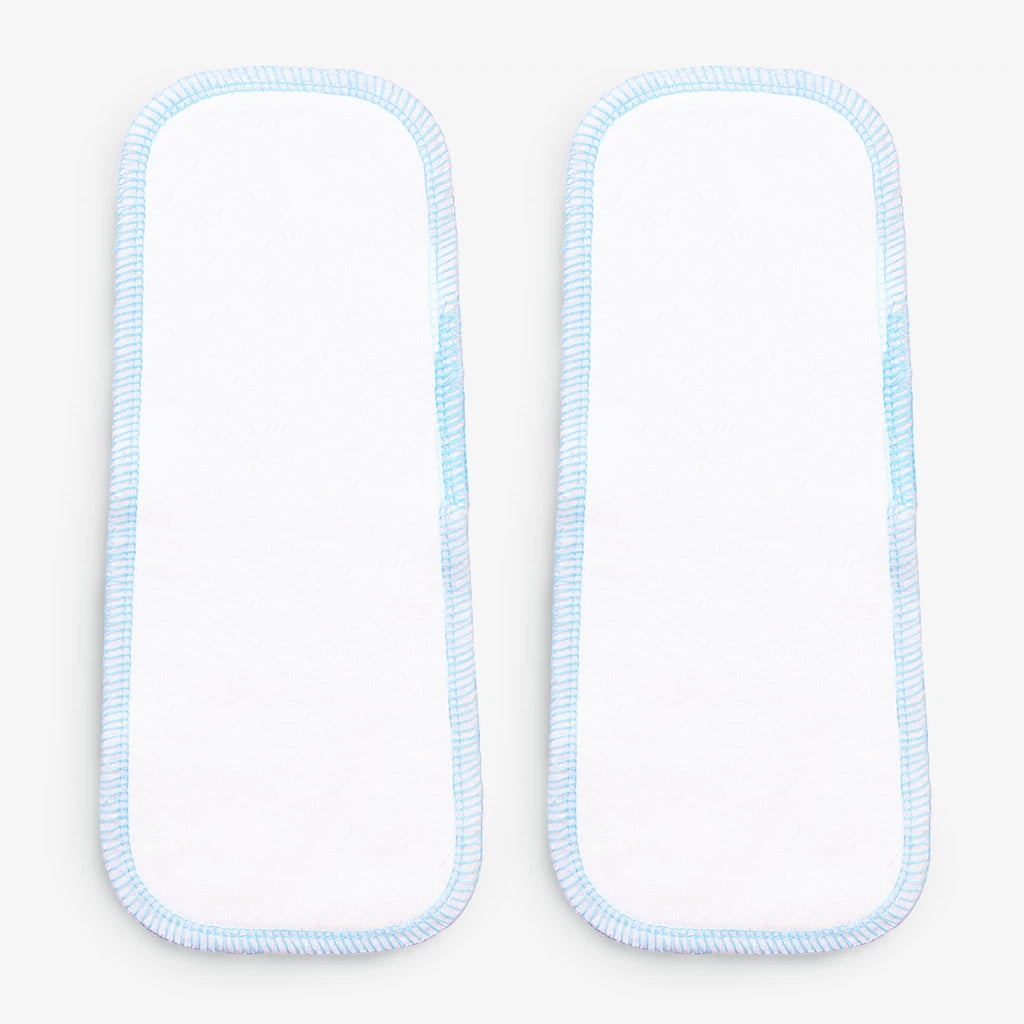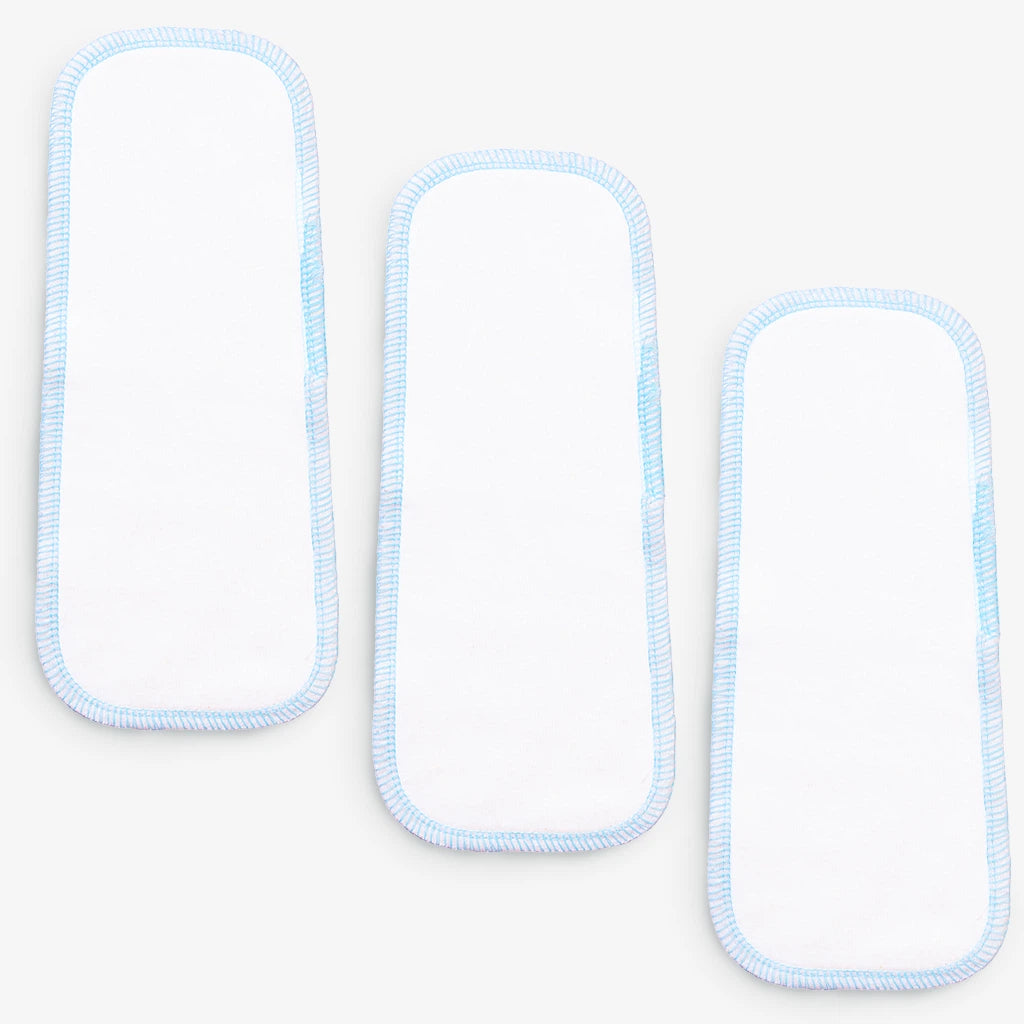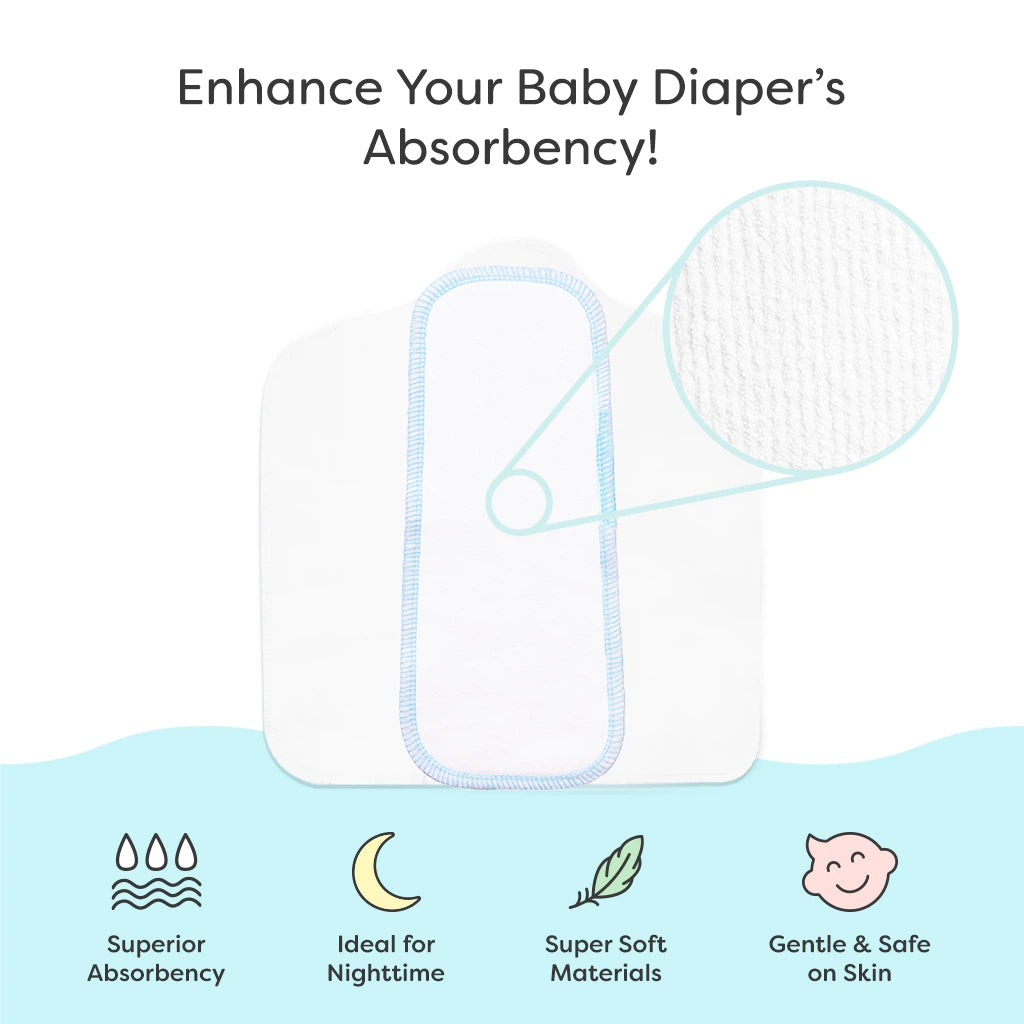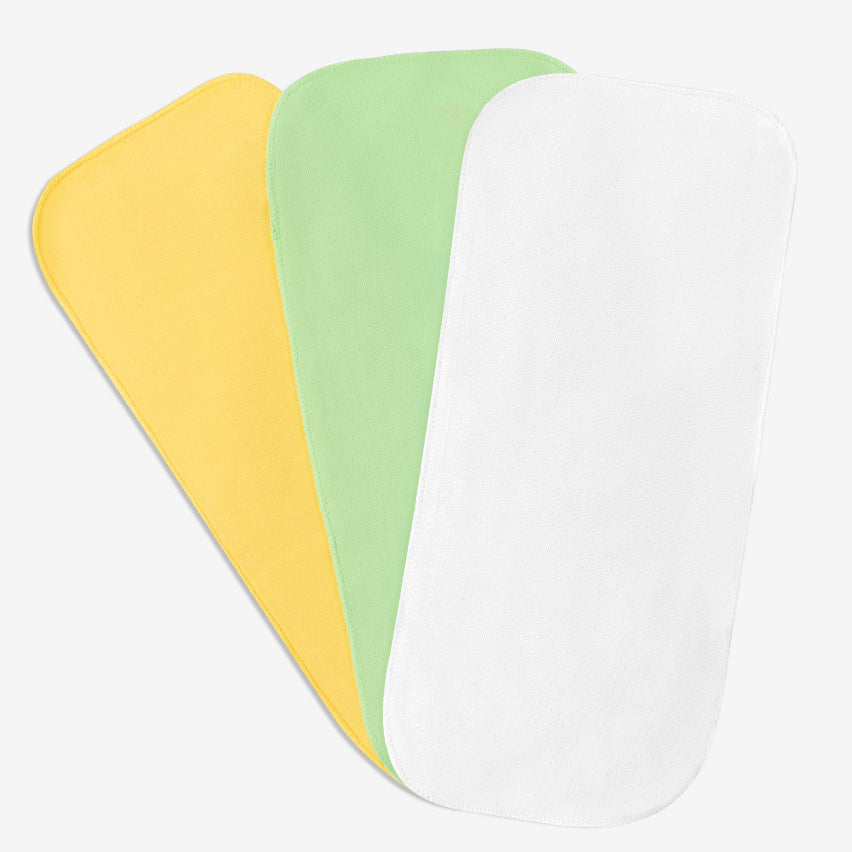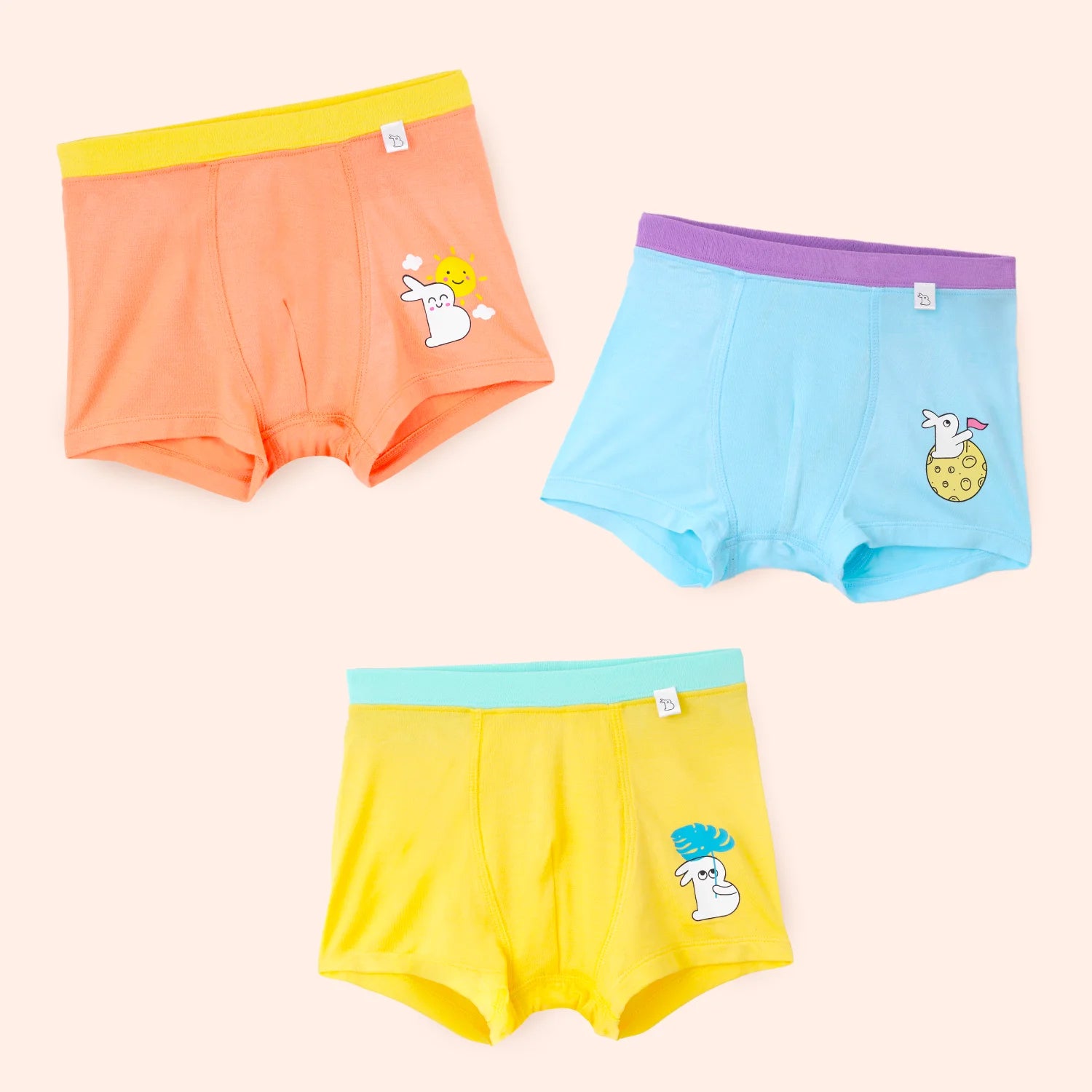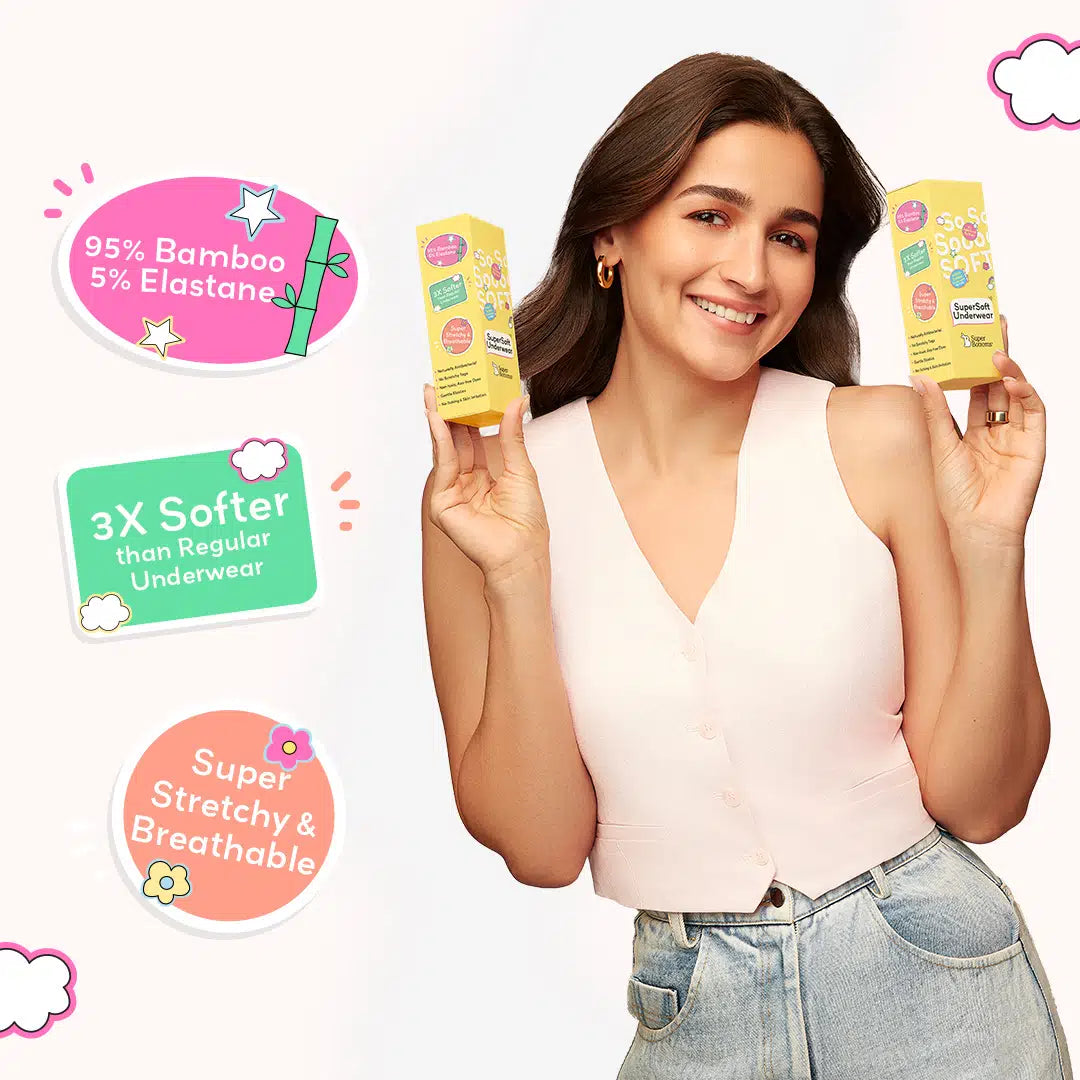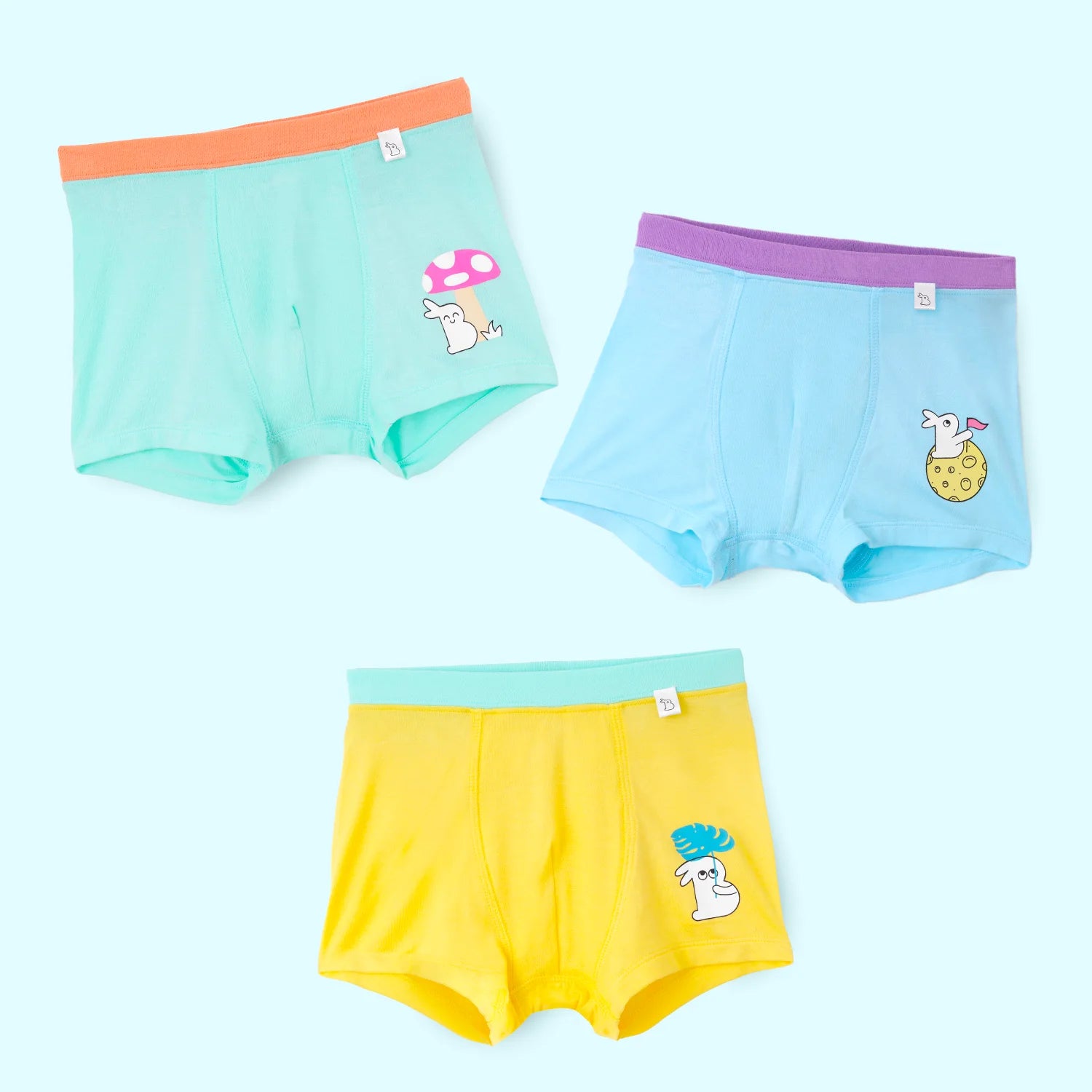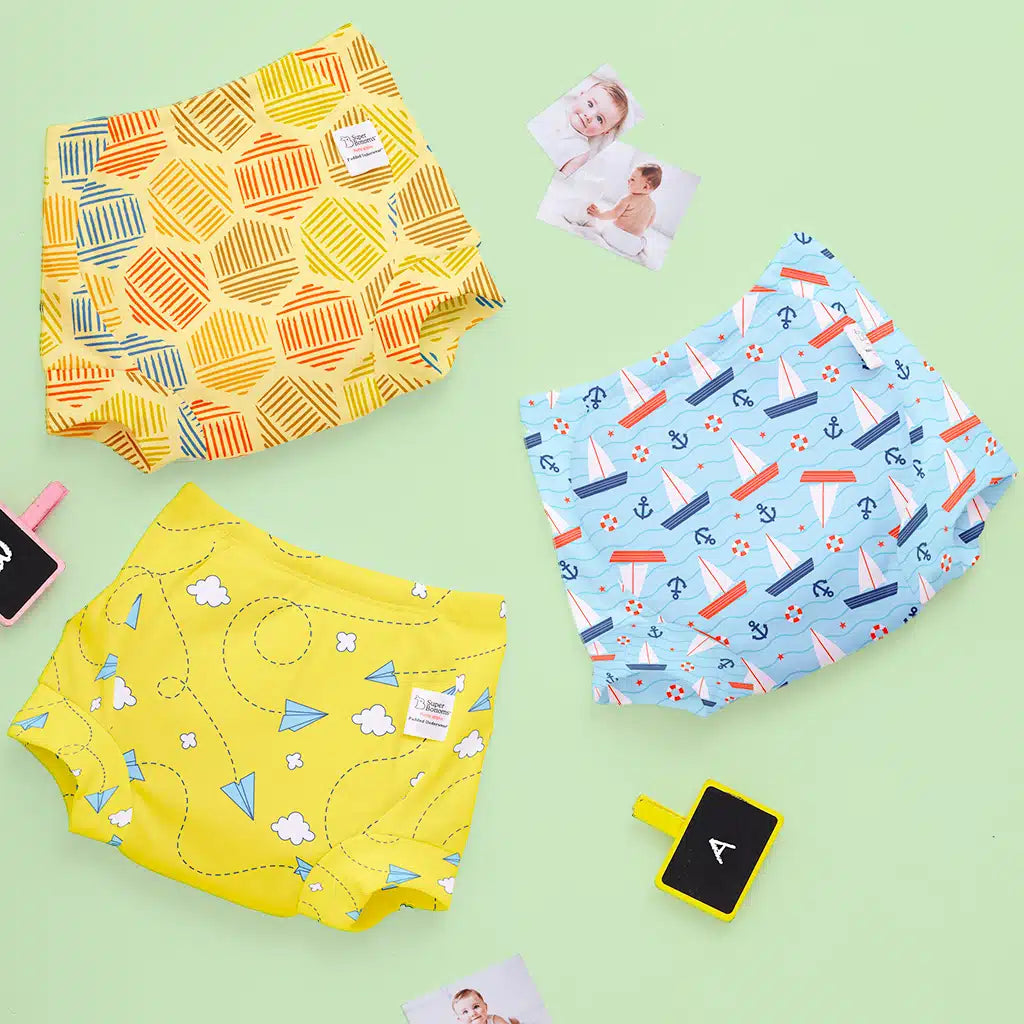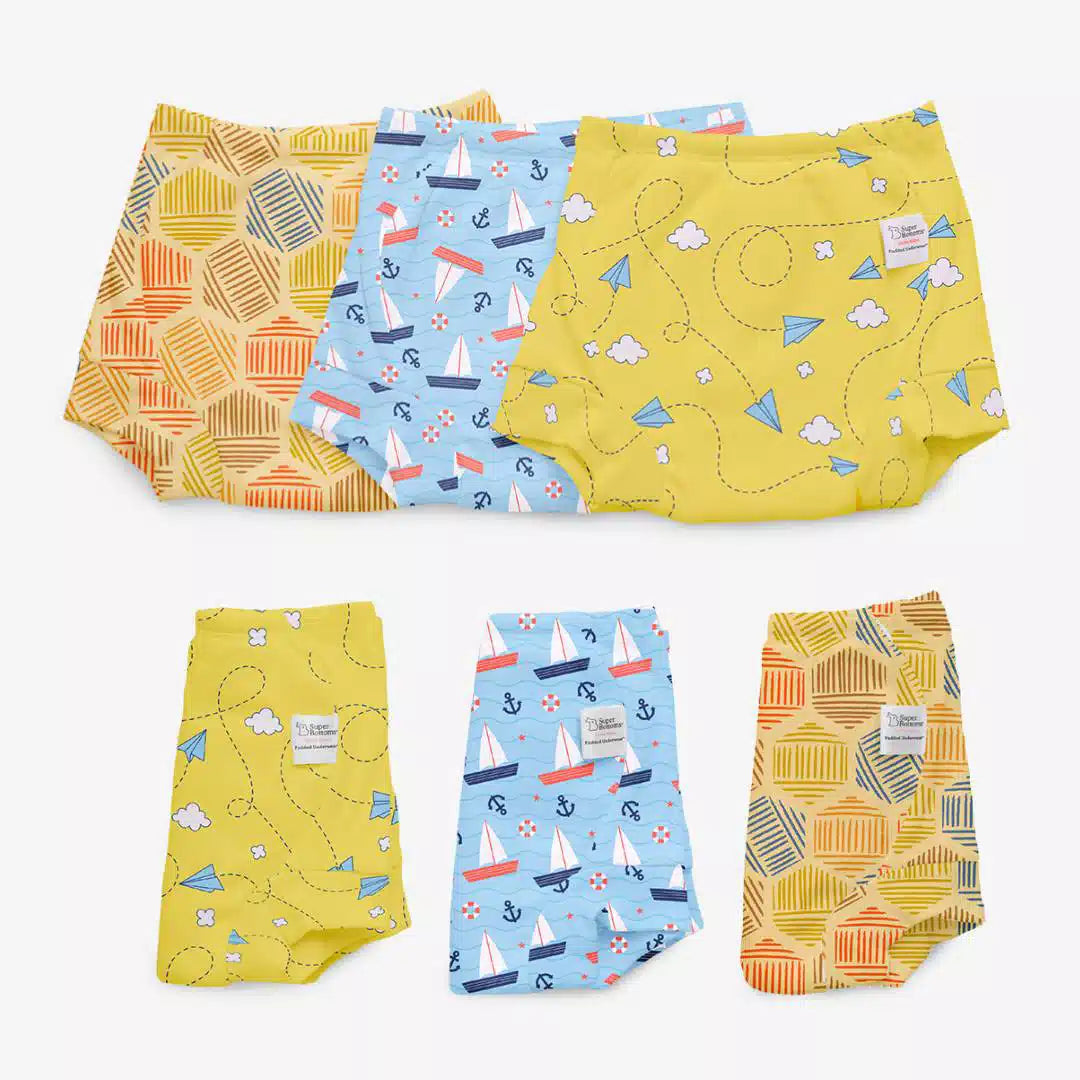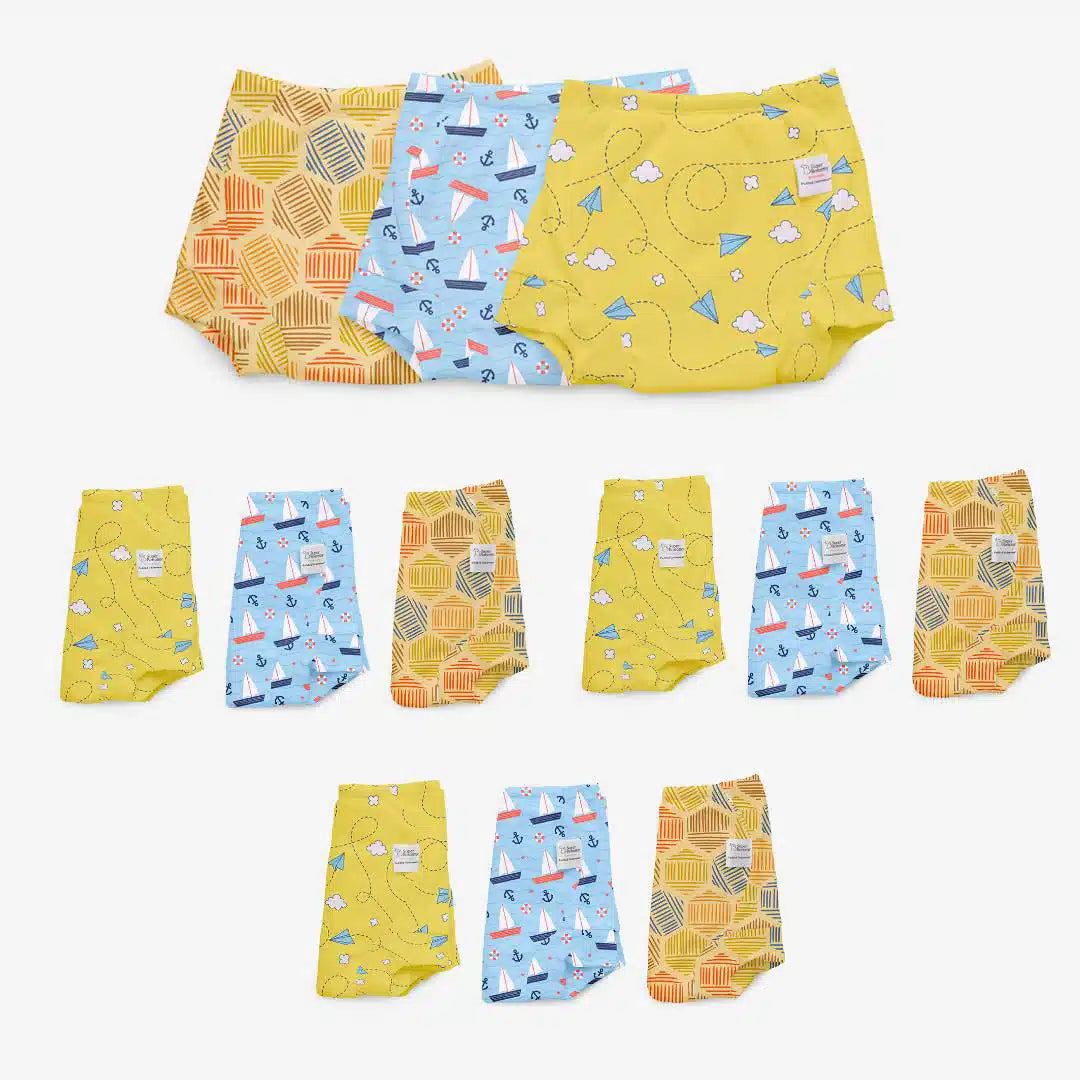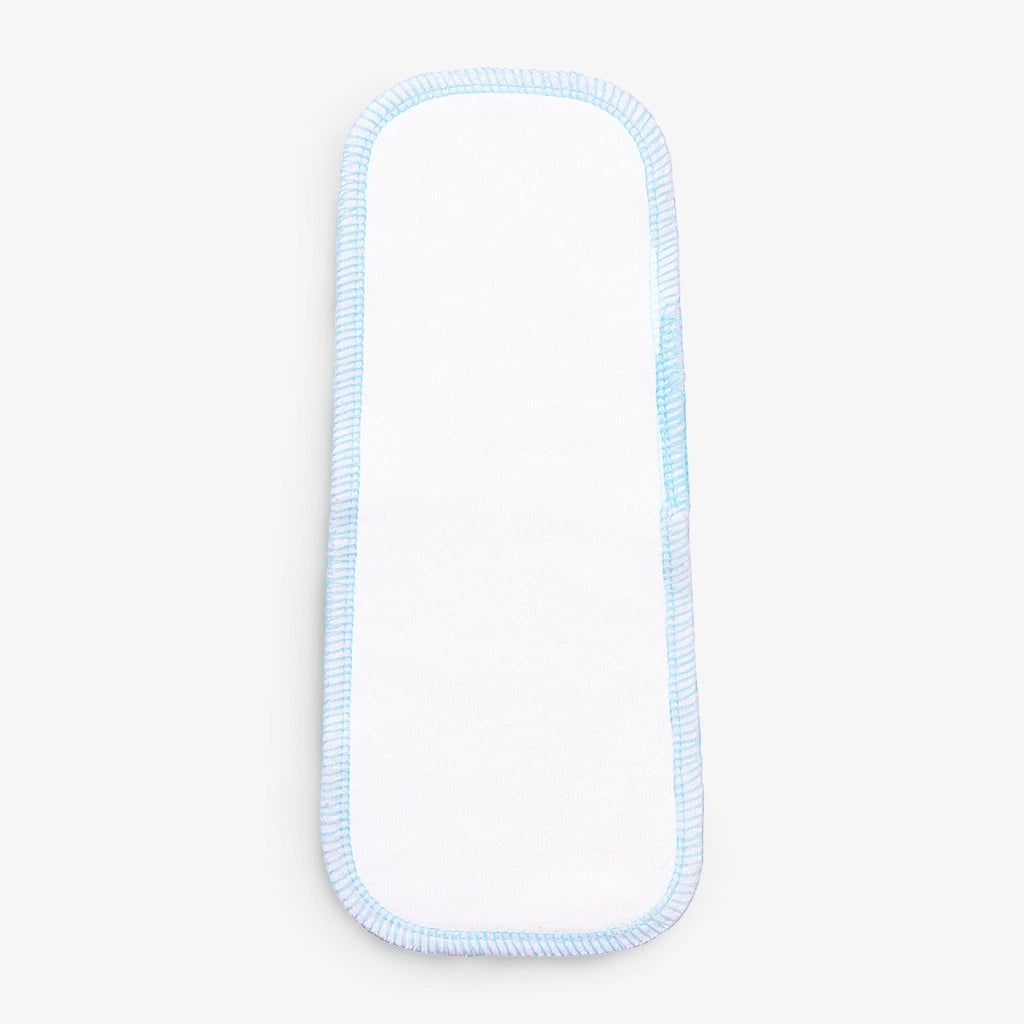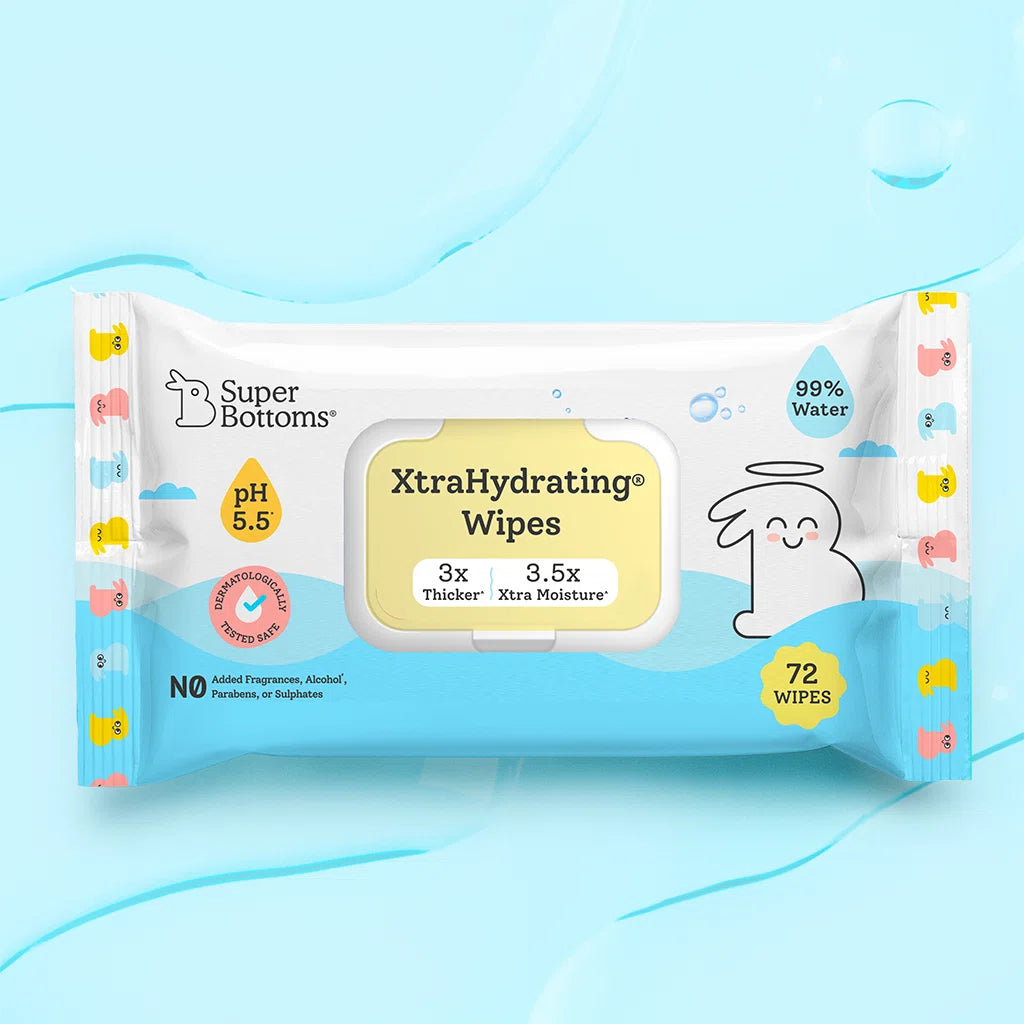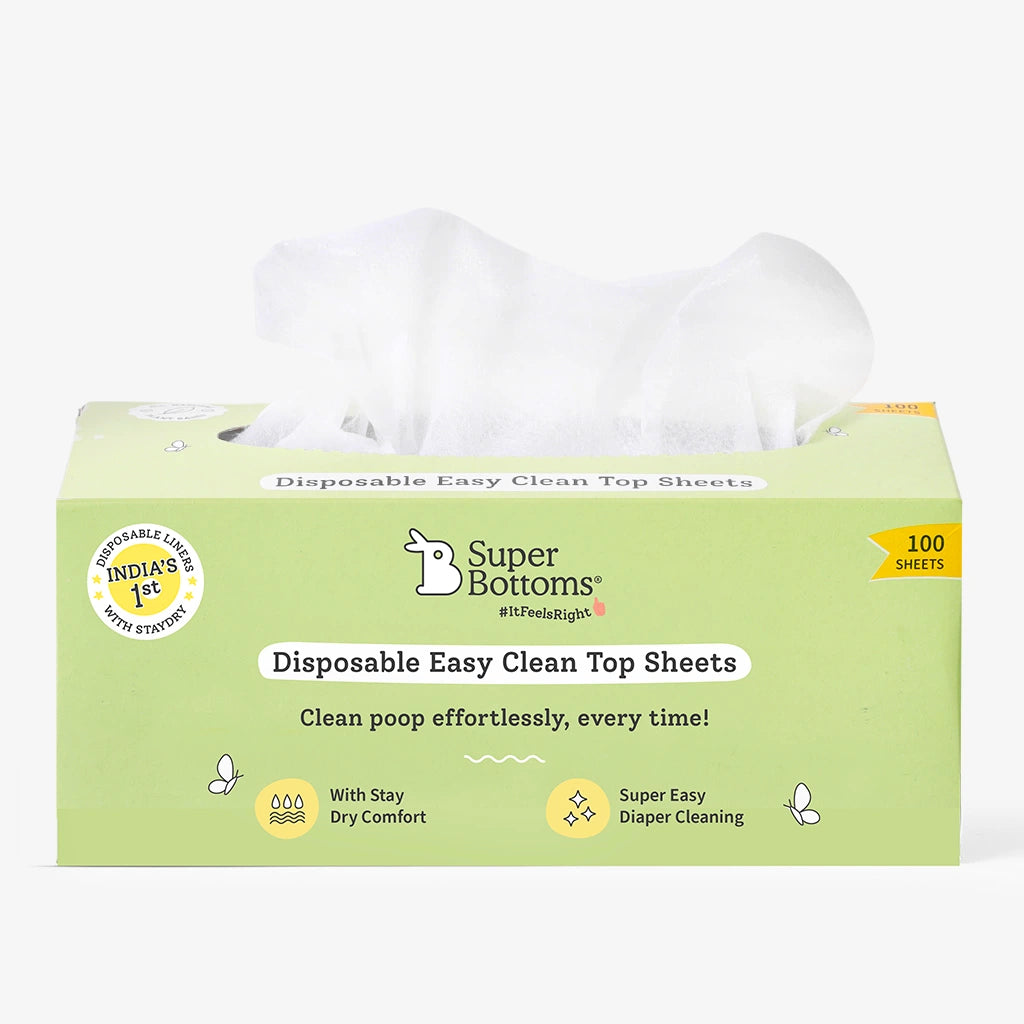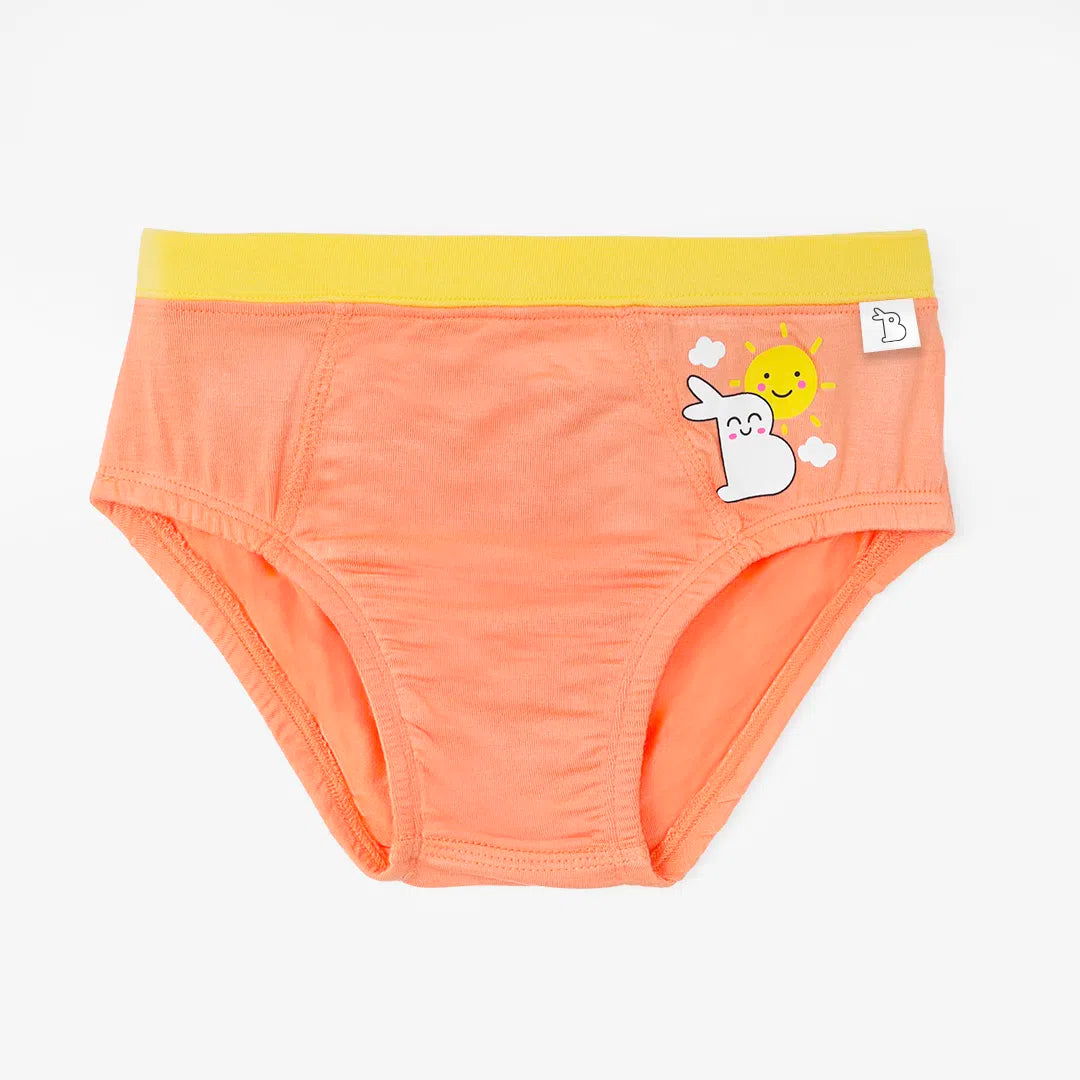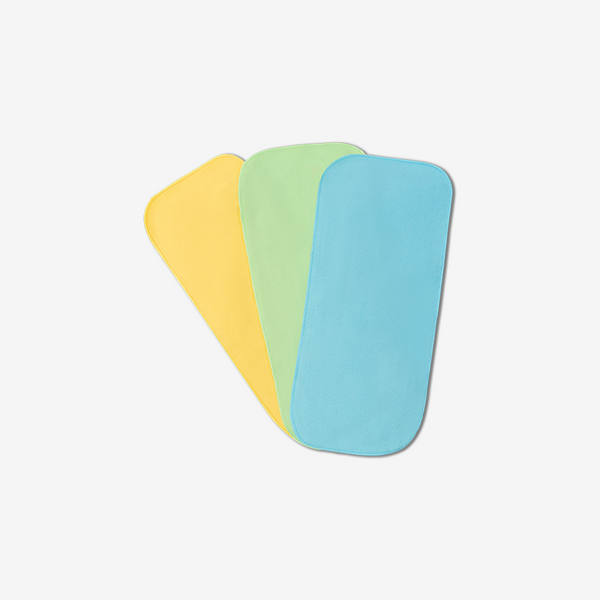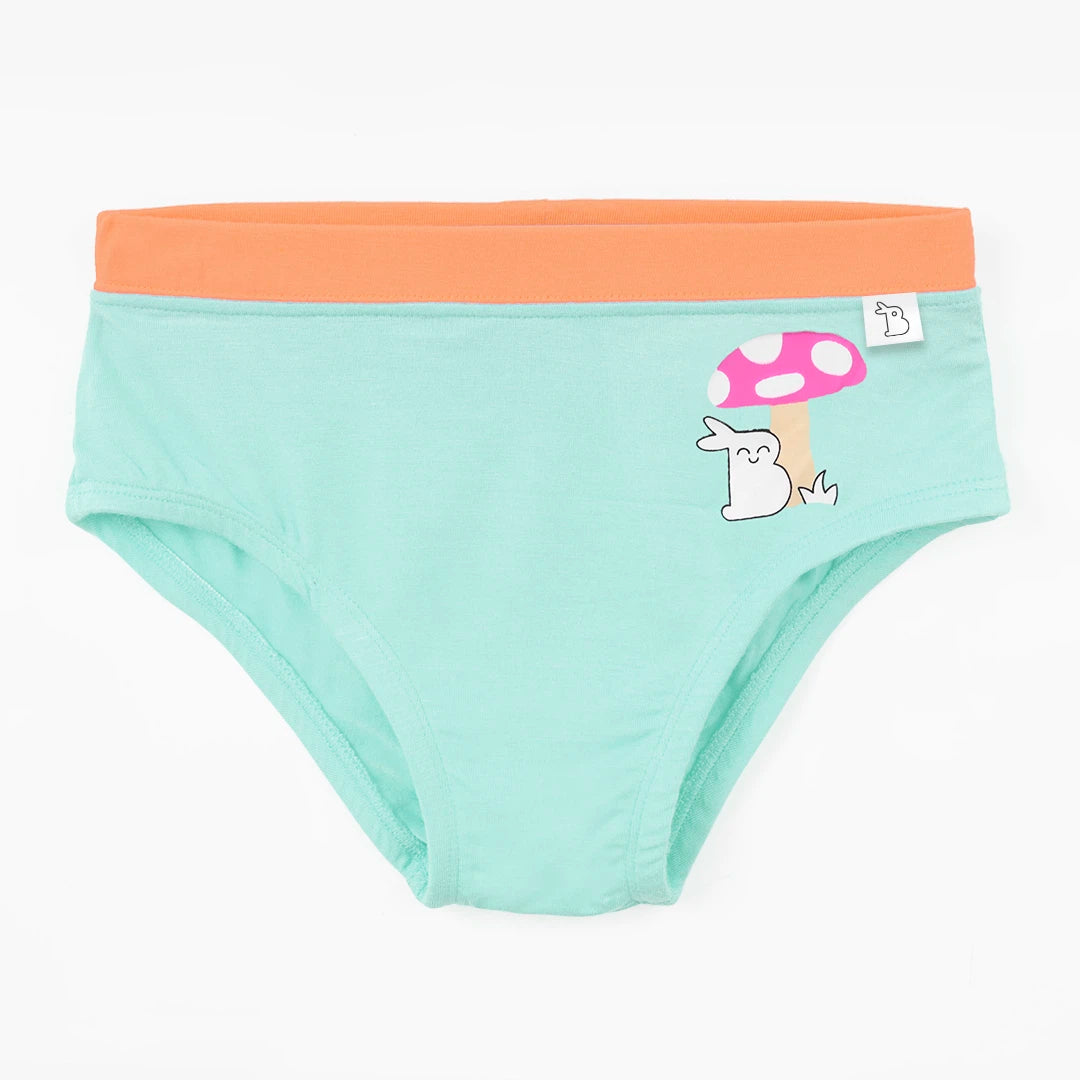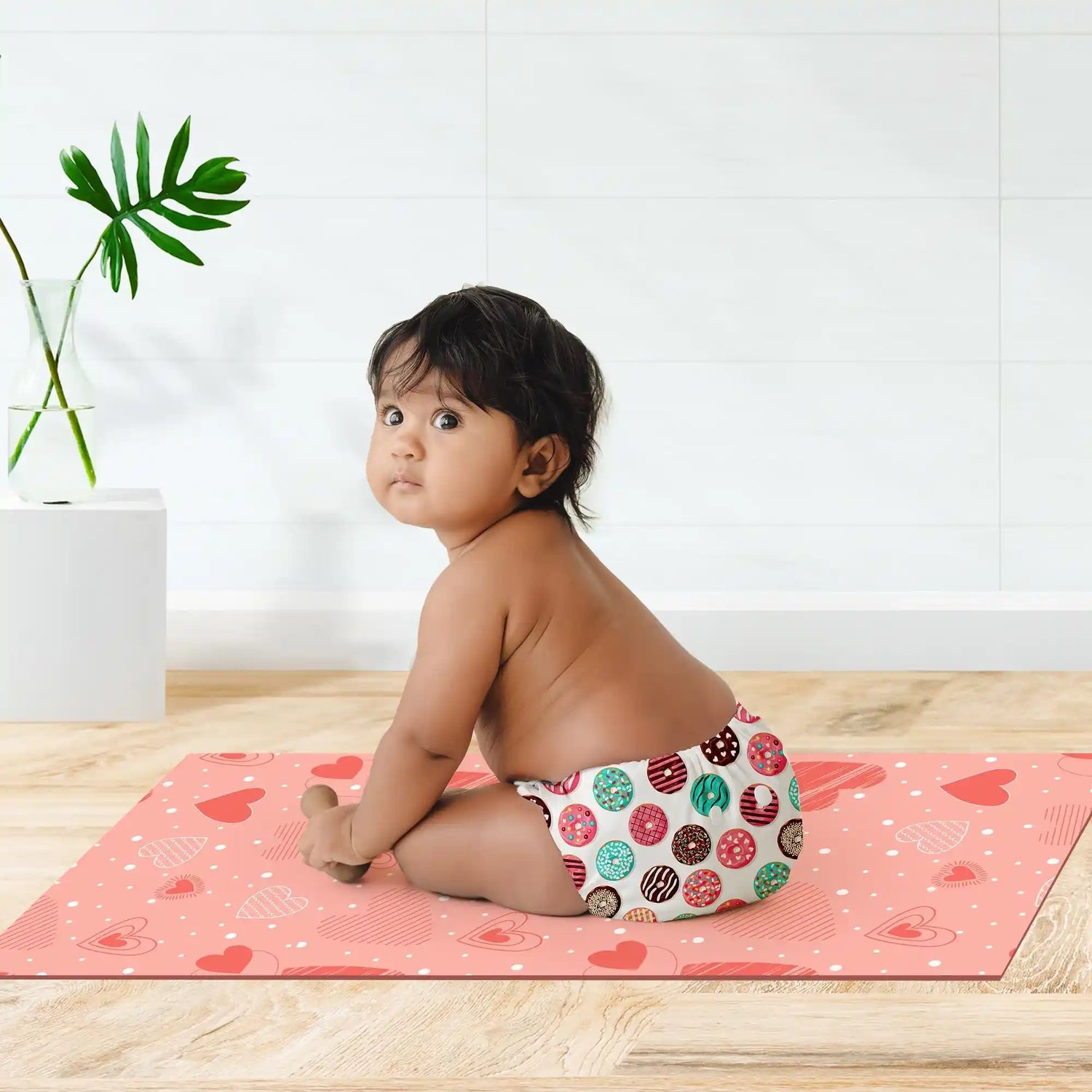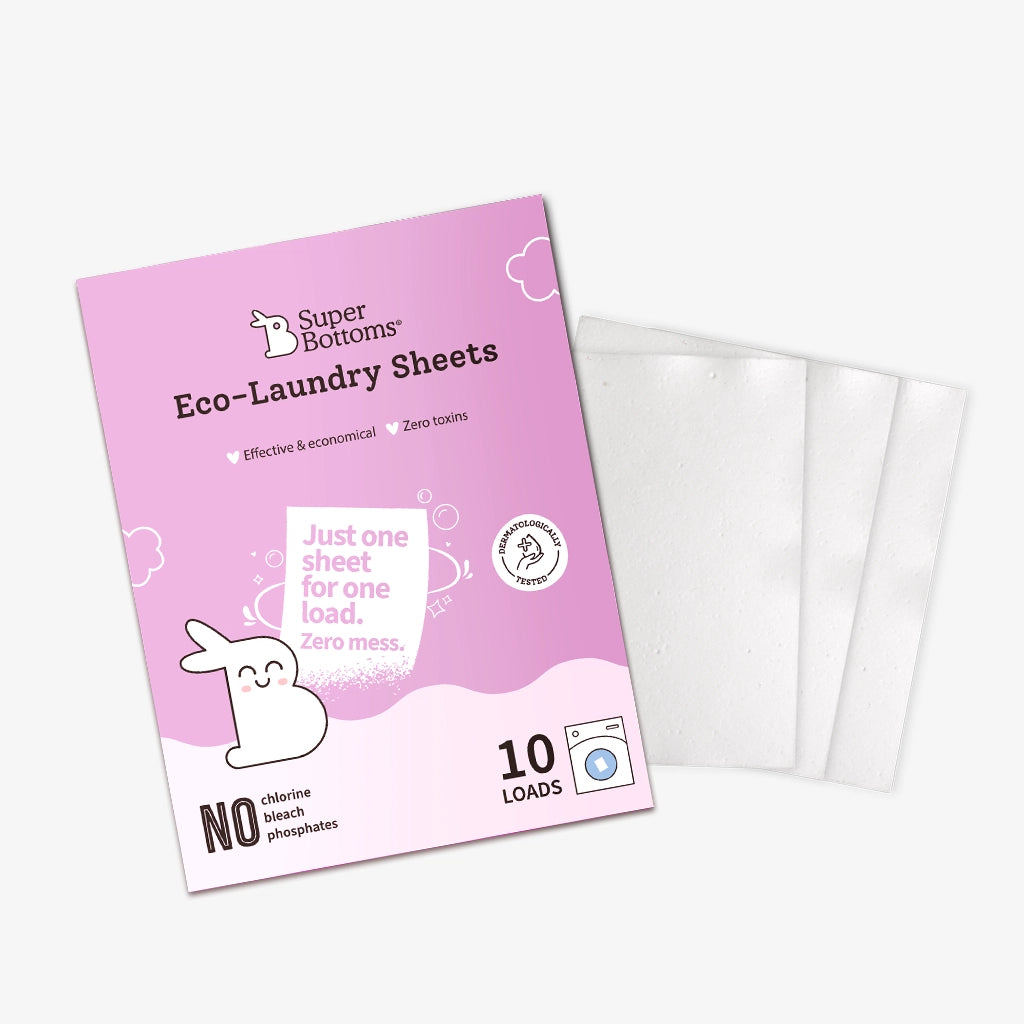1 • Introduction
2 • Signs of Readiness
3 • Getting The Right Equipment and Tools
4 • Challenges You Might Face
5 • Tips For the Success of Potty Training
6 • Key Takeaways
7 • FAQs
8 • Message from SuperBottoms
As parents, we do a lot to ensure that our kids grow up to become independent individuals. A few of the skills they need to learn early in life are self-feeding, potty training, taking a bath, and washing their hands. Potty training is one of the most basic yet essential skills your toddler will need to master. It is a skill they will use their whole lives, so ensuring it is stress-free and completed on time is very important.
In this article by SuperBottoms, we will help you understand when to start potty training your baby, what equipment and tools you will need, the different techniques for potty training, the challenges you might face, and how to overcome them. So, are you ready to go on this journey with us? Tighten your seatbelts and read on!
Signs of Readiness for Potty Training
The first question that comes to mind for all parents when their baby is ready for potty training is, "When to start potty training?" Are you also wondering the same? If yes, we are here to help you with that!
There is no specific age at which your baby will be ready for baby potty training. When you need to begin depends on their readiness. Here is a list of signs that indicate whether your baby is ready for potty training. Your baby is ready when
1. They can walk or sit for at least a short period independently, without any support.
2. They have a regular poop cycle, for example, they poop every morning, after lunch or after their nap time, etc. This will help you with predicting their poop time and train them better.
3. They do not suffer from constipation and have soft poop. If your baby has constipation, wait to begin potty training till it is completely cured.
4. They can communicate with you using sign language, gestures or words to communicate needs like hunger, thirst, pain, etc.
5. They are ready to be able to pull their pants up and down independently.
6. They have at least a two-hour gap between two pee cycles.
Our SuperBottoms, Momm, Petra Chihal, from the Parent Tribe, shares her experience of being with too much laundry and wanting her child to be independent, so she decided to start potty training. Read about her experience HERE.
Getting The Right Equipment and Tools
Potty training is no rocket science, thus you do not need much to potty train your baby. In rural areas, people do not even use potty seats, but still potty train their babies and take them completely off diapers and on regular Underwear.
But if you live in urban areas and wear things that make your life easier, why not avail yourself of the benefits of those products? Here are a few products that can help you with baby toilet training.
1. A Potty Seat – Before progressing to using a regular adult-sized toilet seat, it is a good idea to help your baby gain confidence and security by introducing them to a baby potty seat. Using a proper potty seat will also help your baby learn the correct posture for sitting while pooping and form that habit from an early age.
2. Padded Underwear – A proper pull-up style underwear is vital for your baby to get potty trained. If they are still in Cloth Diapers, they will not be able to understand their body cues to poop and pee, as the diapers are absorbent and prevent them from feeling moisture against their skin.
Padded Underwear, on the other hand, can hold only one pee. The baby feels the moisture, thus making them feel icky. This encourages them to take the baby training pants off and use the potty seat instead of peeing and pooping in the pants/diapers.
3. A Book About Potty Training – Many parents love to teach their kids using stories, music and flash cards. There are many good books available that help your babies understand that grown-ups use a toilet seat to pee and poop, not that they are also grown-up kids who need to do it too. This encourages them to develop the habit of using toilet seats, wiping their bum and washing their hands early on.
Challenges You Might Face During Potty Training
As mentioned earlier, while potty training for some parents might be a piece of cake, for others it takes a lot of time and patience. There might be lapses, delays, emotional breakdowns and much more. Let us understand the challenges you might face during potty training.
1. During the initial stage, it is not easy for a child to control their bladder while communicating the need to go to the toilet, reach the toilet, pull their pants down and sit on the toilet. Thus, there is a chance that accidents might happen and your baby might pee or poop in the Padded Underwear for kids, even if they know how to use the potty seat properly.
2. Your baby might feel icky and disgusted in regular Underwear that does not soak the pee running down their legs. They might ask you to put the regular cloth diaper on from time to time.
3. Your child might not realise the body cue to get up and go pee while sleeping and thus wets the bed in their sleep.
4. The child may realise anxious wfeelings about the feelings about the ase of boys, if you are training them to stand and pee, they might take time to get their aim right and pee all over the toilet seat.
6. If your baby is withholding poop or pee in fear of using a toilet seat, it can lead to severe constipation or bladder infection.
Tips To Overcome These Challenges
Potty training is not just being able to sit on a potty and pee/poop. It also includes identifying the urge to pee/poop, cleaning the bum, flushing the toilet, washing hands, etc. Thus, involving your toddler in the whole process instead of just making them sit on a pot always helps.
Here are some tips from shared experiences on how you can get your little one to master the skill:
1. Ask them to choose a potty seat, a song, or a book to use while they are on the seat. Give them ownership of the process.
2. For every successful attempt, shower them with praise and positive reinforcement. More importantly, do not criticise or demotivate them for any accidental pee or poop.
3. Make a schedule for them and follow it. The easiest way to reinforce a schedule is to start a washroom routine before bedtime and first thing in the morning.
4. Lead by example. Every time you use the washroom, tell your toddler that grown-ups always use the seat when they need to pee or poop, and that now that they are growing up, they should do the same. Show them how to wash their hands after using the washroom by doing it in front of them.
5. Pretend-play, where they get to potty-train a doll/toy, is also a good way to encourage kids.
6. Do not make time on the seat all about peeing and pooping. Instead, let them spend some extra time on the seat getting comfortable instead of flushing and asking them to get up immediately.
7. Make your child excited about toilet training by involving them in the activity with upcycled toys.
|
Limited Time Offers + Special Gift Sets! Now or never Super SALE is live on the SuperBottoms website! Take advantage of unbeatable value deals on our UNO Cloth Diapers, Baby Essentials, and more. Looking for the perfect present for a newborn or a toddler? Explore our thoughtfully curated Gift Sets & Combos — safe, skin-friendly, and oh-so-cute! A bundle of love for little ones and a delight for parents. HURRY — Deals and Gift Packs are live only till stocks last. Don’t miss the chance to stock up and share the joy! |
Key Takeaways
1. There is no right or wrong age to begin potty training. You need to start when your baby is ready.
2. Use the best Padded Underwear for better success in your baby's potty training journey.
3. Involve your toddler in the process and empower them for potty training success.
FAQs
Ques 1– What is the right age to start potty training my baby?
Ans – There is no right or wrong age for potty training. Kids' potty training does not depend on age but on your child's readiness. Check the parameters outlined in the article to see whether your child is ready.
Ques 2– Which are the potty training pants for toddlers?
Ans – Avoid plastic-coated pants that will seal the pee and moisture in and can cause diaper rashes for your baby. SuperBottoms potty training pants/padded Underwear are made of organic cotton and can absorb liquids, keeping your baby comfortable and helping them with potty training.
Ques 3– How long does potty training take?
Ans – There is no set timeline for how long it will take to potty train a child. While some kids finish complete potty training within just three days, some babies take a few weeks or even months. The key is to keep trying and practice positive reinforcement.
Message from SuperBottoms
Hi there, new parents! SuperBottoms brings you doctor-recommended cloth diapers — the best rash-free diapering solution for your baby’s sensitive and delicate skin. Unlike disposable diapers loaded with chemicals, our newborn cloth diapers, when used and washed properly, can help eliminate the risk of diaper rashes. SuperBottoms offers a wide range of safe, skin-friendly essentials for the whole family — including Reusable Cloth Diapers, Diaper Pants, DryFeel langots for diaper-free time, Padded Underwear for potty training, SuperSoft Underwear for everyday comfort, Joggers for playful days, and Period Underwear for women. Not just for everyday use, SuperBottoms products also make the best gifting choice for babies — thoughtful, eco-friendly, practical, and loved by parents. Now available on Amazon, Myntra, Flipkart, FirstCry, Zepto, Swiggy and Blinkit.



